

Altogether Unique Wine business, research & celebration
BRIght Ideas
Disease resistant vines
The Profile Sir George Fistonich



Altogether Unique Wine business, research & celebration
BRIght Ideas
Disease resistant vines
The Profile Sir George Fistonich
News from our Altogether Unique wine regions, and views on an altogether exceptional vintage
June 25-27, 2024
Marlborough Lines Stadium 2000, Blenheim
Over 3 days, WinePRO will showcase the latest products, new technology, and connect leading suppliers with members of the wine production industry.

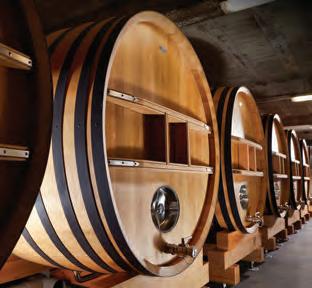
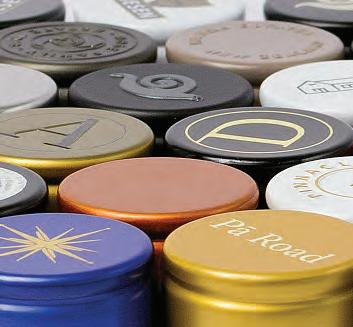
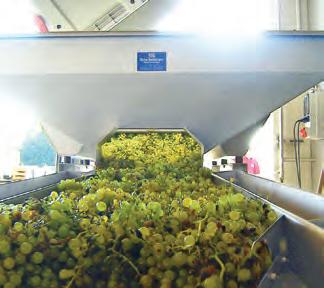
Whether you’re a winegrower, winemaker, vineyard manager or any other member of the wine production industry, WinePRO is the event you don’t want to miss!
Learn from industry leaders with key knowledge. One sentence or piece of knowledge could change the trajectory of your business.


Connect with new people and suppliers in the industry and maybe finally put a face to an old name.



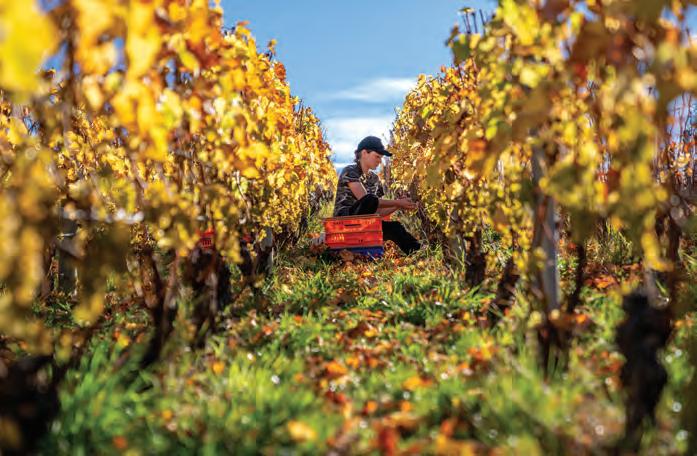
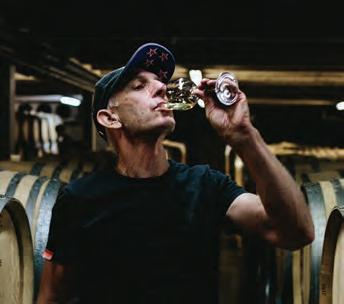
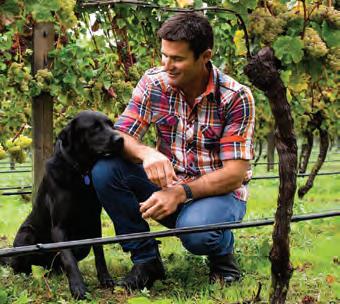


Editorial
Sophie Preece
From the CEO
Philip Gregan
BRIght Ideas
Disease resistant vines
Women in Wine
Jo Burzynska
The Profile
Sir George Fistonich
Point of View
Alex Kahl
Wine Weather
James Morrison
Sustainability Update
Dr Edwin Massey
Altogether Unique
Altogether Unique 2024 is a chance to connect with colleagues, celebrate fresh successes, showcase industry stalwarts, and dig into the business, research and innovation of New Zealand’s wine industry.
Regional Update
With vintage 2024 tucked away in tanks and barrels, we check out news from our Altogether Unique wine regions, and views on a harvest of light crops for many, but great quality for most.
BRIght Ideas
New Zealand’s wine industry is “severely lacking in any diversity”, says the head of a research programme exploring disease resistant vines.
EDITOR Sophie Preece
sophie@sophiepreece.co.nz
CORRESPONDENTS
North Island
Joelle Thomson
Emma Jenkins MW
South Island
Claire Finlayson
Katy Prescott
Stephanie McIntyre
ADVERTISING
Upper North Island: Stephen Pollard
stephenp@ruralnews.co.nz
Ph: 021 963 166
Central & Lower North Island: Lisa Wise lisaw@ruralnews.co.nz
Ph: 027 369 9218
South Island:
Kaye Sutherland kayes@ruralnews.co.nz
Ph: 021 221 1994
CIRCULATION & SUBSCRIPTIONS
Sarah Adams saraha@nzwine.com 027 700 0740
New Zealand Winegrowers PO Box 90 276, Auckland Mail Centre, New Zealand
PUBLISHING & PRE-PRESS
Rural News Group
PO Box 331100, Takapuna, Auckland 0740
Ph: 09 307 0399
Location: Top Floor, 29 Northcroft Street, Takapuna, Auckland 0622
Publisher: Brian Hight
Managing Editor: Adam Fricker
Production: David Ferguson, Rebecca Williams
Published by Rural News Group Ltd under authority of New Zealand Winegrowers Inc. Unless directly attributed, opinions expressed in the magazine are not necessarily those of Rural News Group and/or its directors or management, New Zealand Winegrowers Inc. or its constituent organisations. Published every second month. One free copy is mailed to every member of New Zealand Winegrowers Inc, New Zealand Society of Viticulture & Oenology and the New Zealand Vine Improvement Group, and to such other persons or organisations as directed by the owners, with provision for additional copies and other recipients to be on a subscription.
ISSN 1174-5223

In this edition we check out vintage perspectives from around New Zealand, with many reporting lighter than typical yields in a delightfully disease-free harvest. Dry, warm days meant some walked an irrigation tightrope, but sidestepped the pressure to pick that can come with poor weather and heightened disease risk. There’s plenty of talk of extraordinary wines, but also of the financial pressure that comes with a light harvest, as the cost of production soars against a backdrop of high interest rates. “Things are getting tight out there,” Geoff Wright says from Gisborne, where Cyclone Gabrielle hit the 2023 harvest hard and 2024 yields are significantly down. The region needs a harvest with good weather and good yields, “and consumers drinking a bit more New Zealand wine too”. WK Advisors and Accountants Director Hamish Morrow notes that given the flattening out of demand since the Covid-19 years, when New Zealand wine performed very well, the lower than average yields in Marlborough are relatively useful. “At a Macro industry level having a lower yielding year is likely preferential to a high yielding year if the market demand is not there.”
As well as views on this year’s harvest, this edition takes a look at news coming from the wine regions, from a 50-year Kumeu River work anniversary for Nigel Tibbits, to a new Craggy Range worker village in Wairarapa, to drone spraying at Nelson’s Abel, to the Central Dozen selection from Central Otago. In an industry rich with innovations and updates, the focus feature provides a taster. There’s plenty of news on the horizon too, with Grape Days and WinePro coming up, as well as the two-day New Zealand Wine, Altogether Unique programme, a celebration of our wine people, and an exploration of wine research, innovation, and business. It’s a great line up for an industry that seems ever-eager to leap challenges and embrace opportunities.
Sophie Preece EDITOR
Emma Jenkins MW

Claire Finlayson

Katy Prescott



It’s doubtful Sir George Fistonich needs an introduction in this magazine, says Emma Jenkins MW. “But it’s still remarkable to reflect upon the genesis and outcome of his relentless drive and energy.” Emma also kicks off her Mastering Wine (MW Musings) column in this edition.
Go to page 46
“Listen to some of Vivaldi’s Spring with a high acidity wine like a Riesling,” Jo Burzynska advised Dunedin-based writer Claire Finlayson in an interview for this edition. “But when a glass of wine was put in front of me, the imminent gustatory thrill was such that I clean forgot to switch my ears on,” Claire says. A work in progress.
Go to page 50
When Marlboroughbased wine marketer Katy Prescott joined Outdoorsy founder Michelle Morpeth on a tramp through Kawakawa Station in 2022, the experience “was a complete reset”. Winegrower magazine is delighted to welcome Katy to the stable of contributors, starting with an exploration of the great Outdoorsy.
Go to page 52
With over 20 years’ experience working with the wine industry throughout the New Zealand Pacific region, we understand what it takes to enhance productivity and decrease costs for your winery. We can help you make your vintage a success by:
• Controlling fermentation
• Providing temporary cooling for cellars or other critical functions
• Providing additional power when needed
We are on call 24 hours a day, seven days a week to serve you.
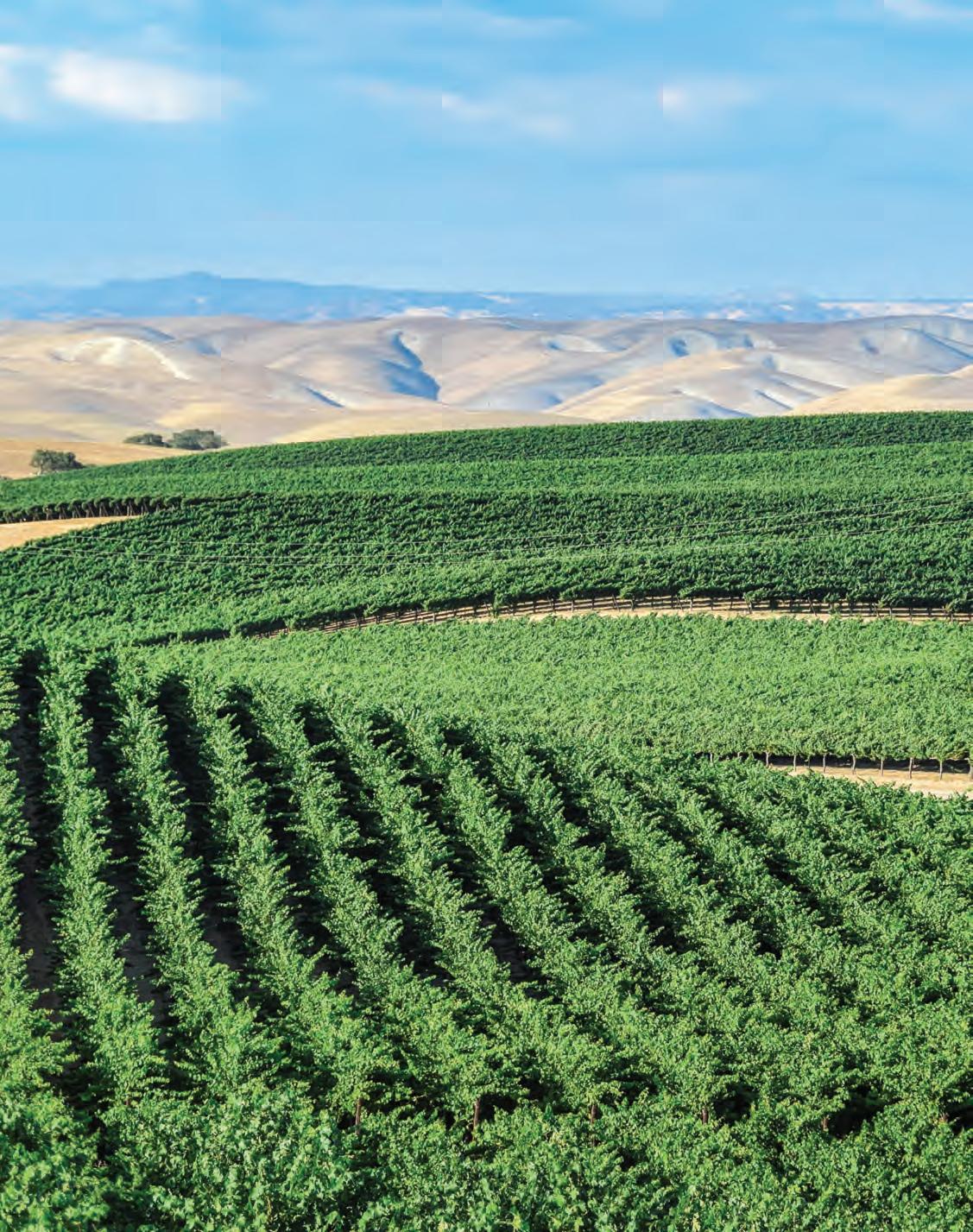
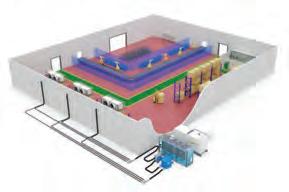
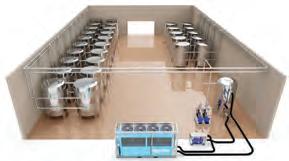
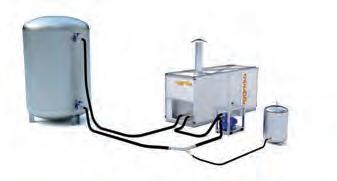

The news could not have been more concerning – an industry member deliberately and illegally imported grapevines into New Zealand, and then grew those vines in one of our major winegrowing regions, thereby threatening the livelihoods of friends, neighbours, and colleagues in the industry, and potentially the wider primary sector. It is hardly believable but that is the exact scenario revealed in a recent court case.
The only good news in this case was that the deception was discovered because other industry members became aware of the situation and ensured the authorities were notified. The plants were identified and destroyed, and we are fortunate that no new diseases or pests were introduced into the country.
“The recent court case is a timely reminder of the risks to the industry from any biosecurity incursion. It highlights the need for robust border protections and sound planning on vineyards.” Philip Gregan
Also pleasing to see was the seriousness with which the Ministry for Primary Industries viewed the matter. Their biosecurity team swung promptly into action, they destroyed the plants, and they prosecuted. Those are good outcomes; they were needed to protect our industry’s biosecurity, and that of the country as a whole.
Biosecurity risk ranks high on the industry, and New Zealand Winegrowers (NZW), risk registers. As a new world country we are fortunate not be exposed to a numbers of pests and diseases that plague
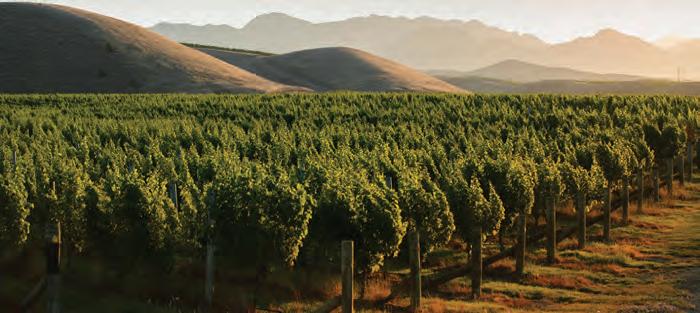
colleagues in other countries. Prominent examples include the likes of Pierce’s disease and the brown marmorated stink bug (BMSB), both of which are high on our most unwanted list.
Protecting the biosecurity status of the industry is a top priority for NZW. In 2017 we became a signatory to the GovernmentIndustry Agreement (GIA) Deed, to partner with the government in postborder biosecurity readiness and response decision-making. We have two full time staff working solely on biosecurity matters, while Dr Edwin Massey, our General Manager Sustainability, has a strong biosecurity background.
As a GIA signatory we work very closely on all aspects of biosecurity with the government and other industry bodies. Sophie Badland, our Biosecurity & Emergency Response Manager, chairs both the BMSB Council and the Xylella Action Group. We have a dedicated biosecurity levy in place (currently zero rated) should we need to fund our share of a biosecurity response costing NZW more than $1 million, while we have a dedicated biosecurity reserve for smaller responses. And high on our requests to the incoming government was funding for the new national plant quarantine facility.
On-vineyard biosecurity is just as important as the protections at the border. If there is a biosecurity issue, we need to know where the vineyards are that may be
impacted – hence why we ask members to complete the Vineyard Biosecurity Register each year. In 2020 we introduced biosecurity planning into Sustainable Winegrowing New Zealand (SWNZ) and for the 2025/26 season having a biosecurity plan will be a compulsory component of SWNZ accreditation. We, and you, need to be ready if there is an incursion; that’s what biosecurity plans are all about.
All this activity reflects the risk to the industry, its 42,000 hectares of vineyards, and all its other investments, from an unwanted biosecurity incursion. If new pests or diseases evade the biosecurity measures in place at our border and around vineyards, this would potentially land growers and wineries with hugely increased costs, lower production, and/or lower wine quality. This is a situation we need to avoid if at all possible.
The recent court case is a timely reminder of the risks to the industry from any biosecurity incursion. It highlights the need for robust border protections and sound planning on vineyards. Even more fundamentally though, it reinforces the role that every industry member needs to play in protecting the biosecurity status of the industry. Decisions made by individuals can potentially impact the whole industry, so make sure you and your team make good biosecurity decisions.
Remember: Catch it. Snap it. Report it. Philip Gregan is Chief Executive of NZW
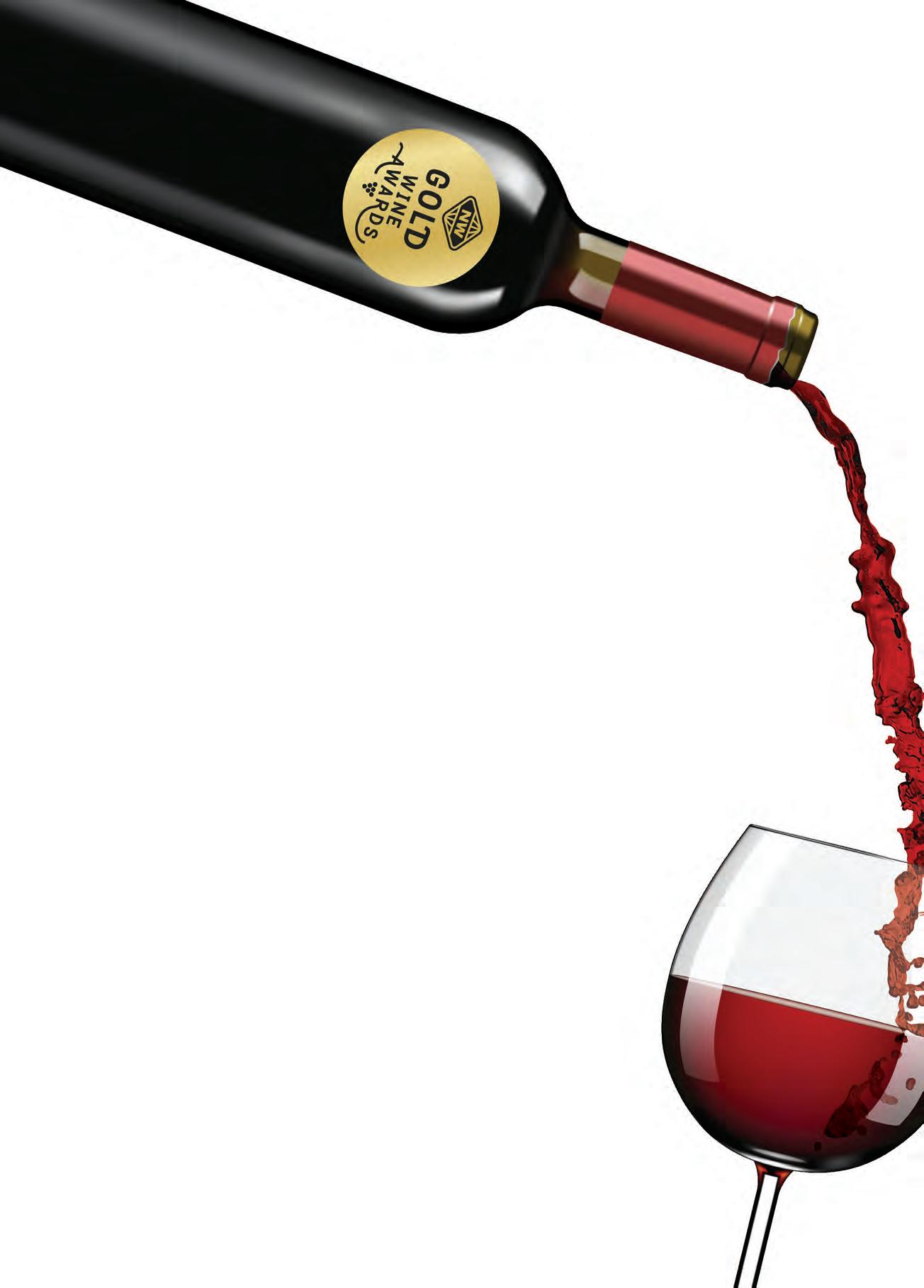
Get ready to raise a glass to New Zealand’s most consumer-focused wine competition - the New World Wine Awards! This prestigious event offers wineries a fantastic opportunity to showcase their top drops to wine-loving shoppers in New World stores nationwide. With a unique focus on wines under $25, this competition pairs the rigour of an international standard wine show with a retail platform, ensuring that the top wines not only shine but also see a boost in sales.
Entrants must also have at least 4,000 bottles available to meet consumer demand, whilst the volume requirement is 1,800 bottles for emerging
varieties to encourage an even wider spread of styles and producers to enter. Whether you’re a seasoned winery or a new player in the industry, all are welcome to enter and reap the benefits of this prestigious competition.
So, grab your corkscrew and get ready to uncork success with the New World Wine Awards.
Don’t miss out on this incredible opportunity to toast to your brand’s success!

A 40-year legacy in New Zealand’s wine industry, including an “outstanding contribution” as alumni and Chancellor of Lincoln University, has seen Steve Smith MW awarded an honorary doctorate from the university. The viticulturist and wine company founder, who was named a New Zealand Winegrowers Fellow in 2021, was Chancellor from 2016 to 2018, at a time of financial pressure. He led Lincoln through a period of transformation to a bright re-focused future, the university said in awarding the doctorate. “Steve brought a remarkable portfolio of governance experience, professional development, commercial acumen and business success to the task with which he was entrusted.”
Steve was the first viticulturist in the world to become a Master of Wine, co-founded and led Craggy Range for 16 years, and was twice named in the list of 50 most influential people in the world of wine. A love of academia and governance led him to several professional development programmes at Stanford University’s Graduate School of Business, and to ministerial appointments with government and sector bodies. “By far the most challenging, but also the most rewarding, was my three years at Lincoln University, where we used all my Stanford learnings to lead the reinvigoration of the university and its role in New Zealand society,” he says. “Today it is thriving, when many are not.”
The period outside wine gave him a fresh perspective on an industry that “captures everything I love”. Since then, he and American entrepreneur Brian Sheth have launched Aotearoa New Zealand Fine Wine Estates, umbrella to the Smith & Sheth, Pyramid Valley and Lowburn Ferry labels. “The three properties we now own are, to my eye, amongst the world’s finest Chardonnay, Pinot Noir and Syrah estates,” Steve says. “Our vision is to capture that potential, producing fine wines through the lens of nature that can only come from these places.”
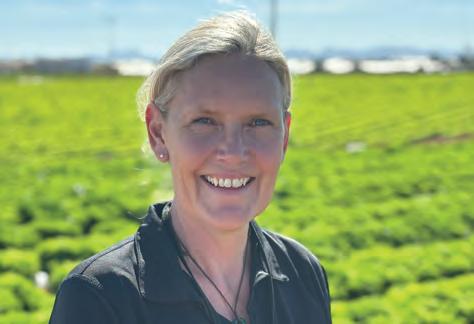
The new Chief Executive of Bragato Research Institute brings “a wealth of experience in research and innovation”, says BRI Chair Mark Gilbert. Dr Juliet Ansell comes to BRI from a role as Head of Core and Resilience Innovation at Zespri. “I am excited to take on this new role and to bring my experience in science and innovation to grow the future of the wine industry,” she says. Juliet trained at Kings College London, has a PhD from Oxford University, and has lived and worked as a scientist in the United Kingdom, Tanzania, The Gambia, and Australia before taking up a role at Plant & Food Research in New Zealand. She was seconded to Zespri in 2014 as Innovation Leader, before taking up the role of Head of Core and Resilience Innovation. Juliet will relocate to Marlborough for the role, with her appointment effective from 15 July 2024.
Appellation Marlborough Wine has tightened its certification criteria, putting in place minimum brix at harvest and new geographical boundaries for wines wearing the AMW icon. Members’ wines must now meet a minimum sugar ripeness level of 18 brix at harvest, with the exception of fruit destined for low alcohol product. In addition, all certified wines must be sourced from a more confined area than the Marlborough Geographical Indication (GI) boundaries, which extend to Picton and Kaikoura. Under AMW, wines must be grown within the Wairau, Awatere and Blind River, and South Coast subregions demarcated on the organisation’s Wine Map of Marlborough. “Now more than ever, consumers can be assured that every one of our wines is an authentic, quality expression of our region,” AMW Chairperson John Buchanan says. “It’s a measure of our members’ commitment, that this has been passed unanimously.”
AMW’s quality certification process requires wines to be sourced exclusively from sustainably registered vineyards within the region, bottled domestically, and independently verified by an experienced tasting panel. The announcement of additional criteria comes on the heels the appointment of Michael Wentworth as Chief Executive Officer. “What Appellation Marlborough Wine has achieved in a few short years is phenomenal,” he says. “Their single-minded focus on protecting and enhancing Marlborough’s wine quality is to be admired. I am really looking forward to working alongside many of the region’s flagship wine producers and elevating their collective efforts globally.”
When Molly Callaghan first started talking to winegrowers about mycorrhizal fungi, she was asked where she parked the spaceship. “They had no idea what we were talking about,” says the Managing Director of Roots, Shoots & Fruits 25 years later, following an award at the New Zealand Organic Awards for their product Rootella, which inoculates into plant roots, improving resilience to disease, as well as access to water and minerals. “The worm has turned a bit”, she says, recognising the growing conversations about the power of mycorrhizae in the science and research space, and the large number of wine companies now using Roots, Shoots & Fruits products, particularly when planting. But she says there’s still too little understanding of the role the fungi plays in mitigating climate change. “The big reason why we would like everyone to focus on it is it stores carbon dioxide in the soil.”
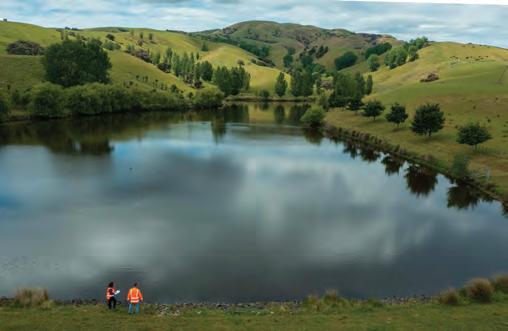
The new Building (Dam Safety) Regulations 2022 came into force in May, covering dams of a certain height and volume threshold. Those dams will need a Potential Impact Classification, certified by a recognised engineer, to assess what impact a dam failure could have on the community, major infrastructure, historic or cultural places and the environment. The regulations have been made to increase dam resilience and safety, and provide a nationally consistent risk-based approach, says Marlborough District Council Building Control Group Manager Dhyanom Gala. The Government has recently made a change to the thresholds to reduce the number of dams that need to be classified, meaning it now affects dams that are four or more metres in height and store 20,000 or more cubic metres. Dams that are one or more metres in height and store 40,000 or more cubic metres no longer need to be classified. Sonia Mason, from WSP Blenheim, says there has been a lot of regulatory change for farmers and growers in the past several years, and “regulatory fatigue” is common in the rural sector. Some operators have greater capacity than others to understand and prepare for the changes, but the wine sector is well supported by regulatory bodies, including New Zealand Winegrowers, “and as it has in the past, the industry will no doubt respond positively to the changes”. Sonia notes that one challenge will be having enough recognised engineers to carry out the certifications. The MDC website is now live for lodging Dam Classification Certificate Applications at my.marlborough.govt.nz/do-it-online/building.
The Gravel Bed Rivers National Research Project is building knowledge of how braided rivers such as the Wairau River interact with groundwater. The project is in its fourth year and due for completion in October. With the Wairau Aquifer in continued decline, Marlborough District Council (MDC) is working with Lincoln University on the project in order to develop Wairau River management solutions. The work has shown that flood protection work on the Wairau River has resulted in a reduction in natural aquifer recharge rates in the Rapaura area. This has likely been compounded by gravel extraction and a depleted natural gravel supply from nearby catchments since the 1960s, says MDC Senior Environmental Scientist, Groundwater, Peter Davidson. There is a willingness to apply the lessons learnt from the study to “arrest and restore” the aquifer, he says. In the longer term, that could result in changes to the river’s gravel management plan and some adjustment to the width of the river, which has over time become constrained to one channel. Peter says groundwater tends to be “out of sight and out of mind” but the aquifer is an extension of the river itself.
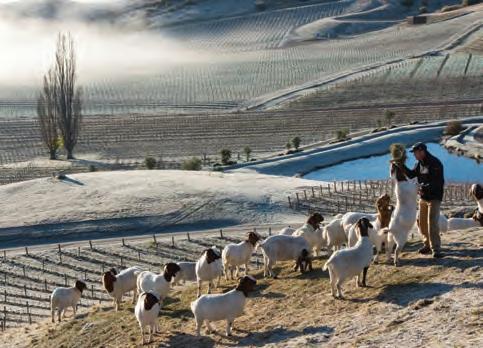
Bannockburn producer Felton Road has been named Winery of the Year New Zealand 2024 by The Real Review, a list compiled by New Zealand wine critics Bob Campbell MW, Huon Hooke, and Stephen Wong MW. Destiny Bay, Church Road, Ata Rangi and Craggy Range were the next four in the ranking, which was established after a tasting of more than 3,500 wines. “Top Wineries of New Zealand 2024 is the Who’s Who of fine wine producers creating new benchmarks as a measure of excellence,” says Bob. “It is a one stop shop for the latest and greatest New Zealand wines and we are thrilled to reveal them to New Zealand wine lovers.” Felton Road Winemaker Blair Walter says the company is “blessed” in Bannockburn with four vineyard sites offering consistent and distinctly high-quality wines. “We’ve been farming our vineyards organically and biodynamically for over 20 years now which brings additional harmony and nuance to the wines.” Within the top 60 wineries, 34 have some or all of their vineyards certified organic. There are 35 wineries listed with female winemakers at the helm, representing more than 21% of the total, with that proportion increasing year-on-year.
To have events added to our calendar contact sophie@sophiepreece.co.nz
7 – 14 June
organicwinenz.com/kellymulvilletour
The Horticentre Charitable Trust OWNZ
Kelly Mulville Tour workshops are in Central Otago on 7 June, North Canterbury on 10 June, Marlborough on 12 June, and Hawke’s Bay on 14 June. Kelly is a pioneer of the regenerative viticulture movement in the United States, with an approach that aims to move with climate change and reduce the environmental footprint of vineyards by developing innovative viticultural growing systems.
7 June
hawkesbaywine.co.nz
Gary Walsh from Winefront is keynote speaker at this one-day workshop in Hastings and will provide candid insights on international trends. Local winemakers, wine businesses and viticulture experts will also share success stories. While having a Hawke’s Bay focus, red blend producers from other regions will find value. Register at eventfinda.co.nz/2024/red-blendworkshop/hastings.
7 - 8 June Wellington
26 - 27 July Auckland
Wineries from all across the country will gather at these showcase events, with a chance to meet thousands of wine lovers, offer tastings and sell direct to the public.
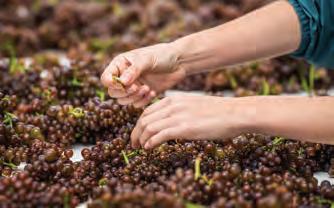
• Marlborough: 24 June
• Central Otago: 2 July
• Hawke’s Bay: 4 July nzwine.com/grape-days
This Bragato Research Institute programme digs into the future of plant breeding, rootstocks and drought tolerance, canopy management, Pinot Noir, and the impact of vineyard practices in the winery. Read more on page 36.
25 - 27 June
winepro.co.nz
The inaugural WinePro Expo and conference in Blenheim is stacked with technology already at play in New Zealand’s wine industry, emerging innovations being trialled in vineyards and wineries, and audacious aspirations for future breakthroughs. The event includes top suppliers alongside a compelling speaker series, with subjects flowing from AI in wine to vineyard redevelopment, and from industry electrification to climate ramifications. See more on page 42.
27 – 28 July (judging) wine.theshow.co.nz
The Aotearoa Regional Wine Competition is focused on championing and promoting New Zealand’s regional uniqueness. Chaired by Jim Harré, with a panel of experienced judges. Entries close on 10 July.
National
27 August
nzwine.com/en/events/youngwinemaker
Regional competitions for the 2024 Tonnellerie de Mercurey Young Winemaker of the Year competition will run throughout New Zealand in July and August, followed by the National Final on 27 August at Foley Wine’s The Runholder in Wairarapa. The winner will be announced at the Altogether Unique Celebration Dinner on 29 August.
28 August
nzwine.com/en/events/young-vit
There are five regional competitions for New Zealand Young Viticulturist of the Year 2024, with the National Final to be held at Escarpment in Wairarapa on 28 August. The winner will be announced at the Altogether Unique 2024 Celebration Dinner in Wellington. Last year’s winner was Tai Nelson from Soljans Estate in Auckland. Matt Fox, the 2013 national winner and Chair of the Young Viticulturist National Committee, says the competition was a great platform to grow his career. “I’m
keen to help many more young viticulturists flourish and progress their careers in an industry I’m passionate about.”

29 - 30 August
nzwine.com/en/events/altogetherunique-2024
Altogether Unique 2024 will bring winemakers, grape growers and industry partners to Wellington, to gather, network and celebrate New Zealand’s wine industry while learning about the latest insights and innovations. The programme includes the Wine Business Forum and Celebration Dinner on 29 August, followed by the Women in Wine Breakfast and the inaugural Research and Innovation Forum on 30 August. See more on page 16.

4 September
hawkesbaytourism.nz
As part of the Great Wine Capitals programme, the inaugural Hawke’s Bay Best Of Wine Tourism awards will celebrate excellence and innovation in the region’s wine tourism industry across seven categories, including accommodation, culinary experiences, and sustainable wine tourism practices. Local category winners will be announced at an awards ceremony on 4 September, with one outstanding winner then named a global winner at a gala dinner in Verona, Italy, in October. Applications close at 5pm on 14 June.
New Zealand
Chardonnay Symposium
26 - 27 September hawkesbaywine.co.nz
The 2024 Symposium, to be held at Toi Toi in Hastings, will offer informative case studies, inspiring speakers, and an expansive tasting programme. It will investigate the nuanced role of ‘place’ in New Zealand Chardonnay. This lens will be applied to all aspects of winemaking from the bedrock through to the consumer via technical and cultural enquiry.

9 October
Richard Brimer is marking 40 Vintages of photographs – capturing the people and places of wine – with an exhibition at Arts Inc Heretaunga, opening on 9 October and sponsored by Hawke’s Bay Winegrowers. See more on page 24.
NZSVO Technical Workshop
15 October
nzsvo.org.nz/technical-workshops
Divided into five sessions, the New Zealand Society for Viticulture and Oenology 2024 workshop, themed Keeping it Fresh, will weave its way through the complex wine sector, touching on ‘fresh thinking’ at every stop. Set in Blenheim, the workshop will consider unique perspectives, technology and trials, wine trends, packaging
innovations and consumer facing strategies.
Wine Awards of
Aotearoa New Zealand
3 November nationalwineawards.co.nz
The Awards of Excellence Long Luncheon in Auckland celebrates trophy winners in the National Wine Awards of Aotearoa New Zealand, which is the country’s newest and only national wine competition, says convenor Jo Gear. “Under the stewardship of the same team that organised the Royal Easter Show Wine Awards, New Zealand’s longest running wine show, it brings the best of this epic heritage together with focussed ambitions for the future, with the purpose of identifying, celebrating and elevating excellence in New Zealand wine.” Entries open 12 August and close 6 September.
MCC New Zealand is committed to telling your brand’s story through beautifully crafted labels, that complement the design and brand vision.
Talk to MCC New Zealand, where every product is labelled with care.
Producer: No1. Family Estate
Designer: Alex Lloyd
Photographer: Jim Tannock
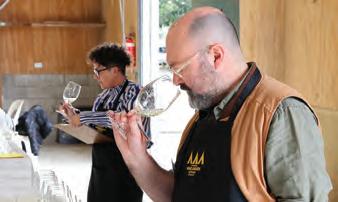
Pinot Noir New Zealand 2025 11-13 February 2025
pinotnz.co.nz
Head to Ōtautahi to meet passionate Pinot Noir producers from around New Zealand’s winegrowing regions, listen to experts from here and abroad, and explore the reasons New Zealand Pinot Noir is so distinctive.
See more on page 13.
Save the Date – ICCWS iccws2026.nz
25 - 28 January 2026
The 11th International Cool Climate Wine Symposium will be held in Ōtautahi Christchurch in January 2026, offering tastings and insights from cool climate regions, here and abroad.

Charlotte Read
On
As we approach the year’s halfway mark, all signs point to stunning wines from the 2024 vintage and strengthening export sales trends. That’s a perfect platform for New Zealand Wine Altogether
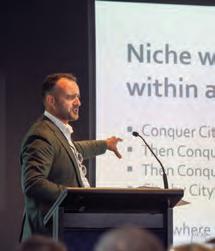
Unique 2024, set to roll out over two packed days in Te Whanganui-a-Tara, Wellington, starting with the Wine Business Forum on 29 August, then the Celebration Dinner that evening. Following the sellout success of our inaugural 2023 Wine Business Forum, ‘The Importance of Brand’, this year’s event at Te Papa is dedicated to ‘Navigating the Beverage Superhighway’. The overall focus will be on understanding our consumers, evolving trends, and highlighting what opportunities to innovate lie ahead in the highly dynamic and fast moving global beverage market. The full programme can be found at www.nzwine.com/en/initiativesevents/ altogetherunique
We look forward to seeing you there.
Charlotte Read is NZW General Manager Brand


ProWein continues to be a popular trade expo for the New Zealand wine industry, with the March 2024 event including 25 producers within the New Zealand Winegrowers (NZW) pavilion, as well as 50 other New Zealand wineries represented across the fair. There were more than 45,000 registered trade visitors from 136 countries, and 5,200 exhibitors from 65 countries at the event, in its 30th year. One winery commented that it was a “very successful fair for us”, while another reported on “a great event” and appreciation for the support. “Hopefully we will be there again next year,” they said. However, there was also talk of New Zealand’s presence at Wine Paris in future years and NZW is currently seeking expressions of interest from members.
Pour yourself a glass of New Zealand
In its third year, the month-long Pour Yourself a Glass of New Zealand campaign celebrated New Zealand’s top three exported white wine varieties, with International Sauvignon Blanc Day (3 May), International Pinot Gris Day (17 May), and International Chardonnay Day (23 May). NZW held campaign activations in Australia, the US, Canada and China, with NZTE also leading activity in South Korea. A Happy Hour was held in mid-town New York, where 18 media got to experience a range of New Zealand white wines and celebrate the three wine days. In Canada, NZW held a Wine & Design event where media were treated to an interactive evening of sampling New Zealand Sauvignon Blanc and creating their own bouquet with fresh floral arranging. Media press
kits went out to 15 Australian wine and lifestyle media, each receiving a bottle of New Zealand Sauvignon Blanc, Pinot Gris, and Chardonnay. In China, Fongyee Walker MW and Sophie Parker-Thomson MW led two masterclasses with the theme of Iconic Whites of New Zealand during the NZW Altogether Unique New Zealand Wine Roadshows, and more than 20 New Zealand white wine education courses and wine tastings took place across China. NZTE Korea celebrated Sauvignon Blanc Day and invited 25 social influencers and media to attend a mini seminar on New Zealand wine while cruising on the Han River. At the time of writing, global media coverage of the campaign has reached 12 million people, with many more results to surface.
After a five-year hiatus, Sommit will return in 2025, following Pinot Noir New Zealand 2025. A select group of international sommeliers from across the United States, United Kingdom, Australia, Canada, China and Japan will once again be hosted in Gisborne by Cameron Douglas MS and Stephen Wong MW, for an intensive New Zealand wine experience targeted to the on-premise. Attendees then share their knowledge back to their networks in their home cities. Applications for US and Canadian sommeliers are open now, with Australia’s application programme opening on 1 July in association with Sommeliers Australia. More information on how to apply is at nzwine.com/en/trade/tradeevents/ sommit. “The post-sommit blues are very real,” says a past attendee. “I really cannot express how grateful I am for the experience. It was everything.”



Pinot Noir New Zealand 2025 will be held in Ōtautahi Christchurch, 11-13 February next year. Committee member Natalie Grace, who is Brand and Marketing Manager for Aotearoa New Zealand Fine Wine Estates (Pyramid Valley, Smith & Sheth and Lowburn Ferry), shares some excellent reasons to get excited.
I’m really looking forward to… connecting over pre-drinks, post-drinks, and the everything in between! The conversations with winemakers, tastemakers and the guests who have the power to really, truly move the dial for New Zealand Pinot Noir on the international stage. This event is about reconnections and new connections. It’s been far too long since we’ve had the opportunity to get people excited about New Zealand Pinot Noir on our own, home soil.
“If Pinot was a person… it wouldn’t be the loudest in the room. But when it speaks, you absolutely listen up” Natalie Grace
Our committee is… Excited, ambitious, determined, maybe even a little nervous (nerves are good, it means you care!), but most importantly 100% committed to presenting a conference programme that will deliver inspiration with a very generous serving of the commercial realities needed to enhance New Zealand Pinot Noir’s reputation and value on the global stage. We know we make the best damn Pinot in the world. It’s time to remind people of that.
New Zealand Pinot Noir is... incredible in that it gives such a strong voice to place. Of course, you could say that about every Pinot producing nation, but there’s that extra 10% New Zealand has that I love, where every region has its own distinct personality. Maybe it’s our small, skinny landmass. Maybe it’s our maritime climate and soils. Maybe it’s our tenacious and innovative winemakers. Maybe it’s all the above. I’m not sure, but it’s definitely got the X-factor and Pinot Noir NZ 2025 is here to provide the stage.
One thing you should know about me is… I once had a business called Perfectly Rieslingable, such is my love for the Riesling grape. Of course, saying that out loud I feel like a complete traitor being on this committee, but I can assure you that I am just as much of a Pinot Noir tragic as I am for that ‘other’ grape!
VISIT US AT STAND E16 DURING WINEPRO 2024
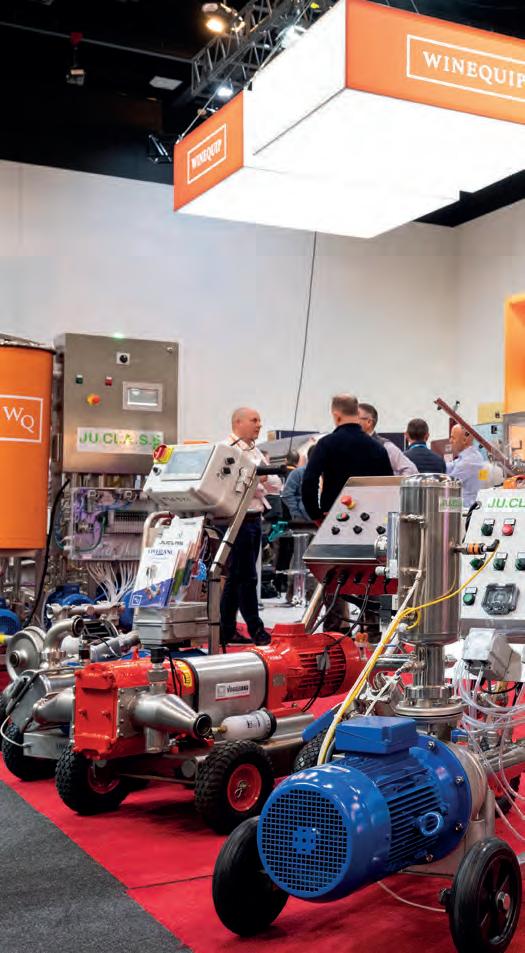
Check out the latest from our suppliers
Speak with our expert team about our range
Enjoy complimentary tastings
Qualmark celebrated its 30th birthday in October 2023, having supported thousands of tourism businesses since it began in 1993. With wine tourism a leading attraction for visitors to New Zealand, Qualmark General Manager Steven Dixon explains what the quality assurance scheme means for New Zealand vineyards and cellar doors.
What is Qualmark?
Qualmark makes it easy to find the best tourism offerings in New Zealand. More than 2,000 Qualmark-awarded visitor accommodation, activities, service and transport providers across the country have been assessed against a stringent framework by our team of independent Qualmark specialists. Vineyards, cellar doors and wineries are a relatively recent –and growing – sector of our membership. New Zealand is home to more than 240 cellar doors with in excess of 530 winery experiences. Wineries are a quintessential New Zealand tourism experience, combining the beautiful scenery of the vineyards, fabulous local wine and food, and the manaakitanga or welcoming hospitality of the hosts. These businesses have the potential to help the landscape, staff and local community to thrive. In joining Qualmark, we encourage these operators to make their wine tourism experiences the best in the business.
How has Qualmark evolved to meet changing tourism demands? Over the past 30 years our quality assurance
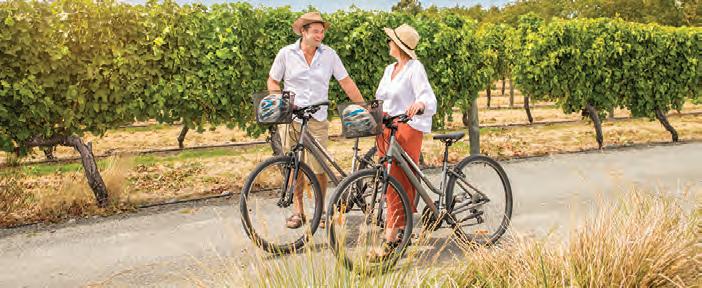
focus has adapted to meet the changing needs of visitors, expanding to cover factors from cleanliness and health and safety to sustainability. Our Sustainable Tourism Business criteria were introduced in 2016. These criteria have gained GSTC-Recognised Status from the Global Sustainable Tourism Council, meaning members can be confident that achieving Qualmark certification meets global standards of sustainability. And that’s not just sustainability in terms of how ‘green’ a vineyard is. The Sustainable Tourism Business criteria assesses a business across five key pillars: business systems, environment, people, community and culture, and health and safety.
How could Qualmark help wine tourism businesses?
Compared to 10 years ago travellers are now three times more likely to choose a business that has been sustainably accredited. Qualmark certification recognises excellence in the visitor experience at the vineyard, from the appeal of the cellar door to strong customer safety, to the quality of hosting – and that goes for very large globally-renowned vineyard names to the smallest boutique cellar door operations. But beyond that, Qualmark members say that the process has helped them focus on becoming as sustainable as possible in terms of benefiting New Zealand’s economy,
nature, society and culture. Our criteria reviews aspects of each Qualmark member’s business, from waste reduction through to team culture and social licence, staff training to integration of culture.
What’s involved in becoming certified?
Our team of Qualmark specialists independently visits and assesses each Qualmark member across our five pillars, designating Bronze, Silver or Gold accreditation. Importantly, the process is ongoing; the Qualmark team works with businesses so they can continually improve in each area and offer the best possible experience. There’s real value in not only being seen to be good, but seen to be doing good. Qualmark is the signifier of tourism experiences doing just that.
A new Qualmark New Zealand Wine Tourism Award will be awarded at the New Zealand Wine, Altogether Unique 2024 Celebration Dinner in August (page 16). The award recognises excellence in visitor experiences, from the cellar door to the quality of the hosting, with an emphasis on sustainable tourism experiences.

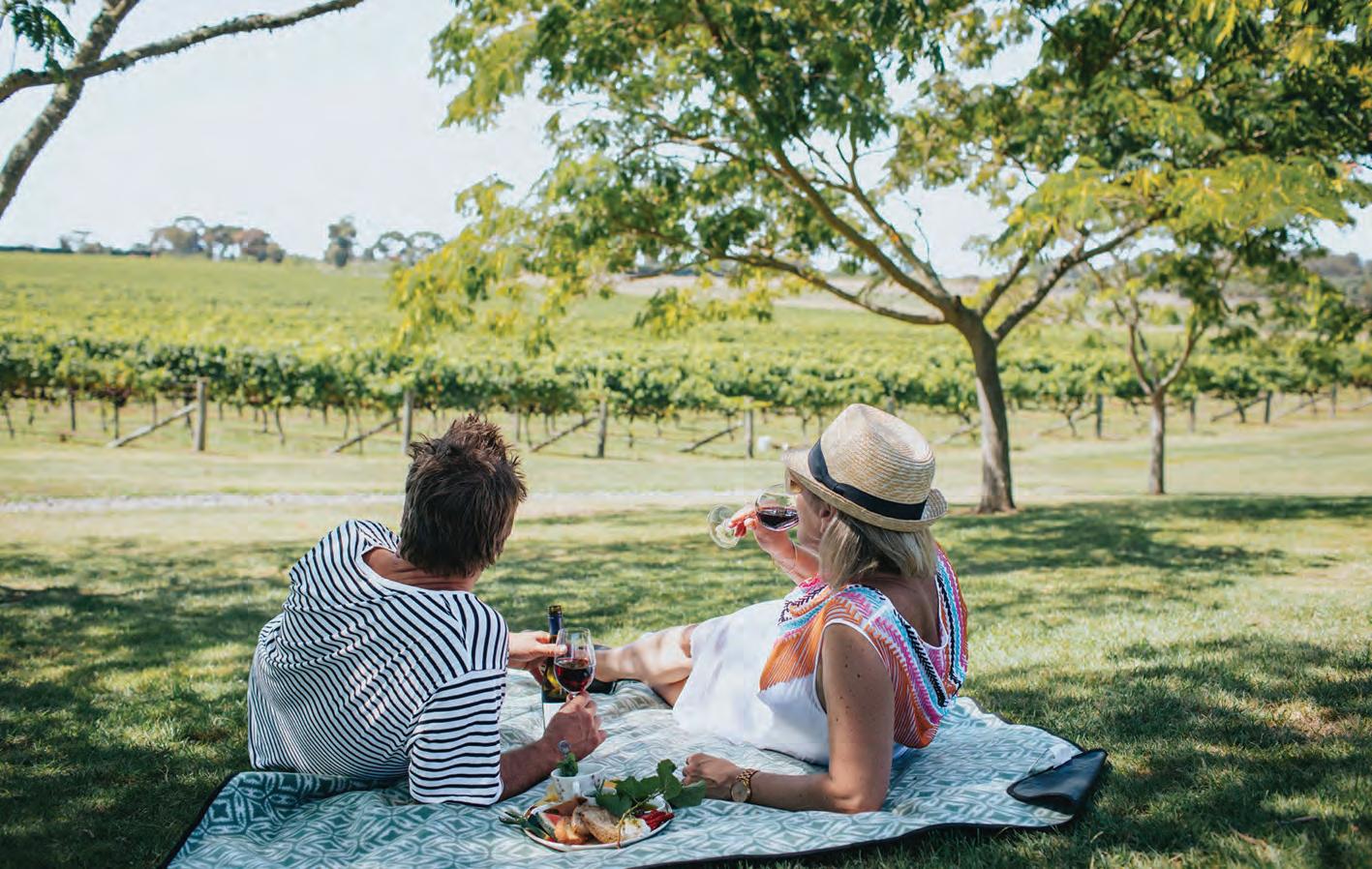
A single billboard in New York City costs around US$300,000 per year. Last year there were 90 million mini-billboards promoting New Zealand, thanks to bottles of our wine on American tables.
According to Tourism New Zealand, an ‘Active Considerer’ is someone who is seriously considering travel to New Zealand within the next three years, and research from Kantar shows that 35% of American adults are Active Considerers for travel to New Zealand.
Based on research conducted as part of the IWSR New Zealand Wine Brand Health Tracker in the US market, we found that 5.5 million (53%) of New Zealand Wine drinkers are Active Considerers for travel to New Zealand. This is significantly more than the 35% of adults reported by Kantar. That’s evidence that our many millions of mini-billboards are having an impact on tourism to New Zealand.
And who are these consumers? They are more likely to be high-earning females and
classified as ‘Engaged Explorers’, highly involved in the wine category, more likely to be located in the Pacific region, such as Los Angeles and San Francisco, and actively seeking opportunities to build wine experiences. They also drink a lot of Sauvignon Blanc, with the tally at 55%.
Why is this important? Based on preCovid-19 surveys, 25% of inbound tourists visited New Zealand wineries for tastings. Adelaide University research revealed that 54% of cellar door visitors purchased an average nine bottles of wine, 50% indicated they would purchase in the future, 16% who had never purchased a cellar door brand previously began to buy it after their visit, and 33% went on to repeat purchase from retail stores. Pre-Covid surveys also revealed that New Zealand cellar door visitors highly rated their experience, with an average satisfaction score in excess of 9/10. In other words, these consumers are brand advocates, highly likely to make positive recommendations to their social networks. And indeed they do. The
Adelaide research showed that more than 80% of consumers who visited a cellar door went on to recommend to friends, family or colleagues within three months, making on average three positive referrals.
Therefore, the opportunity for wine tourism is to target drinkers of New Zealand wine as Active Considerers and convert them to Actual Travellers. When cellar doors continue to provide a wonderful experience at the homes of New Zealand wine brands, they can reconnect with these brand fans, then reactivate them after they have returned home. This will create even more converts to New Zealand wine, and in turn more Active Considerers for travel to New Zealand. It’s not just a return trip, it’s a continuous round trip. If done well, this can cost effectively build a New Zealand Wine Brand Army, because a fabulous experience means brand fans love to spread the word, for free!
Richard Lee is an Intel and Insights Specialist at New Zealand Winegrowers.
Altogether Unique 2024 is a chance to connect with colleagues, celebrate fresh successes, showcase industry stalwarts, and dig into the business, research and innovation of New Zealand’s wine industry. “The aim is to build on the aspects that were so successful in the inaugural event last year,” New Zealand Winegrowers (NZW) Chief Executive Philip Gregan says of the packed two-day programme.
New Zealand Wine, Altogether Unique, running at Te Papa in Wellington on 29 and 30 August, begins with the one-day Wine Business Forum – Navigating the Beverage Superhighway. The programme of high calibre speakers will be announced in the coming months, but it includes leadership, advertising and marketing guru Kevin Roberts (CNZM), wine writer and Business of Drinks co-founder Felicity Carter, and Andrew Shedden, Head of Fine Wine from Endeavour Drinks Group, all of whom are travelling to New Zealand for the event. NZW General Manager Brand Charlotte Read says the forum topics include innovation, artificial intelligence, the value of sustainability in wine business, future visions of wine tourism, and marketing strategy, with speakers sharing deep expertise on the opportunities and challenges the industry faces in order to retain its competitive edge.
The forum will be following by a Celebration Dinner, where the 2024 NZW Fellows will be acknowledged, and the winners of the Young Viticulturist and Young Winemaker of the Year national finals announced and presented with their trophies. That’s an evolution of the 2023 event, where Young Winemaker finalists delivered their speeches, and Alena Kamper was named Tonnellerie de Mercurey Young Winemaker of the Year. It’s about throwing a spotlight on the success of the regional finalists and winning competitors in each event, Philip says, noting that while there’ll be plenty of amazing New Zealand wine at the dinner, this is a celebration of the people of the industry, from pioneering stalwarts to up-and-coming talent. The
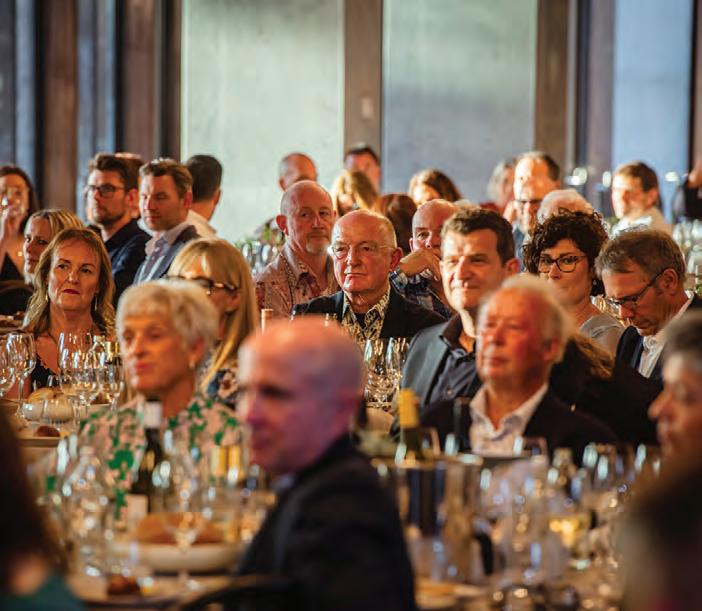
2024 Celebration Dinner also introduces a new Qualmark New Zealand Wine Tourism Award, recognising excellence in the visitor experience, from the cellar door to the quality of the hosting, with an emphasis on sustainable tourism experiences.
“It is about lifting people out of the here and now and getting them to think about the longer-term picture.”
Philip Gregan
Altogether Unique 2023 included a Women in Wine event at Kate Sheppard House, and that successful gathering will be refreshed with a Women in Wine breakfast in Wellington on 30 August, followed by a new item on the programme, the Research and Innovation Forum being devised by Bragato Research Institute (see sidebox).
Last year’s Wine Business Forum in Ōtautahi sold out quickly, reflecting the industry’s appetite for relevant market and consumer insights to help drive their businesses forward, “with the added benefit of being able to learn and share ideas together”, Charlotte says. “Networking in
our relationship-driven industry is so vital.” Selecting a relevant theme each year takes a lot of thought, including input from the NZW Brand Committee, she adds. “It’s a team effort. This year’s future-focused theme has allowed us to involve a really inspiring group of speakers.”
Last year’s forum, focused on the Importance of Brand, included Oz Clarke urging the industry to refrain from emulating others. “New Zealand’s wines tasted of a somewhere that had never existed before. And that’s the story that you tell,” he said in a poetic homage to New Zealand wine and Marlborough Sauvignon Blanc. New Zealand Story Group Chief Executive David Downs explained that the brand value of New Zealand as a country of origin is “massive” and discussed the value of “New Zealand-ness” and the power of a common brand platform for New Zealand industries. “The wine industry needs to support the meat industry, needs to support the technology industry, needs to support the education sector,” he said. “The messages need to be consistent among all of us.” Other speakers included wine strategist Lulie Halstead revealing insightful market research; Rob McMillan, founder of the Silicon Valley Bank Wine Division, defining price point and potential vulnerability; Mike O’Sullivan, founder
and Executive Creative Director of Many Minds, delving into brand – including the development of New Zealand Wine, Altogether Unique; and Giesen Group General Manager Kyle Skene, who discussed diversification into low and no alcohol wine.
Philip says there’s no doubt that this
year’s lineup will continue the momentum of that extraordinary offering, with global leaders, from here and abroad, tackling subjects of immediate and future pertinence to the industry. Altogether Unique is a celebration of the people of the wine industry, and a view of what’s on the horizon, in terms of science
and technology, as well as marketing, sustainability, tourism and sales, Philip says. “It is about lifting people out of the here and now and getting them to think about the longer-term picture.”
Attendees can book for any or all of the four Altogether Unique events. nzwine.com/en/events
SOPHIE PREECE
The inaugural Research and Innovation Forum will explore research on the horizon, technology on the ground, and smart ways of increasing efficiency in vineyards and wineries. Bragato Research Institute (BRI) Knowledge Transfer and Engagement Lead Braden Crosby says discussions will focus on innovations being trialled now, or already available. “That people can do currently, or what they can expect to be on the radar in the next five to seven years.” The 30 August forum, which is part of the two-day New Zealand Wine Altogether Unique programme, will also mark the launch of
the New Zealand Winegrowers Roadmap to Net Zero - a pathway to 2050.
Discussions include a session with Indevin Group winemaker Jason Cook (page 33) who says cloud capabilities have “revolutionised” the management of harvest in recent years, including through a “democratised” platform that enables winery and viticulture crews to see logistics in real time on mobile devices. “This gives us the agility we need to act quickly and get the most from every hour of harvest.” Attendees will also hear from Nuffield scholar Hans Loder from Penley Estate in Coonawarra, South Australia,
whose viticulture program taps into technology and data to grow efficiency, improve soil health, and better assess fruit ripeness.
The forum will showcase BRI’s research excellence and collaborations, says BRI’s new Chief Executive Dr Juliet Ansell, currently Head of Core and Resilience Innovation at Zespri. “Equipping viticulture and winemaking businesses with innovative solutions to tackle the challenges that really matter to our industry, so New Zealand can continue to create exceptional wines and increase our share of the global market value.”
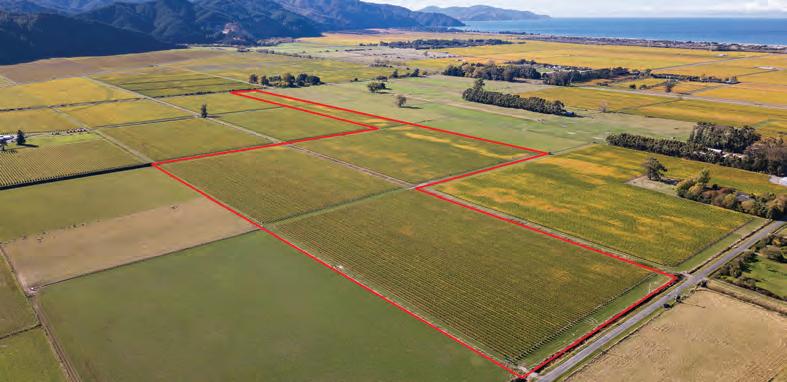


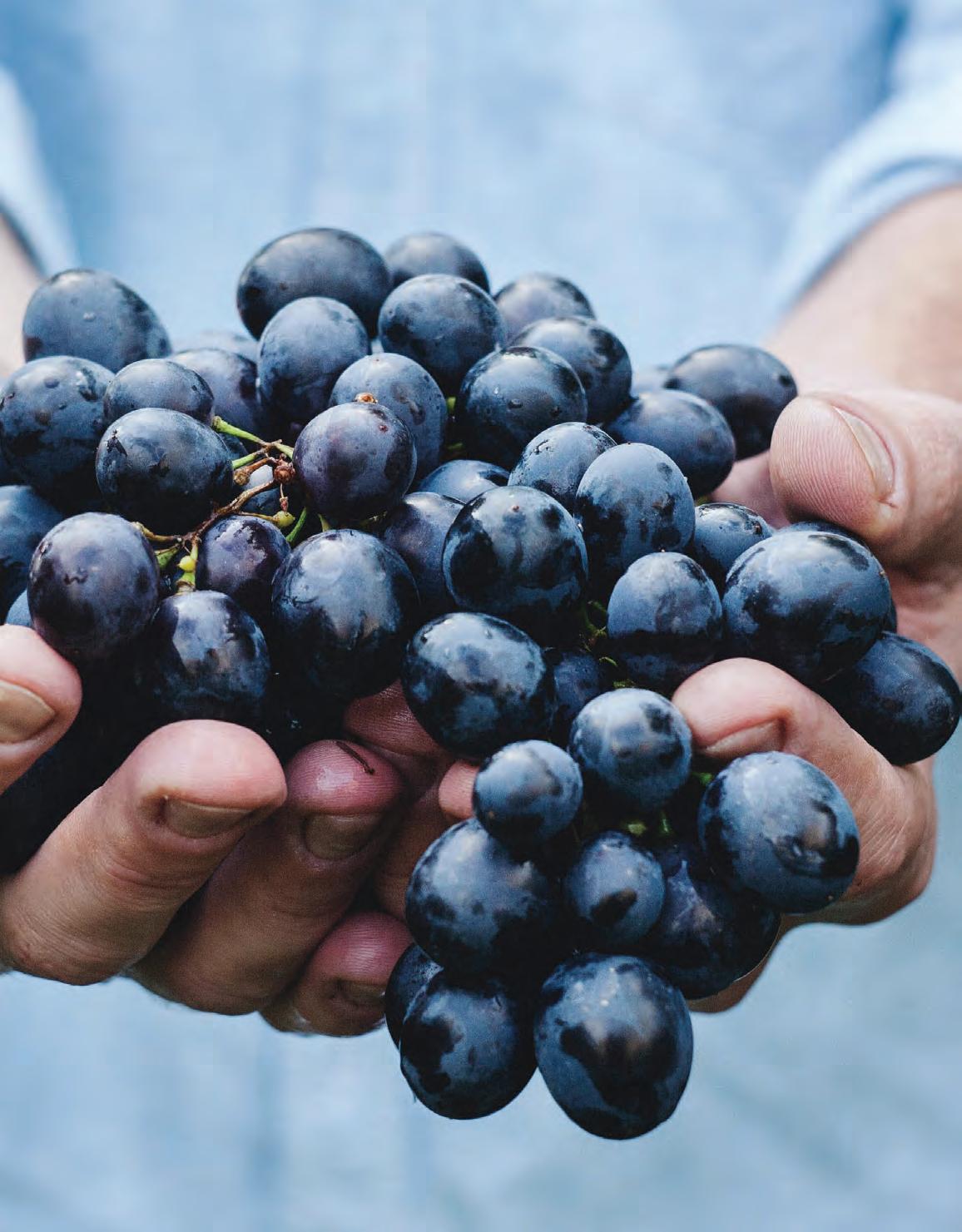

The Aotearoa Regional Wine Competition Is The Only Wine Competition In The Country Dedicated To Championing & Promoting Our Regional Uniqueness By Awarding Medals For Both Regional & Varietal Excellence
Go To wine.theshow.co.nz For More Information Entries Close July 17, 2024

With vintage 2024 tucked away in tanks and barrels, we check out news from our Altogether Unique wine regions and views on an altogether exceptional harvest.
New Zealand’s total harvest tally will be well down on 2023, with many wine regions reporting lower yields due to poor flowering, drought-like conditions, and in some cases late spring frost damage. But the warm, dry summer enjoyed throughout the country, paired with cool autumn nights, has winemakers excited about the quality of the season. “2024 will produce some truly memorable wines,” says Craggy Range National Vineyard Manager Jonathan Hamlet.
Kumeu River experienced a 30% drop in yields in their Auckland vineyards, and 50% down at Rays Road in Hawke’s Bay. But the quality is “really, really good”, says Cellar Master Nigel Tibbits (page 23). There was little sorting required in the dry and disease-free season, and the tiny berries and small bunches at Rays Road promise “amazing” Pinot Noir, with ripe cherry and bramble flavours. Kumeu did better in terms of yields, while still offering clean fruit in a spectrum of ripeness. “From the Estate Chardonnay point of view it’s a great blending opportunity,” Nigel says, talking of “really neat acid” to balance out the ripest fruit.
Jonathan says Hawke’s Bay had a fantastic season, with a “normal” summer proving a relief after last year’s cyclone hammered harvest. A cooler and wetter period through flowering impacted on fruit set, reducing yields, but the summer carried consistent warm weather and low humidity, back to more typical westerly flows and belowaverage rainfall. Temperatures dropped off in mid-February, with cooler days
and cold nights providing early autumnal conditions for harvest. That lengthened the ripening period and – combined with lower yields – delivered a “beautiful intensity and ripeness”, says Jonathan, who delighted in the opportunity to pick at the perfect time, unhurried by disease or rain. “The season has set up some incredibly exciting wines.” Final yields were varietal dependent, with clones like Mendoza more vulnerable to poor flowering. But other clones, along with vines on heavier soils, still have reasonable yields, he says. The reds are 20-30% down, with a lot of smaller berries with higher skin to juice ratio, “which is amazing for quality”.
In the Wairarapa, a combination of lighter yields, dry warm days, low disease pressure and strong diurnal shifts resulted in “spectacular” wines across all varietals, Jonathan says, calling it the strongest year he has seen in a long time. “We’re very excited about the wines down there as well.” There was frost pressure in spring, “which seems to be a bit run of the course in the last three or four years”, followed by an average flowering, which impacted Pinot Noir more than the later white varieties. That meant a lower fruit set in Pinot Noir, and smaller bunch weights and berries, which is good news for quality, “but it would have been nice to have a bit more crop”. The region had drought-like conditions that required careful irrigation management, then a very cool harvest, with frost machines running at times. But apart from wishing for a little more Pinot, he couldn’t be happier. “It was an awesome growing season, and everybody appreciated
having less disease pressure.”
Geoff Wright from Wrights Vineyard & Winery in Gisborne says it was a stressfree harvest compared to the past few wet years, with the ability to leave grapes out to develop maturity and flavours, rather than respond to disease and weather pressure. But with yields around 50% down, Gisborne growers are facing an upward battle, with fixed costs of production and far less in the tank than they need. “Things are getting tight out there,” he says, noting that the region needs a harvest with good weather and good yields, “and consumers drinking a bit more New Zealand wine too”. Geoff believes the light crops, which impacted some varieties more than others, could in part be down to the lack of sunshine hours from the previous waterlogged season. On the bright side, he was delighted to leave their Zinfandel out on the vine as long as it needed, and to give Syrah a lengthened ripening period. “From a grower’s perspective, it was a good season for quality but with production down, it has been tough.”
Marlborough’s 2024 vintage was “a return to form for Marlborough summers”, says Astrolabe General Manager Libby Levett (page 26), describing loose bunches and minimal disease pressure. Hot, dry weather led to early ripening and a “dream vintage”, she says. David Bullivant, Marlborough Area Viticultural Manager at Babich Wines, says it was a low yielding, high quality Photo on left: Hand harvest for Bilancia at Roy’s Hill, overlooking the Gimblett Gravels. Photo Richard Brimer. See page 24.

year for the region. “For me this year will be defined by six or eight weeks without rain, and a harvest where everyone had the luxury of any time, any day to pick their grapes.” Pinot Noir is his standout variety for the year, and yields from their Waihopai Valley vineyards were “bang on”, he says. Marlborough Sauvignon Blanc yields were down 20% on average for Babich, with the Awatere Valley crops a bit lower than that, and some places on the Wairau Plain doing significantly better. Quality wise, Sauvignon Blanc is “fantastic”, David says, speaking a day after tasting 100 tanks, where there were too many options for the top tier wines, and decisions had to be made about which parcels would drop down to other labels. “We’re going to overdeliver again.”
Nelson’s season was also a “beautiful” one, despite some frost damage in the region in late spring, says Abel’s Mark McGill (page 27). “It was a very dry summer with no rain, which is a grape grower’s paradise.” The ripening window was tighter, putting some pressure on picking crews, but there was no disease pressure to force harvest decisions, allowing fruit to be picked at
its best.
The North Canterbury 2024 season was a return to a “classic” weather pattern, says Steve Smith MW, co-owner of Pyramid Valley (page 30). Yields varied across the region, but quality appears “exceptional”, he adds. “A potentially truly great vintage awaits for those who managed the challenges of frost and were patient.”
Bannockburn producer Felton Road, which has been named Winery of the Year New Zealand 2024 by The Real Review, had an “exceptional” season, says Winemaker Blair Walter. “After having such a warm, dry summer we were concerned about the potential early and fast ripening, which is never really a good thing for us for Pinot Noir.” But March was the coolest it has been in 14 years, slowing flavour development and giving winegrowers the opportunity to be patient, “and carefully monitor different vineyards and different parcels”. That allowed for “a very measured and orderly harvest”, Blair says. Dry conditions throughout summer resulted in smaller berries, “and for us that means more interesting quality, when we have a more moderately yielding vintage”. Yields
were nonetheless within 5-10% of normal, “so we are really pleased”.
James Dicey from Grape Vision was also impressed by Bannockburn’s performance, with an excellent fruit set that meant total volumes were good, despite berries remaining small in the dry conditions. Other parts of the region did “very well” too, and despite frost damage impacting some growers in the Cromwell Basin, Central Otago was just above its longterm production average, “so continues to produce consistently reliable quality yields”, James says. “Across the entire region there was incredibly low disease pressure, hardly a flutter of powdery in the background, virtually no botrytis,” he adds. That meant short picking days, with pristine fruit remarkably easy to pick, and a very long harvest, at a whopping nine week total, compared to the 10 back-to-back days his father Robin experienced in his time. That brought frustrating challenges in maintaining staff momentum, James adds, calling the season “excruciating” from a labour contract point of view. “It was outstanding fruit but felt like the longest vintage ever.”
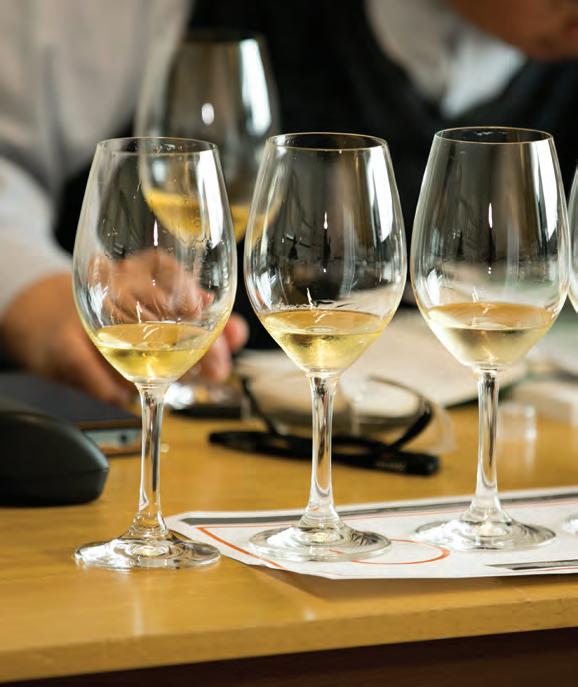



SOPHIE PREECE
Nigel Tibbits was 16 years old when he accepted a job with Maté Brajkovich at San Marino Vineyards. Fifty years on, Kumeu River’s Cellar Master is part of the fabric of the iconic, historic, and family-owned West Auckland wine company, which has changed far more than its name over the past half century, while forging a gleaming global reputation. “It’s been a great ride and I hope it goes on for a bit longer yet,” Nigel says in the wake of the superb 2024 vintage. “Even now I get a buzz out of this.”
“It’s been a great ride and I hope it goes on for a bit longer yet.”
Nigel Tibbits
Nigel grew up on a farm at Muriwai, just down the road from a nascent West Auckland wine industry, and worked at Cooks Wines’ Riverhead vineyard in his holidays, and then again after leaving school. When Maté contacted him in 1974, “it was just a natural progression to go on with the wine side of it”, he says. “Maté was a very strong sort of person. A very generous person. But you had to do what you had to do and if you didn’t do it, he let you know.” The hands-on teenager was eager to do his best, and within a few years had turned a grafting hobby into a grapevine nursery at Waimauku, heading to his hothouse after work each day, and grafting up to 100,000 plants a year, including Chardonnay vines for Kumeu’s Maté, Hunting Hill, and Coddington blocks. “It was a big learning curve to get that right and it’s paying off with some of those older vines now.”
Kumeu River today is a far cry from San Marino in the 1970s, when they produced fortified wines from hybrid varieties. “But Maté had a small block of Chardonnay around the back of the house, which was interesting for those days,” Nigel says. He recalls tasting Chardonnay from the “fantastic” 1976 vintage, fermenting in a 240-gallon milk tank in the distillery room. It was “lemons and limes and zesty and bright… I had never seen anything like it before.” The heat in the room meant those

impressions were long gone by the time the wine was bottled, but it left a potent imprint. Nigel taught Maté’s son Michael (now MW and Kumeu River Winemaker) how to wash the winery floors as a “youngster”, and welcomed the sea change in company philosophy when Michael graduated from Roseworthy in 1981 and went on to work in France, nurturing dreams of Kumeu River Merlot, before Burgundy-influenced Chardonnay won out for Auckland’s conditions. In 1985 they stopped using cultured yeast, and were undeterred by the ‘85 Chardonnay performing poorly at a national wine competition. “It was so very, very different to what was being made at that stage,” Nigel says. “It didn’t have the tropical fruit and all the other things, but the palate was creamy and textural, and the nose was interesting and toasty.”
The 1986 government vine pull was timely, and replanting continued into the 1990s, predominantly with Chardonnay. That kept the nursery busy and Nigel became involved in New Zealand’s Vine Improvement Group and absorbed by clonal selection, assessing each option against soil types and topography, while also considering Kumeu River’s requirements. He closed the nursery 16 years ago, and replanting has continued with newer clones like 548, but “most of the
vines here are from the nursery we had”, he says.
In 2001, all Kumeu River’s wines moved to screwcap, after extensive inhouse cork tests revealed an alarming level of taint. The move was akin to finetuning a stereo, and landing on something pristine and bright, Nigel says. “You move the dial and go, ‘wow that’s amazing’.” A comparative tasting with Burgundy wines in London in 2015 was another major moment, with critics and wine writers putting Maté’s, Coddington, Hunting Hill, and Estate Chardonnays above a range of Premier Cru and Village Burgundies from the best producers in every flight, barring one, which was first equal. “It was pretty amazing”, Nigel says. “You get an immense sense of pride when you get that feedback.” They went from having some wine left over each year to sell, to having everything on allocation. But there’s no resting on laurels, with myriad projects and process changes at all times. “After each harvest Michael and I sit down and try and think about what we can do to improve the flow of the whole thing,” Nigel says.
Half a century in, he has no regrets about joining the “amazing” Brajkovich family, nor plans to leave the cellar. “The first time someone asked about retirement, I just about bloody fell over backwards.”
When a 20-year-old Richard Brimer hustled a vintage job at Vidals in 1983, he planned to fund camera equipment for freelancing, and perhaps a surfing holiday in Bali. He met his best mate Tony Bish, fell for the Hawke’s Bay harvest, and by the next year had his camera equipment in the cellar, capturing the harvest along the way. Richard hasn’t missed a vintage since, either working with wines or rising pre-dawn for shoots in vineyards and wineries. “I would freelance the rest of the year but always take off two months for vintage.” He’s marking his ‘40 Vintages’ of images with a documentary on the people, places and photos that have marked his career, in a celebration of New Zealand’s wine industry and homage to Hawke’s Bay. “It’s home for me and I’m quite passionate about it.” The documentary includes interviews with ‘mates’ like Tony, Steve Smith, and Kate Radburnd, as well as Craggy Range family owners Mary-Jeanne and David Peabody,

who have been “a major part of my wine life,” he says. “Getting their story on the wine industry”. Richard’s ‘40 Vintages’ also includes an exhibition at Arts Inc Heretaunga, opening on 9 October and sponsored by Hawke’s Bay Winegrowers. “That will be a big show with all the
imagery from the 40 vintages.” There will also be a non-dialogue 45-minute edit of the documentary set to live music, which will play at the gallery with musician friends he has worked with and photographed when not immersed in vintage.
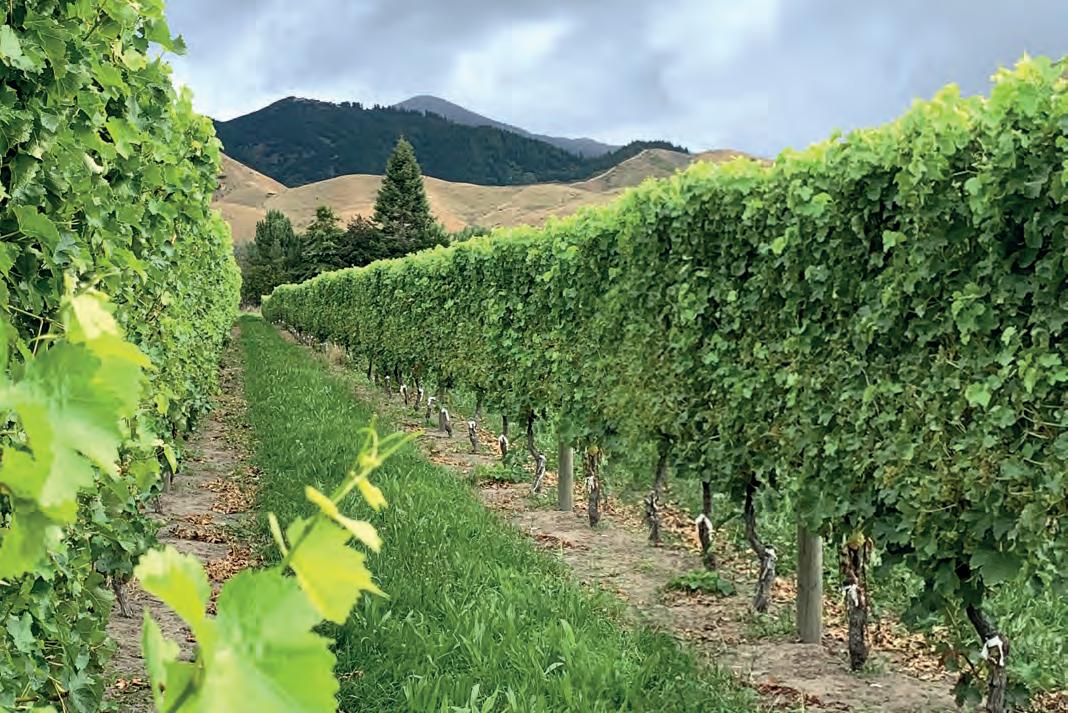
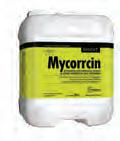
*Asusedin2021AccoladeWinestrial for provenyieldincreaseandbettertastingwine. Mycorrcin – to boost soil microbes that increase root growth and nutrient uptake Digester – to stimulate decomposition microbes to recycle organic matter fast Foliacin – to improve foliar health and resilience in times of environmental stress


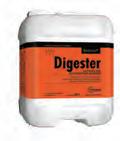
Offering work-based training opportunities in vineyards and wineries is key to attracting more people to the viticulture industry, says Tim Henry, Vineyard Manager of Indevin’s Gisborne vineyard. “We need to provide these opportunities to new people coming in who will take over when the current generation of experience moves on to retirement.”
Tim has been involved in training team members for more than 20 years and currently has three employees learning toward a new Primary ITO New Zealand programme – the New Zealand Apprenticeship in Horticulture Production (Wine Growing). “My experience is that many people I work with here may not have found their future pathway at school. We find ways to help them so they can achieve.”
As well as support from experienced staff members, learners and employers are supported by a Primary ITO training advisor with regular contact and site visits. Training Advisor Wayne West says Indevin is an example of an employer who is invested in growing the skills of team members and

providing opportunities for them to learn and advance. “We support the company by providing an encouraging environment where learners can succeed. We want them to have a positive experience so they can build confidence and knowledge and ultimately achieve a qualification.”
Indevin also partners with Gisborne Boys’ High School to give students vineyard work experience, and employs school leavers and university students during the summer holidays and busy season. Its three learners in the new programme began with school holiday jobs but chose other careers before returning to Indevin. Lucas Westend started out leaf plucking and mowing at Indevin in his holidays, later completing the New Zealand Certificate in Agriculture Level 2 and 3 and gaining experience in farming before returning to Indevin in 2020. “I came back because I enjoyed operating tractors and
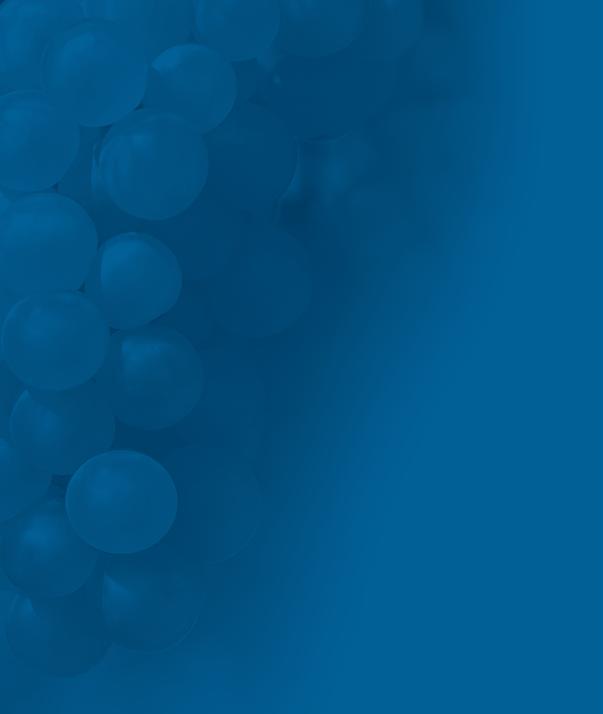
fencing and there were opportunities here to continue that. Back here I really enjoyed the maintenance work and wire lifting, fixing wires and replacing posts with the grape work.” He is enjoying learning about soils, plant development and the process from grape to wine production through the ITO programme. “It leads on from what I studied in agriculture, and I love learning off those who have been here many years and have a lot of experience.”
Twin brothers Kaleb and Daniell Hare both returned to Indevin after taking different career paths after leaving school. Kaleb lost his carpentry job due to Covid-19 in 2020 and then took the vineyard job. He likes the variety of work and building skills in new areas which keeps it interesting. “It is easy to learn because there are knowledgeable people here who teach us, and it is a positive culture so that keeps you feeling supported.”
A team of seasonal vineyard workers in Wairarapa are proving a fast, cohesive and dedicated bunch – and that’s not just on the football field. “They have their own team that competes in the league,” says Craggy Range National Vineyard Manager Jonathan Hamlet. “They run out there each weekend in their Craggy Range kit and boot a ball around.” Which is exactly the kind of community involvement Craggy Range envisioned when they gained accreditation in the Recognised Seasonal Employer (RSE) scheme, then brought in their first crews from the Solomons and Vanuatu in 2021. “Our approach to our RSE workers is they are part of our family,” Jonathan says. “They are making a massive sacrifice to come and work with us.”
In October the company completed its RSE Village on a river terrace at the edge of a Te Muna vineyard, in a “critical link” in the process. “This has been the game changer,” Jonathan says, talking of the importance of labour security. “Craggy Range is committed to Martinborough because we truly believe this is one of the most special regions on earth for Pinot Noir and Sauvignon Blanc; however, it is a small community. For us to maintain the hands-on approach we take to farming each individual block, it would be impossible without the RSE scheme and the workers who now intimately know our vineyards.”
The village is built for 48 workers, which is what Craggy Range needs most of the year, excluding a month after harvest and before budburst, when the requirement halves. Its current allocation of RSE workers is 20, so they are reliant on relationships developed with other companies, including a joint ATR (Agreement to Recruit) with Bostock in Hawke’s Bay, which enables seasonal workers to tackle the apple harvest as well as the busiest vineyard periods in the Wairarapa. “There are really good synergies with other players,” Jonathan says. Craggy Range ensures workers in Wairarapa who want to visit friends back in Hawke’s Bay can, while also slotting in trips to watch a Phoenix game in Wellington, and regular fishing missions to Lake Ferry. “Nothing has been easy, but the rewards

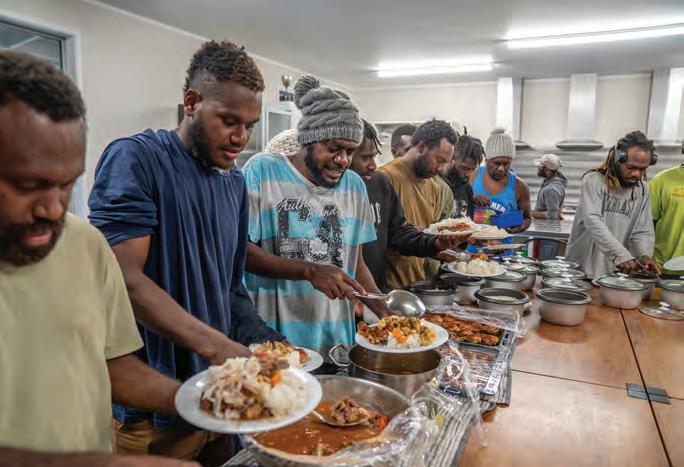

and relationships have been very positive.” Their “RSE team” is largely coming back year after year, he adds. “That experience and knowledge of our vineyard is extremely
valuable in raising the quality of how we farm.” And the value goes both ways. “The guys are earning really good money to take home and make their families successful.”
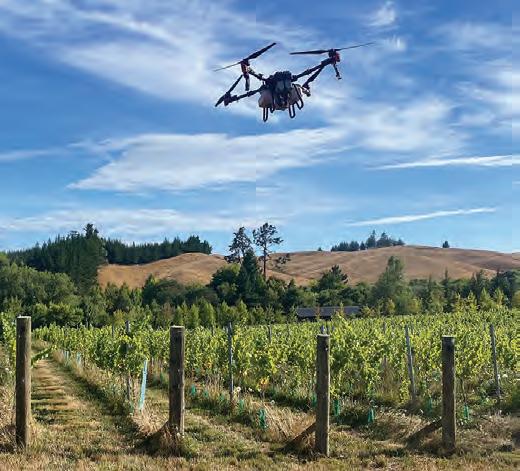 Tasman Drone Services
Tasman Drone Services
SOPHIE PREECE
Abel flew through its spray programme – quite literally – in the lead up to vintage 2024. Using a drone for spring spraying and autumn fertilisation helped protect the Moutere wine company’s clay soils, while saving time and emissions, says Mark McGill, who owns and runs Abel, a Chardonnay and cider producer, with his wife Sophie. “It means I can actually spend more time in the vines doing canopy management rather than sitting in a vehicle.” Spray jobs that once took him hours can be done in 15 minutes. “If I can free up time to spend in my vines, why not?”
Mark and Sophie want a tractorless farm, orchard and vineyard,
“It means I can actually spend more time in the vines doing canopy management rather than sitting in a vehicle.” Mark McGill
to reduce costs and soil compaction. While Mark still sprayed other blocks with his mule this season, the drones could mean that in the future Abel’s rows are impacted by little more than boots and hooves, enabling greater soil carbon sequestration, and enhanced water and vine infiltration, while also dramatically reducing diesel use.
While the drone sprays from above, changing the angle of penetration, he’s confident of the coverage, noting that downwash from the drone helps open up the canopy. “We trialled it on two different vineyards – our own vineyard with young vines and not a lot of canopy, and an old one with a lot of canopy, in two different parts of the region. So we got a good understanding of what’s possible… we’re certainly going to do more next year.”
Scott Horgan at Airbourne Solutions has been working with the likes of Abel in Nelson, Bilancia in Hawke’s Bay, and Felton Road in Bannockburn, and says drone spraying addresses challenges like narrow rows, cover crops, emissions reduction targets, and impractical spray operations. Some of the companies are buying their own drones, while others, like Abel, are using local contractors. Several of the viticulturists he works with are planning to tailor their canopy management to the drone application, Scott adds. While the vineyards he’s worked with so far are small in scale, he believes drones would be suited to any vineyard.











Sauvignon, Chardonnay, Albariño… well, while we do love a good drop, what we really mean is that we have decades of wine industry experience and know the industry and processes inside out.
This understanding enables us to offer insights and create seamless solutions that make a real difference for even the most complex projects.
Learn more about our winery engineering services and experience.
Marlborough Canterbury Hawke’s Bay Otago
kotahistudio.co.nz/winery
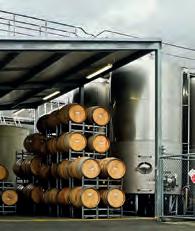
Marlborough’s 2024 vintage was “a return to form for Marlborough summers”, says Astrolabe General Manager Libby Levett. Loose bunches ensured minimal disease pressure and hot, dry weather led to early ripening and a “dream vintage”. The smooth season was especially appreciated by the Astrolabe team as they coordinated receiving early fruit intakes with opening the Small Town Winery, Marlborough’s first urban winery and cellar door.
The dream of their own space had been fermenting for years, born of an ambition to integrate the team more closely, to focus even more on small-scale, hands-on winemaking, and to have an opportunity to showcase their wines directly to the public. “Dad always talks about succession planning” Libby says, referring to Astrolabe founder and Winemaker Simon Waghorn. “Previously our office was removed from the winery; we didn’t have that capacity to learn by osmosis.”
Libby’s sister Arabella Waghorn, Astrolabe Winemaker and Brand Manager, expands on the benefits: “If I’m in the cellar door or working in the office upstairs and Simon wants to taste through ferments, we can just pop out back. Simon has been teaching me about winemaking in the vineyard and managing larger production wines at New Zealand Wineries for more than seven years. However, at our new Small Town Winery, it is so easy to stay in touch with the whole process all the way through.”
It has also allowed the Waghorn team to indulge in some more experimental
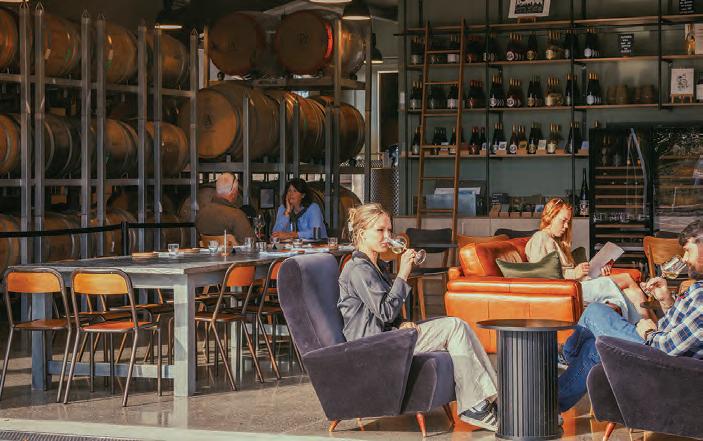
batches. “When it’s your own wine and your own time… you can be quite uncompromising,” Libby says. “When people are managing a whole bunch of different clients, they have to be quite pragmatic. We don’t – we can be quite romantic here.” Trials this year include a Syrah from the Comelybank vineyard in the Waihopai Valley – something that was too small to manage previously but fits perfectly in the little red fermenters at the new site. They have also trialled a cuvefermented Chenin Blanc and a sparkling wine base.
The smaller-than-normal 2024 vintage helped, with 160 tonnes of fruit processed despite a maximum capacity of 250 tonnes. However, Libby notes that the compressed harvest period could have posed some challenges. “We were really lucky that it was a small vintage. With everything that close together and us at full capacity we would have felt a bit more under pressure.”
Considering they opened a cellar door the same month they ran their first vintage through the facility, “it all went pretty
well”, she adds.
The design of the tasting area and restaurant was inspired by the industrial and artisanal Howard Smith Wharves in Brisbane, as well as various ‘enoteca’ style offerings overseas. The team researched menus from wine bars in France, Melbourne and London. “We had a pretty clear idea of what we wanted,” Libby says of the chef-free offering. “We always wanted it to be ingredient-led food that could stand on its own… We kind of had a policy that we would only serve things that we thought were excellent and didn’t require a heap of preparation.”
The concept was embraced by Charlie Nott from Nott Architects in Christchurch. Having previously designed iconic New Zealand restaurants like Al Brown’s Depot and Charley Noble in Wellington, they brought serious hospitality experience to the project. “We wanted to strike a balance between a working winery space – a cool industrial feel, but also feeling cosy and elegant like a wine bar,” Arabella says. “And in my opinion, I think it’s been nailed.”

A combination of lower grape yields, lower price per tonne, and increasing vineyard operating costs, is hitting Marlborough grapegrowers in the pocket, says WK Advisors and Accountants Director Hamish Morrow. “For those with bank debt, interest rate pressure will also be a factor, particularly when comparing to prior years when interest rates were extremely low.” Hamish says balance sheets of vineyard entities have typically held up “reasonably well” in recent years, with shareholder equity remaining solid. “However, we are seeing the servicing aspect, which is driven by profitability, becoming more challenging.”
The low production 2024 season will increase the average price per bottle for many wineries, as direct costs to produce the wine are spread over a lower volume, Hamish says. “In addition to this, the drop in volume is exacerbated if extraction rates – the litres of juice extracted from grapes – are lower, which we are also seeing due to the drier season.” The wine industry performed “very well” through Covid-19 restrictions and in subsequent years, but is now seeing a flattening of demand, which casts a different light on the low yields, Hamish notes. “At a macro industry level having a lower yielding year is likely preferential to a high yielding year if the market demand is not there.”
WK is working with a number of clients and their financiers to ensure business models remain sustainable. “We would recommend growers at a minimum conduct a simple break-even analysis and have an annual cash flow to understand their cash cycle. It is common for growers to receive their payments in large lumps, so management of this over the year is important, along with factoring in debt servicing and timing of tax payments.” They use tax finance “extensively” with growers and company clients, “to help smooth tax payment and align with seasonal cash flows”, he adds. “And we are seeing banks accommodate debt servicing by restructuring loans to interest only for periods of time whilst profitability and cash flow recovers.”
Many wineries are looking at their cost base, which has meant a reduction in the price per tonne they’re buying grapes for, Hamish says. “In addition, we are seeing wineries conduct reviews of their other cost structures and processes to enhance efficiency and remove waste from their business where possible.” Recent years have seen wine business selling most of their wine on allocation to customers, but reduced demand and a normalising of supply chain has motivated more proactive sales and marketing tactics, he says. “Utilising technology is also a key area where we see wineries develop to try become more efficient.”
The economic performance of the Marlborough region is explicitly linked to the wine industry. That means tighter times in wine, exacerbated by a broader economic slowdown, will generate further challenges in the year ahead, Hamish says. “Due to the lower profitability, we would expect to see some capital projects delayed, rescoped or abandoned. This will have a direct flow on to the ecosystem that supports the industry,” he adds. “We’re seeing already a lot of belt tightening play out across client businesses and households.”
Generally speaking, the last three to four years have been high performing for the sector on the back of strong demand for Marlborough Sauvignon Blanc “so we should be well positioned for a slowdown”, Hamish says. “There is a large capital base committed in Marlborough which needs to be maintained. With any primary production it will never be completely linear – there is always a cycle and often when there is a downturn it can also create opportunity for a business to review and improve their offering.”
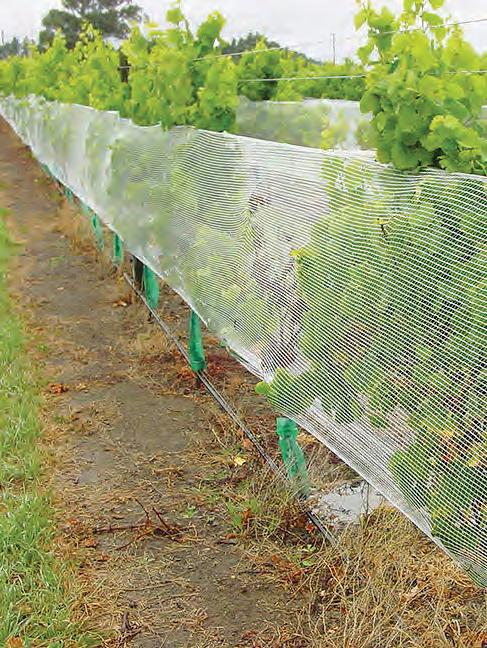


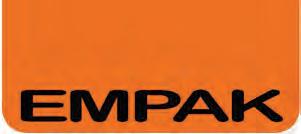
Pyramid Valley had its longest Chardonnay Vintage ever this year, thanks to Hawke’s Bay and Central Otago fruit travelling to the North Canterbury winery. “In every district Chardonnay has performed superbly, so that’s something new and exciting for us for 2024,” says Winemaker and Estate Manager Huw Kinch.
“In every district Chardonnay has performed superbly.”
Huw KinchSteve Smith MW, co-owner of Pyramid’s parent company Aotearoa New Zealand Fine Wine Estates, says the 2024 season was a return to a “classic” North Canterbury weather pattern, with an unsettled, quite wet spring followed by a long dry summer, with more than 10 days over 30C, then a slightly cooler, dry autumn harvest period. Advection frost events in mid-September and towards the end of October resulted

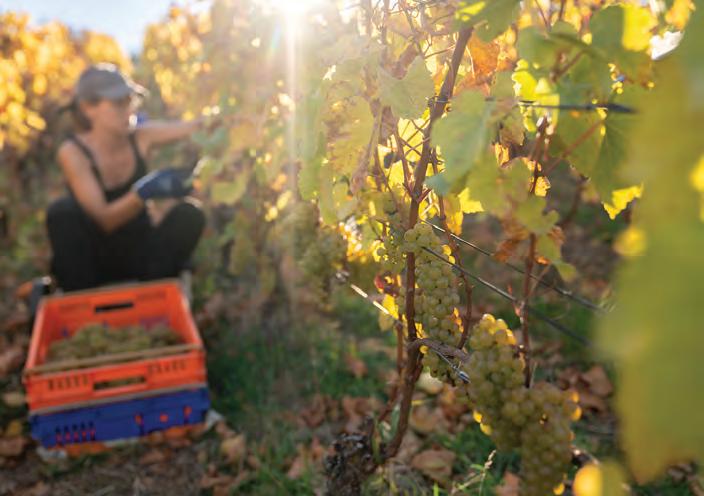
in quite severe damage, especially to Chardonnay, with frost fans not working in many cases, due to the nature of the frost. Summer and autumn were very dry, with only 120mm of rain between December and April, and harvest proceeded from midMarch through until later April in excellent conditions, Steve says. Yields varied across
the region, but quality appears “exceptional”, he adds. “Especially for Chardonnay and Pinot Noir on the vineyards where clay and/ or limestone soils, and judicious irrigation on the lighter soils, mitigated severe water stress. A potentially truly great vintage awaits for those who managed the challenges of frost and were patient.”
We’re passionate about wine. As New Zealand’s specialist wine lab, we combine technical expertise with creative thinking. Giving you the information and insight to make your wine your way.
We’re passionate about wine. As New Zealand’s specialist wine lab, we combine technical expertise with creative thinking. Giving you the information and insight to make your wine your way.
Talk to our team at Pacific Rim Oenology Services to learn how we can support you with lab services and advice, testing for export and world-leading winemaking products:
Talk to our team at Pacific Rim Oenology Services to learn how we can support you with lab services and advice, testing for export and world-leading winemaking products:
❑ Cutting edge lab technology
❑ Lab testing - from standard tests to sorbic acid testing to export analysis (EU and Japan approved)
We’re passionate about wine. As New Zealand’s specialist wine lab, we combine technical expertise with creative thinking. Giving you the information and insight to make your wine your way.
�������� Lab testing - from standard tests to sorbic acid testing to export analysis (EU and Japan approved)
❑ Consultation on wine production techniques, troubleshooting and quality improvement
�������� Consultation on wine production techniques, troubleshooting and quality improvement
Talk to our team at Pacific Rim Oenology Services to learn how we can support you with lab services and advice, testing for export and world-leading winemaking products: Passion. Precision.
❑ Decades of experience to help with the different challenges and considerations of each vintage
�������� Cutting edge lab technology
❑ Supplier of Novonesis, Enologica Vason and Mercier, and other leading winemaking products
�������� Lab testing - from standard tests to sorbic acid testing to export analysis (EU and Japan approved)
�������� Consultation on wine production techniques, troubleshooting and quality improvement
❑ 100% committed to your success.
�������� Decades of experience to help with the different challenges and considerations of each vintage �������� Supplier of Novonesis, Enologica Vason and Mercier, and other leading winemaking products �������� 100% committed to your success.
�������� Decades of experience to help with the different challenges and considerations of each vintage
�������� Supplier of Novonesis, Enologica Vason and Mercier, and other leading winemaking products �������� 100% committed to your success.
See you at WinePRO 2024.
See you at WinePRO 2024. Ask us about our lab insights for vintage 2024 and products for 2025! Pacific Rim Oenology Services 03-577-9000 info@pros.co.nz www.pros.co.nz
Ask us about our lab insights from 2024 and products for 2025! Pacific Rim Oenology Services 03-577-9000 info@pros.co.nz | www.pros.co.nz


The Central Dozen isn’t about finding the “shiniest examples” of Central Otago Pinot Noir, says Felton Road Winemaker Blair Walter of a new annual selection programme.
“We are looking for diversity and quality and aspiration, celebrating different subregional styles or winemaker styles within the selection.”Blair Walter
Instead, the initiative looks to reflect subregional diversity, winemaker styles, and quality across a spectrum of price tiers, starting with a selection of 12 wines from the 2022 vintage. “It’s really exciting to see

what comes to the fore in a blind tasting using rigid show judging conditions, but also encompassing the idea what we want to achieve,” Blair says of the first tasting, which was led by Emma Jenkins MW a week before harvest. “We are looking for diversity and quality and aspiration, celebrating different subregional styles or winemaker styles within the selection.”
The range of 2022 Pinot Noirs, which will be sent to wine reviewers, influencers and trade around the world, includes the “usual
suspects” of higher priced wines, right through to bigger volume, lower priced Pinots, he says. “We were excited to see that happen because that’s one of the beauties of Central Otago; that Pinot Noir can be made right through the different price levels in achieving incredible quality.”
Looking to the 2024 vintage, Blair says Bannockburn had an “exceptional” season, with a warm, dry summer capped by a cool March, slowing development for a lingering harvest.


Harvesters weighing fruit in situ, digital dashboards with real time data, live map scheduling, and a sonic bird scarer cruising on a robot. Ten years ago each of these components may have seemed like distant technology, but it’s increasingly business as usual at Indevin, where cloud capabilities have “revolutionised” the management of harvest in recent years, including through a “democratised” platform that enables winery and viticulture crews to see logistics in real time on mobile devices. “This gives us the agility we need to act quickly and get the most from every hour of harvest,” says Indevin Group Winemaker Jason Cook.
The system was launched for the 2022 vintage, when New Zealand picked a record-breaking crop, with Indevin accounting for 20% of the
532,000-tonne total. Its recent purchase of Villa Maria added complication to that already pressured period, but also the opportunity to lean into new technological solutions, says Indevin’s chief technology officer Peter Terpstra. The biggest lever they could pull was to harvest effectively, “and try to harvest as much of the supply in the right condition at the right time”, he says. “To do that we need all that harvest logistics of the harvester, the trucking companies and the wineries to be working in tune. And of course they are at different cadences.”
Indevin worked with Amazon Web Services (AWS) on collecting, corralling and aggregating the data, then presenting it real time on digital dashboards, so that winery and vineyard teams were singing from the same song sheet when tracking progress from vineyards, harvesters, trucks and processing. As well as displaying data from Indevin’s 1,004 subblocks nationwide, the system taps into real-time data from sensors on the likes of wine presses, loading bins, pumps and flow meters, enabling Indevin to improve its throughput by 30%, thanks to an alignment of harvest output, grape processing and storage capabilities;
through helping manage adverse weather conditions and production issues; and through optimising ground teams. It was, says Jason, “one of the critical parts of surviving that harvest”.
For Group Technical Viticulturist Rhys Hall, the technology supplies “a single source of truth”, so he can easily assess which blocks are planted in Pinot Noir, for example, what the demand is for table, rosé, or sparkling wine, and how that meets the expected supply for each wine style. His colleagues can go to the same system and see harvest expectations against actual yields, winery capacity at that moment, or when each block is to be pruned, and how. As plans are changed, people see revised expectations in real time, without Rhys having to open an array of Excel spreadsheets. The technology helps the team “handle the complexity” of Indevin’s scale, and be “intentional” about what they are growing, which is “something I am huge on”, Rhys says. “These dashboards and tools help me do that and get information out to the teams, so they can grow the wines we are wanting.”

The democratisation of data companywide also means that insights that might once have been siloed in the vineyard are now available to a commercial team, and vice versa. Alongside the AWS system, Indevin uses a companion system called VineCraft, designed inhouse, which offers a map view of 250 vineyards around New Zealand. Indevin can use the visual system to adapt plans, such as the sequence of harvest or pruning order, using a Gantt chart, with changes apparent to anyone accessing the system. “This tool has saved heaps of heartache,” Rhys says.
By next season Indevin plans to have
Indevin’s data project is one of the presentations at the inaugural Research and Innovation Forum being held in Wellington on 30 August as part of the Altogether Unique 2024 programme. Indevin Group winemaker Jason Cook will talk about utilising real time data and “smart systems” to boost efficiency and wine quality. Attendees will also hear from Nuffield scholar Hans Loder from Penley Estate in Coonawarra, South Australia, whose viticulture programme taps into technology and data to grow efficiency, improve soil health, and better assess fruit ripeness. nzwine.com/en/events
at least five harvesters weighing fruit as it’s picked, giving Rhys a bespoke view of vine performance, able to address underperforming areas where possible.
“In the end productivity is the main
When Dario Jerez started work as a vintage cellar hand at Indevin, he expected to stay a few months. But a passion for technology and a curiosity for improving systems soon led to his promotion from fixed-term contract to full-time tech-whiz for New Zealand’s largest wine company.
“Management came to see what I was doing, and how I did it so fast. It was just a case of being aware, understanding the systems and thinking of ways to do it better.”
Dario Jerez
When Indevin’s Winery Transformation Analyst joined the company in vintage 2021, during a year-long working holiday, it was the latest in a string of jobs he had held since arriving from Chile, including kiwifruit and cherry picking, and landscape gardening at a naturist community.
After more than five years studying industrial engineering in Santiago, followed by four years working in business intelligence, Dario could easily have been bored with the change of pace. Instead, he approached his work with
driver... Being able to track that as it comes off the vine is huge,” he says. “It’s the missing data we didn’t have before, and that technology is increasing rapidly.”
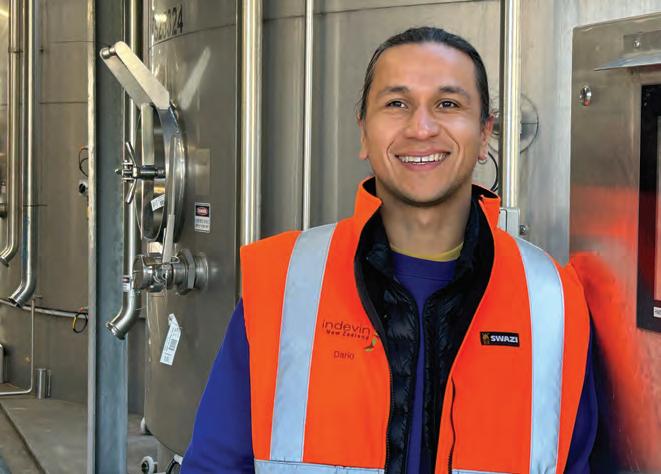
curiosity and mindfulness. During his first vintage at Indevin, he worked in the bin receival area, a simple job that was mainly “pushing buttons”, he says. “It was an easy task, but I went in with the mindset of wanting to do a good job, of being present and mindful, and focusing on what I was doing. I didn’t expect to have any progression, but started looking for ways to do it better and faster, just as a challenge and to enjoy my work.”
By the end of vintage Dario had mastered his position and honed the procedure to the point where he was recording some of the fastest bin receival times in many years. “Management came to see what I was doing, and how I did it so fast,” Dario says. “It was just a case of being aware, understanding the systems and thinking of ways to do it better.”
He was invited to stay on in the cellar after vintage, but it wasn’t long before he was itching to return to work in the technology space.
On encouragement from a colleague, he approached Indevin, got an interview, and was offered a part time position in the technology department, helping with a new project using smart tank data to calculate the brix level of wine. By vintage 2022, Indevin had seen the value Dario’s skillset brought the company and he was offered a full-time position as Winery Transformation Analyst. Using data collected by company software, Dario was able to identify bottlenecks in the wine production process, leading to improved productivity over the past two vintages. The next step: applying the same logic to the vineyard.
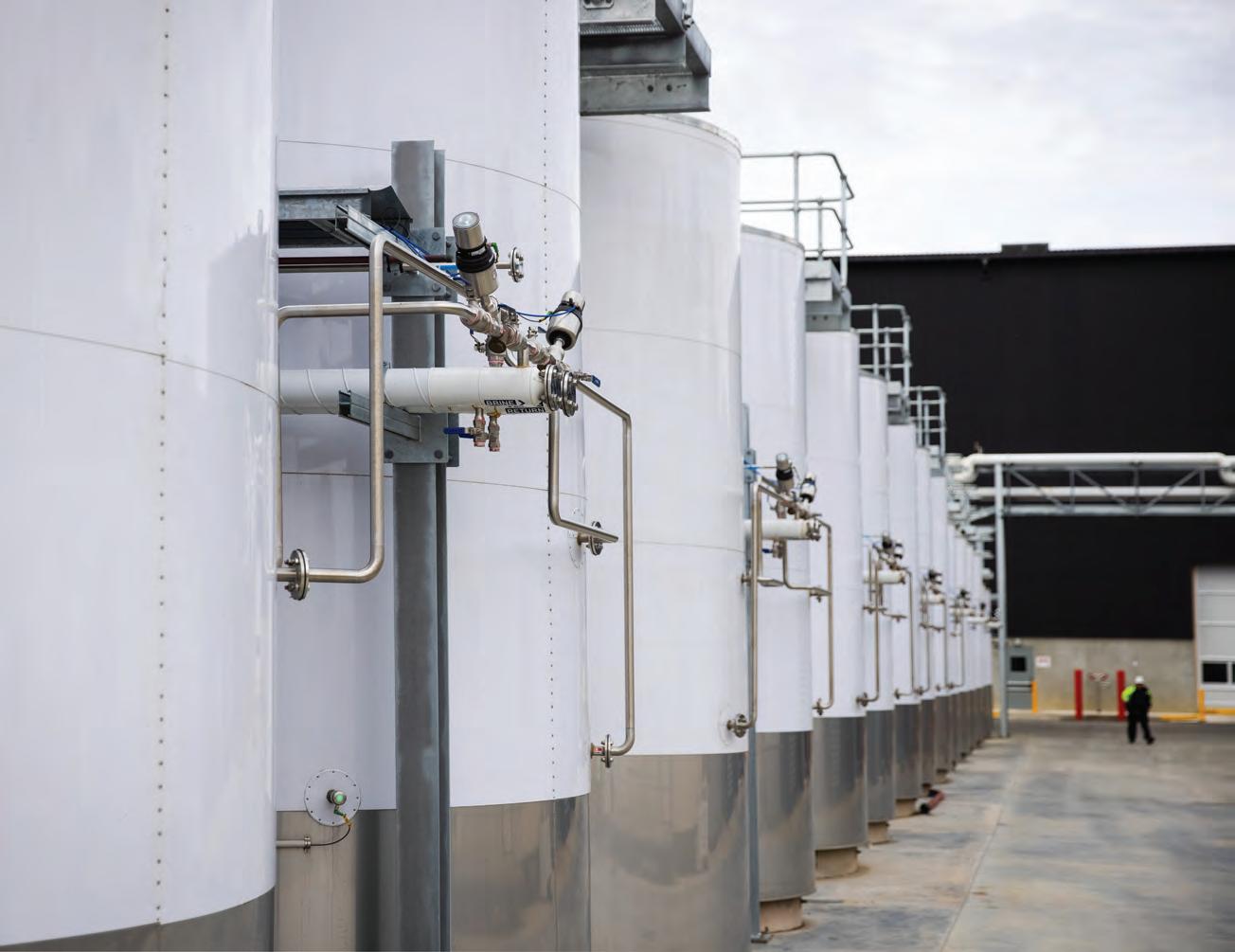
20+ years working with local installers, providing fit-for-purpose valves and tank control management systems for New Zealand winemakers.
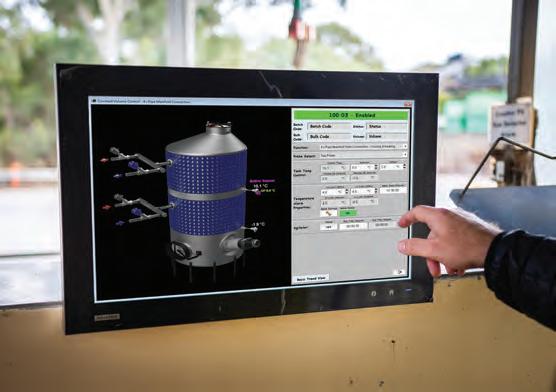
// Discover why the wine industry prefer to partner with us >

New Zealand’s wine industry is “severely lacking in any diversity”, says the head of a research programme working to secure a repository of grapevine genetics, including disease resistant vines.
One aspect of Bragato Research Institute’s (BRI) Grapevine Improvement Programme is developing new clones of Sauvignon Blanc with diverse traits, with plans for a collection of 12,000 unique vines to reduce risk and grow quality. But programme leader Dr Darrell Lizamore says importing disease resistant vines (DRV) from Europe is another important piece of the puzzle, giving growers the opportunity to plant new varieties bred from contemporary and disease resistant parent stock, such as wild American vines that evolved alongside the powdery and downy mildew pathogens.
After several generations of breeding, the vast majority of traits in a DRV come from the commercial variety, while a small but important portion hails from the wild parent. Historically the success of the breeding would be tested with mature plants in the field, but modern DNA testing allows for marker-assisted selection, enabling a faster process to develop varieties with commercially desired attributes and natural disease resistance.
Darrell notes that winegrowers in Champagne and Bordeaux are already tapping into the advantages of DRVs to reduce their reliance on sprays and address challenges of climate change. “DRVs offer a proactive approach to mitigate these risks.” Comparing that growing appetite to the more muted response in New Zealand, he says the focus on eradicating sprays in Europe has made DRVs more of an “existential question” there. “This is one of the really promising options for them. I don’t think many New Zealand winemakers are thinking that way yet.”
BRI is working with overseas developers of DRVs, looking beyond varieties they think will perform “very well in New Zealand”, to seek a wider range of genetic traits. Darrell explains that their performance here will depend on other factors, including the strain of the
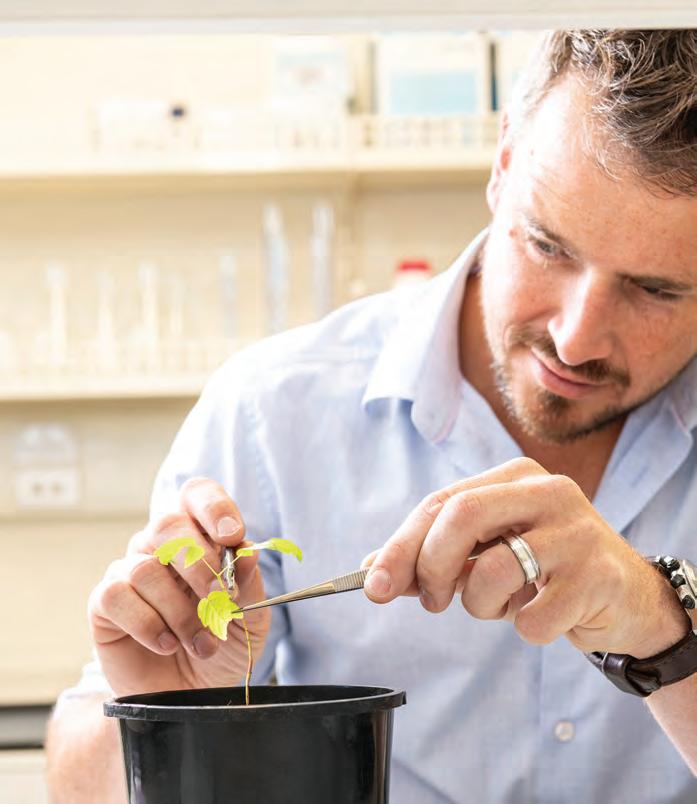
pathogens, so something that performs well in France’s Loire Valley may be less successful in Marlborough. “We want to bring as diverse a population of DRVs into New Zealand as possible, so we can assess the various resistance genes locally,” he says, noting a dual goal of applying less chemicals while yielding high quality wines.
Cloudy Bay’s parent company Moët Hennessy is already trialling DRVs in Champagne, says Cloudy Bay Technical and Sustainable Development Director Jim White. “I think that’s a really good indication of the acceptance of these varieties.” Grapegrowers around the world, including New Zealand, are “locked into a growing system” that requires constant spraying for protection against powdery and downy mildew, and he sees a lot of potential in DRVs. “I expect this will be part of a varietal revolution in coming years.”
After finding several European examples he thought could be good options for New Zealand, Jim poured a selection of wines for a panel of winemakers, researchers and
Dr Darrell Lizamore. Photo Stephen Goodenough
nursery experts in Marlborough earlier this year. He knew there’d be some doubt amongst the tasters, based on the bad reputation forged by early examples of hybrid wines, which had “foxy” characters from the American parent material. But nearly a century after the first releases, the “very good” wines he chose are akin in character to Marlborough Sauvignon Blanc, while “the need for spraying is massively minimised or you don’t need to spray at all”.
Cloudy Bay has been liaising with Riversun Nursery, which already has some DRV in quarantine in New Zealand. “In reality we won’t have the opportunity to make any wines beyond a trial scale until 2030 or maybe 2032,” Jim says. “But we see huge potential in disease resistant varieties.”
Darrell and Jim will talk at The Future of Plant Breeding at Grape Days events in June, along with BRI scientist Dr Annabel Whibley (nzwine.com/grape-days).
To read a Q&A on DRVs, go to bri.co.nz/2024/03/12/disease-resistant varieties.
SOPHIE PREECE
In Braden Crosby’s many years as a winemaker and viticulturist in the Wairarapa, he enjoyed the mix of practical, applied research at Grape Days events, “with a little blue sky added for future reference”. So when he joined Bragato Research Institute (BRI) last year as Knowledge Transfer and Engagement Lead,
“I think there has always been a few key take home messages to integrate into my management practices.” Braden Crosby
he relished the chance to help design a programme with practicable implications, now and into the future. “This year we

near-term and long-term messaging for the
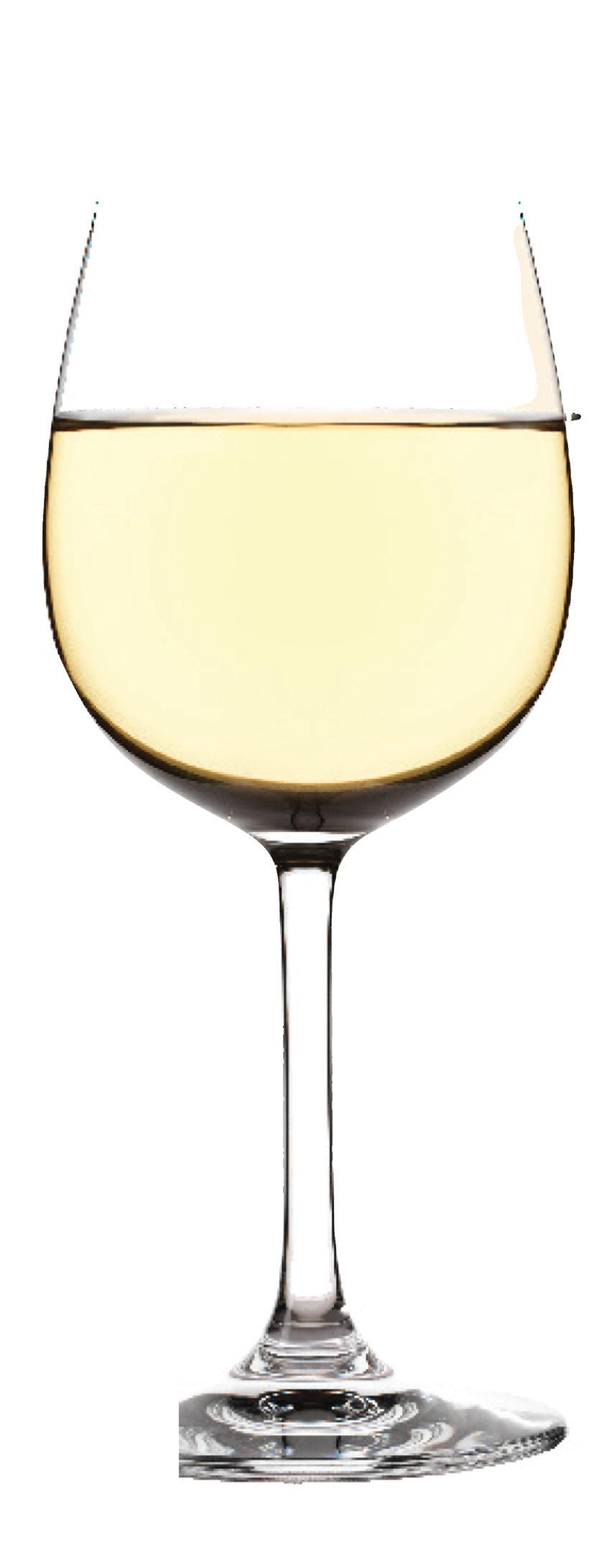
says Grape Days presentations on understanding and managing the sexual phase of powdery mildew were “invaluable” for viticulturists and growers, “as has been the virus elimination and grapevine trunk disease management strategies that have presented over the years”. The regional research days have been one of the key opportunities for the viticulture community to get together and learn from researchers and practitioners, he adds. “I think there has always been a few key take home messages to integrate into my management practices.”
The Grape Days events in Marlborough
(June 24), Central Otago (July 2), and Hawke’s Bay (July 4), will present a mix of BRI’s medium-term projects on alternatives to cane pruning and grapevine remediation, as well as rootstocks and drought tolerance, vine improvement nationally and internationally, and discussion of both the Pinot Noir Vineyard Ecosystems programmes. “We want industry members to leave with an understanding of research that can impact them right now, and in the future,” Braden says. “To ensure the long-term sustainability of our industry.” nzwine.com/en/initiativesevents/research




Auckland University PhD candidate
Gillean Miller won the best student presentation prize at the inaugural New Zealand Wine Centre Scientific Research Conference late last year, capturing attention and accolades for her research into the biogenesis of gamma-nonalactone during winemaking. She shares some insights into her work and its importance to the wine industry.
Please describe your PhD topic
My research looks at gamma-nonalactone, a volatile compound associated with stone fruit and coconut aroma in wines. Although this compound has been quantified in both white and red wines, and its contribution to wine aroma has been demonstrated, little is known about how it is produced during winemaking. Does it come from the grapes, yeast metabolism, malolactic fermentation, or oak during fermentation or ageing?
How have you progressed?
We addressed the above questions in three steps. First, we developed a sensitive analytical chemistry method for the quantification of gamma-nonalactone in wine, which was necessary as gammanonalactone is generally present in very low concentrations in wine and therefore difficult to measure accurately. We used this method to quantify gamma-nonalactone in New Zealand wines for the first time, focusing on Pinot Noir, as well as white wines with and without noble rot (which in wines from other countries has been shown to increase the amount to gammanonalactone present). Those two steps have been completed, and I have published a paper on method development and analysis of New Zealand Pinot Noir wines, with a paper on white wines currently in the works. The third step is to investigate the biogenesis of gamma-nonalactone during alcoholic fermentation, using different yeast strains, oak, and spiking juice with different precursors prior to fermentation. The resulting wines will be analysed using the method we developed.
What did you present at the New Zealand Wine Centre Scientific Research Conference?
I focused on the third stage of my research, because I’ve had some interesting results here. I’ve identified a few chemical

“The third step is to investigate the biogenesis of gamma-nonalactone during alcoholic fermentation, using different yeast strains, oak, and spiking juice with different precursors prior to fermentation.”
Gillean Miller
compounds from which gammanonalactone can be produced, although the mechanisms of these processes are not yet clear. I am currently investigating the impact of using different yeast strains and strains with certain genes ‘deleted’ to get a better idea of what might be going on.
What’s most challenging about this research?
The multidisciplinary nature of my project is both the best and most challenging part. I’m lucky enough that I’ve been able to develop a range of skills, including organic synthesis, analytical chemistry, and microbiology/ biochemistry – but this means I need to be constantly researching the techniques I’m using, and figuring out new ideas for experiments. It’s definitely not boring though!
What drew you to Auckland University and wine science?
University of Auckland (UoA) has excellent schools of chemical and biological sciences, which originally drew me to this university. I completed my BSc in these subjects and was keen to undertake research involving both organic chemistry and microbiology. It just so happened that my current supervisors, Drs Rebecca Deed, David Barker, and Lisa Pilkington, had the perfect project, which was in the wine science field. This was also quite fortunate as I do enjoy the occasional glass of wine!
Who has helped you with this PhD?
I couldn’t ask for a better supervisory team – any time I need advice or just to discuss something, they are always happy to help. I work with a great bunch of people in the lab, who are always keen to bounce ideas off each other. Of course, I wouldn’t have made it this far without the support of my family or partner, and the financial support of the UoA Doctoral Scholarship.
What’s next for you?
I’m in the final year of my PhD now, so I’m writing my thesis while I finish my last few experiments in the lab. I’m excited to see my research collated in a cohesive way, then see what opportunities may lie ahead in my career.

A large part of the Marlborough Research Centre’s success over the past 40 years is the communication carried out by those that worked there, a leading scientist says. The centre, which was established in May 1984, is now a hub of grape and wine research and education, with Plant & Food Research’s Viticulture and Oenology group, New Zealand Winegrowers’ sustainability team, and Bragato Research Institute all onsite. The New Zealand Wine Centre is nearing completion of a future-focused vineyard lab, to be officially named and opened on 26 July. It also retains the Grovetown Park campus, and uses the 10-hectare Rowley Crescent vineyard for research.
Dr Mike Trought, who was the officer in charge when the centre was founded, then a regional scientist with MAF Technology, says it began because of the vision of people like Bob de Castro, who put his own money
behind the initiative. Funding also came from MAF, the DSIR, and the then three councils. Funding from Marlborough District Council continues today, and has been an essential part of the centre’s growth, enabling a smaller amount of funding to be leveraged into much larger projects with external backers. Mike says research in the early days focussed on a wide range of sectors, from work on cherry physiology to the introduction of pasture species at Molesworth. There was even work on grape vine irrigation and diseases. “Our team was enthusiastic and dedicated.” His job was to “collaborate with as many people as I could and encourage them to work in Blenheim”, which extended to putting them up in the spare room of his house.
The early years of collaboration and
communication set the centre up, and a review of it after five years confirmed its success, Mike says. The centre become the contact point on any science matter for the public, aided by a monthly article in The Marlborough Express and the distribution of annual reports and other material as widely as possible, with the annual report going to as many people overseas as it did in New Zealand.
Gerald Hope, who joined MRC as chief executive in 1991, recently stepped down, with John Patterson to take over the role from 1 July. “New Zealand’s future is aligned to developing new technologies, and sustainable growing systems that minimise environmental impacts and mitigate the impact of climate change”, John says.

Felton Road produces two distinctly different single vineyard Pinot Noirs from two relatively close Bannockburn vineyards, both farmed biodynamically.
Ziyu Li, from Lincoln University’s Department of Wine, Food and Molecular Biosciences, has been exploring the distinctive sensory profiles of these wines, along with their chemical differences, by considering the individual sites, rootstocks, soils and rhizosphere microbes. In this Q&A, Ziyu takes us from land to lab to explain her work.
What intrigues you about this research?
According to a report conducted in 2013 by Dr Roland Harrison, there are significant differences in soil properties between the two vineyards of Felton Road, named Calvert and Cornish Point. These two vineyard sites are about 5km apart and are characterised by having similar growing conditions and viticulture management. We believe differences in soil profiles could be a strong driving factor that influences the soil microbial diversity and consequent grape and wine chemical composition.
Please explain the work to date. During the 2023 vintage, we collected samples from both vineyards, including soil samples and berry samples from the same clone but different rootstocks. Laboratoryscale winemaking was then conducted to investigate the consequent impact on the resultant Pinot Noir wine composition. A range of analysis, including soil physical and chemical properties, rhizosphere microbial diversity, and grape and wine composition, were conducted.
What’s most challenging about this research?
We have included a very large amount of samples over two vintages in this project, and thus a large amount of data will be collected. Appropriate statistical analysis of the data will be the most challenging part in this study, in order to find out the potential relationships between soil, microbes and grape and wine composition.
What drew you to Lincoln University and wine science?
During my master’s study at Northwest

“We believe differences in soil profiles could be a strong driving factor that influences the soil microbial diversity and consequent grape and wine chemical composition.”
Ziyu Li
Agriculture & Forest University in China, I not only acquired fundamental knowledge in grape cultivation and winemaking but also gained an initial exposure to the wine industry. In October 2017, I attended a workshop delivered by Drs Harrison, Charles Brennan, and Bin Tian when they visited my university. They introduced me to the New Zealand wine industry and a range of current research projects conducted at Lincoln University, and I developed a great interest in studying at Lincoln University and exploring more of the New Zealand wine industry.
Who has helped you with this PhD?
During the research process, I received valuable assistance from many people.
With their help, I was able to smoothly carry out sample collection and various experiments. My supervisor Dr Bin Tian patiently demonstrated the experiments and guided me through each research stage. The associate supervisors, Drs. Leandro Dias Araujo, Olaf Schelezki, and Romy Moukarzel, actively engaged in discussions with me, providing significant input into experimental design. The staff at Lincoln University were willing to train me thoroughly in the induction and experimental equipment. Staff at Felton Road, especially Blair Walter (advisor of my project) and Larissa Woods, also provided excellent assistance in the experimental plan and collection of the grape samples.
What’s next for you Ziyu?
Completing this project on time with the aim to provide valuable new information for the wine industry through a better understanding of the interactions among the soil properties, rhizosphere microbes, and grape and wine chemistry. Following this, I intend to get an academic position at university, and pursue further studies in this field, in order to have deeper understanding of complex interaction between environmental factors and grapevines.
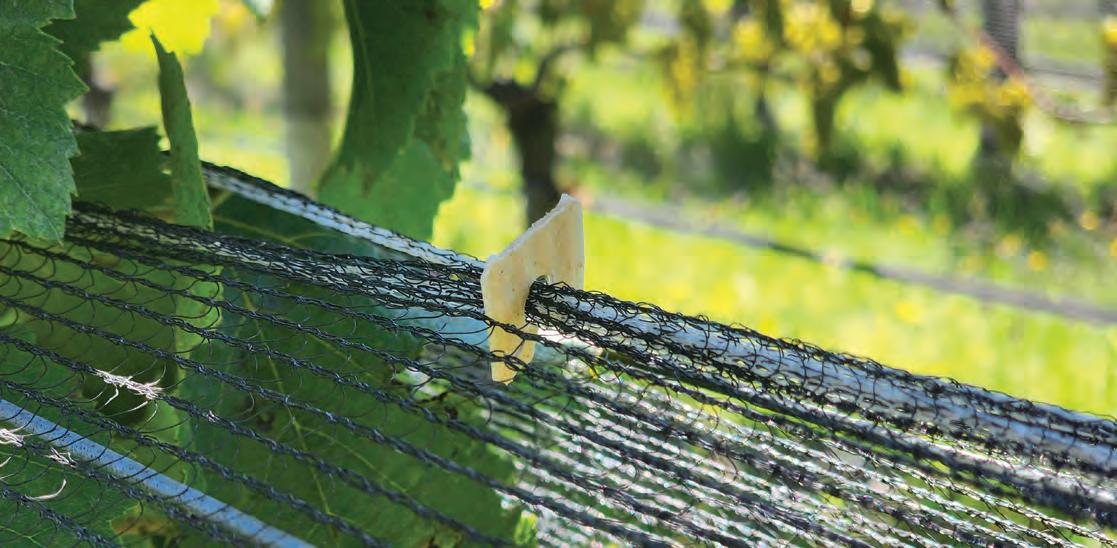
The complete electrification of horticulture, viticulture and farming is inevitable, says Mike Casey from his Central Otago cherry orchard, which runs on sunshine and sells power back to the grid. With the “plummeting” price of solar systems and batteries, electrification is an economic “slam dunk” in his industry, “and if it is for cherry farming it almost certainly will be for viticulture as well,” says Mike, one of the speakers at the upcoming WinePro expo in Blenheim.
WinePro is on in from June 25 to 27, with an exhibitor area of 70 suppliers, science providers and startups, a conference programme with more than 21 expert speakers and panelists, a Women in Business breakfast blending old and new wine world business practices, and a Dragon’s Den investor event to amp up emerging innovations. Wine Marlborough General Manager Marcus Pickens says Mike, who is part of the not-for-profit Rewiring Aotearoa, is part of an impressive lineup of conference speakers, including climate expert Dr Jim Salinger, (Kiwibank New Zealander of the Year 2024), New Zealand Story’s David Downs, BERL’s Amanda Read, social scientist Professor Paul Spoonley, and Simplicity’s Sam Stubbs. “The conference has been developed around a theme of Innovate, Elevate, Celebrate, and we have experts tackling everything from climate change to the circular economy, electrification to artificial intelligence, vineyard development to autonomous tractors, labour to leadership, and from New Zealand’s changing demographic to

its ‘superpower’ brand.” The session themes have tapped into pressing topics for the industry, with bookings strong for the three-day programme, he says. “Having industry in the same space as innovators, scientists, suppliers and impartial experts for three days is a unique opportunity, and we expect to see new technology, initiatives, partnerships and field trials seeded at WinePro 2024.”
Plant & Food Research will present several of its ongoing projects at the expo, including the new experimental vineyard lab to be launched at the New Zealand Wine Centre in July. The facility, which is being developed alongside the Bragato Research Institute winery in Blenheim, has a retractable rain shelter and will host 48 pots of soil, plants and sensors, enabling research into climate change adaptation. Plant & Food Research science group leader for viticulture and oenology Damian Martin says the lab will be part of a worldleading hub for research and innovation, and a “magnet” for collaboration. WinePro offers a great opportunity to share that and
other key research programmes, he says. “It is very important to make the wine industry aware of the need for long horizon, underpinning research to answer questions that relate to balancing the economic need for intensive grape production systems with good stewardship of the environment for future generations.”
Plant & Food Research plant pathologist Dr Karmun Chooi says events like WinePro are a valuable opportunity to communicate projects to industry and receive feedback.
“We have to let industry stakeholders know that tech and science companies can work together, and do want to work together. This is where events like WinePro are important.” Karmun has been leading a tech collaboration using artificial intelligence and autonomous vineyard robots to detect grapevine leafroll disease in New Zealand vineyards. VinEye, which was put to the test across 50 hectares of vineyards in Hawke’s Bay and Marlborough vineyard during the 2024 harvest, includes input from Agri Automation, which supplied the Robotic Burros; Bitwise Agronomy, which

In an industry where succession stories are an enduring tradition, the Besamusca family has tapped into intergenerational talent to offer layered and accessible data to vineyard operations.
Integrape was seeded in 2002, when viticulture consultant Gerard Besamusca sought a systemised approach to the wealth of information required to serve his clients. His son Joris, now Managing Director of Integrape, notes that 20 years ago data was paper or file based, with reports stored as PDFs in emails or in filing cabinets. “A major difference over the last 15 to 20 years has been a move to more connected data, with growers having data streams from machinery, more infield sensors, staff chat apps and a range of cloud-based services.”
Gerard’s daughter Mirjam, who had worked five years with Hill Laboratories’ software team, helped develop the tool, and as he tapped into the data and associated graphs, the consultant found clients eager to access their data in the same way. He called on Joris, then a freelance web developer, to provide a cloud-based interface, which was launched as Integrape in 2004. “With a background in design, my approach to the problem focused on the importance of making the information easy to navigate and digest,” Joris says. “A key aspect of this visualisation was the spatial variability of a vineyard, with results presented on interactive maps – pixel-based representations – before services like Google Maps existed.” His mother Mieke was also involved in setting up hundreds of vineyard block maps and result allocation in the early days of Integrape.
In 2016 Joris led a major rebuild of the system, including a shift to a “true” geographical information system, enabling incorporation of layers such as remote sensing through drone and satellite imagery. He then formed a new company to separate the software from Gerard’s business, with a focus on bridging the gap between data and its presentation. These days Integrape and its

offshoot Vure, a data collection app, are used on around a third of New Zealand’s planted vineyard area, covering more than 300 vineyards from Northland to Central Otago, and in trials in France, California and Australia.
Joris says that while data has increased exponentially in volume, resolution and frequency, it often remains siloed. “A lack of interoperability between platforms and formats can lead to reactive management, with important information often being too difficult to include in relevant decisions.” Integrape’s point of difference is that it doesn’t focus on one particular type or source of data, he says. “For example, remote sensing offers a great way to capture full vineyard variability using vegetation indexes, but to test the soil, samples still need to be analysed in a laboratory. Meanwhile cameras travelling through rows are an exciting new option for assessing certain metrics –but bunches still need to be weighed and counted manually for accurate results. The aim is to provide a platform where all this data can be integrated into the decision process.”
The continued success of Integrape lies in ongoing conversations with viticulturists and growers, “to better understand how our software might help them collect, organise and dissect the information they need”, Joris says. “One exciting recent development has been the
availability of yield maps produced by some of the newer harvesters. On their own they provide a nice overview, but we are now trialling the integration of this data to help calculate optimised sampling locations for yield estimation.”
Integrape is one of the companies at WinePro this June. “Often these discussions also lead to ideas for improvements or even different applications that help us shape our product roadmap”, Joris says, explaining that on-the-ground industry involvement is a key part of the “Integrape equation”, along with scientific, data-based representation. “As such we’ve been working to develop close relationships with crown research institutes like Plant & Food Research, as well as the likes of Bragato Research Institute, to incorporate the work they produce into tools that are directly valuable to end industry users.”
He paraphrases his father in saying “the best way to really understand what’s happening in the vineyard is to walk amongst the vines”. But many growers are managing greater areas with less time, while the volume of analytical data has steadily increased, as has the emphasis on reporting. “The challenge is finding the balance between data driven decisions, and providing efficiencies that allow more time in the vineyard, backed with the macro and micro insights offered by technology.”
processed and analysed huge amounts of raw data using the Plant & Food VinEye algorithm; and Integrape, which provides online monitoring tools. “Partnering with winegrowers, other leading agritech companies and Plant & Food Research is providing the opportunity to develop a tool which could be a game changer for the industry going forward,” says Integrape’s Joris Besamusca (see page 43).
“Having industry in the same space as innovators, scientists, suppliers and impartial experts for three days is a unique opportunity.”
Marcus Pickens
Each company has its own speciality, and together they can help generate a new solution for industry “that will be fit for purpose”, Karmun says. That’s a message they’ll all be sharing at WinePro. “We have an opportunity to show others what we’ve been able to achieve together, but it’s also important for us to hear feedback from industry at these events. What do they think of the project? What more or less do they want to see? This feedback is essential for our collaboration too, as it helps ensure our project outputs are relevant for industry and we can also consider potential future industry applications.”
Steve Saunders, co-founder of Robotics Plus, says collaboration is essential to solving industry challenges. His business will be at WinePro in collaboration with Croplands, presenting Prospr (see page 67), an autonomous, multi-use, hybrid vehicle designed for vineyards and orchards. “It is crucial to get the industry involved in new

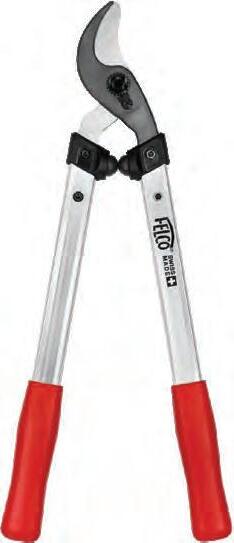

technology innovation early. Growers are innovators, and they are looking at different ways to transform and grow for automation that addresses key pain points,” Steve says. “Our interactions with early customers have been partnerships, with growers sharing their experiences and how they would like to see technology develop in the future.”
Marlborough District Council Economic Development Portfolio Manager Mark Unwin says the event is a great opportunity to showcase technology already in the field, noting the handful of autonomous tractors at work for Marlborough’s 2024 vintage. It will also showcase emerging technology through the conference programme and a dedicated startup section at the expo, as well as through a Dragon’s Den event on the evening of 26 June, where angel investors will weigh up the opportunities and challenges presented by startup founders. Wine Marlborough, Marlborough District Council and Expertise Events developed the WinePro conference programme with help from an industry steering group comprised of Tracy Atkin, Heath Stafford and Ben McLauchlan. Tracy, who is a startup champion, board director and Chief Executive of Marlborough Capital Ltd, says they wanted innovative topics and “provocative” thinking, addressing the big issues right now and essential considerations for the future. She’s excited by the breadth and depth of the conference offering, the Startup space in the expo, and a Women in Business breakfast she is leading on 27 June, themed around blending old and new world wine business, with speakers Eva Pemper, Anne Escalle, and Dr Samantha Scarratt sharing experiences in New Zealand, Australia and Europe.
WinePro is not just about business, says organiser Gary FitzRoy, of Expertise
Events. “It’s a celebration and tribute to the remarkable achievements of the New Zealand wine sector.” winepro.co.nz
A collaboration between Pernod Ricard Winemakers and Marlborough-based water engineering company SWE has resulted in “smarter, faster, and safer” spray technology. SWE was named as a finalist in the NZ Hi-Tech Awards for its SmartSpray solution, which automates the spray mixing process using an automated pumping and injection system. Tractor spraying units receive the right quantity, composition and dilution of solution, tailored to each specific job, minimising manual and chemical handling. SWE’s Stephen Leitch says the process allows vineyard operators to complete spray mixing in just 25% of the time previously required. “The previous standard practice for spraying in the vineyard required operators to dress in PPE, put gloves on, mix up the chemical solution, put it into the spray unit and then take all the PPE gear off and hang it up before they’re able to complete the cycle of spraying. Then they’d have to come back and do it all again for the next cycle… Operators can now simply connect a hose and push a couple of buttons to start the automated filling process, then they are good to go.” SWE is one of the exhibitors at WinePro New Zealand in Blenheim this June. The NZ Hi-Tech Awards were to be announced late May.

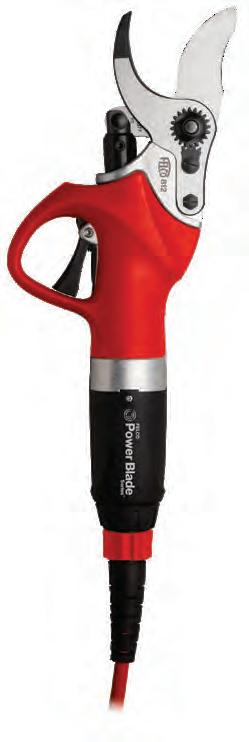

New Zealand winemakers are increasingly matching fermentation options with the potential of their grapes and “the needs of the wine they are creating”, says Fermentis Director of Sales Jo Pitt. “They make choices in fermentation and how they manage it.” The yeast population contributes to flavour, texture, mouth feel, body, colour extraction, Jo adds. “There are so many things that are fascinating about yeast, and we are always discovering something new about them and how they are managed.”
Fermentis will be at WinePro in Blenheim from June 25-27, building on relationships with winemakers and researchers, including the team at Bragato Research Institute, with Fermentis a gold sponsor of the Research Winery since 2020, as well as a client, having running micro-vinification trials in recent years, including one evaluating the efficacy of two Fermentis yeasts on Marlborough Sauvignon Blanc wine quality and typicity. Jo says each wine growing region of the world is unique, and the research winery
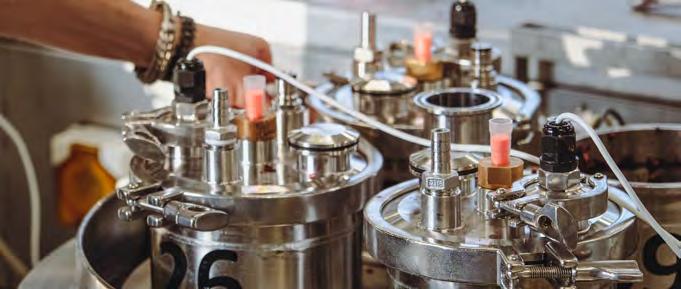
has “incredible” fermentation capabilities, with fermentation monitoring, and experts to test products at pilot scale, while being representative of New Zealand winemaking conditions.
The company has also done significant work on trying to improve the sustainability of yeast operations in wineries globally. “We have made most Fermentis strains Easy to Use (trademarked E2U) which means that winemakers do not need to rehydrate our yeasts. Our yeast with this certification guarantees that they can be directly inoculated into the must or through a
rehydration process. The direct inoculation means the winery saves water, cleaning, energy, labour and makes easier in the winery at a very busy time.” Going forward, there will be more opportunities to control yeast populations in fermentation, he adds. “We will see innovations in this area for sure. We very much look forward to that.”
Events like WinePro are a great opportunity to listen to New Zealand winemakers, he adds. “The exchanges are very valuable.”
To read more about the Fermentis BRI trial, go to bri.co.nz/news


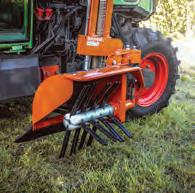


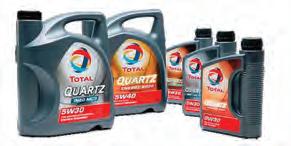


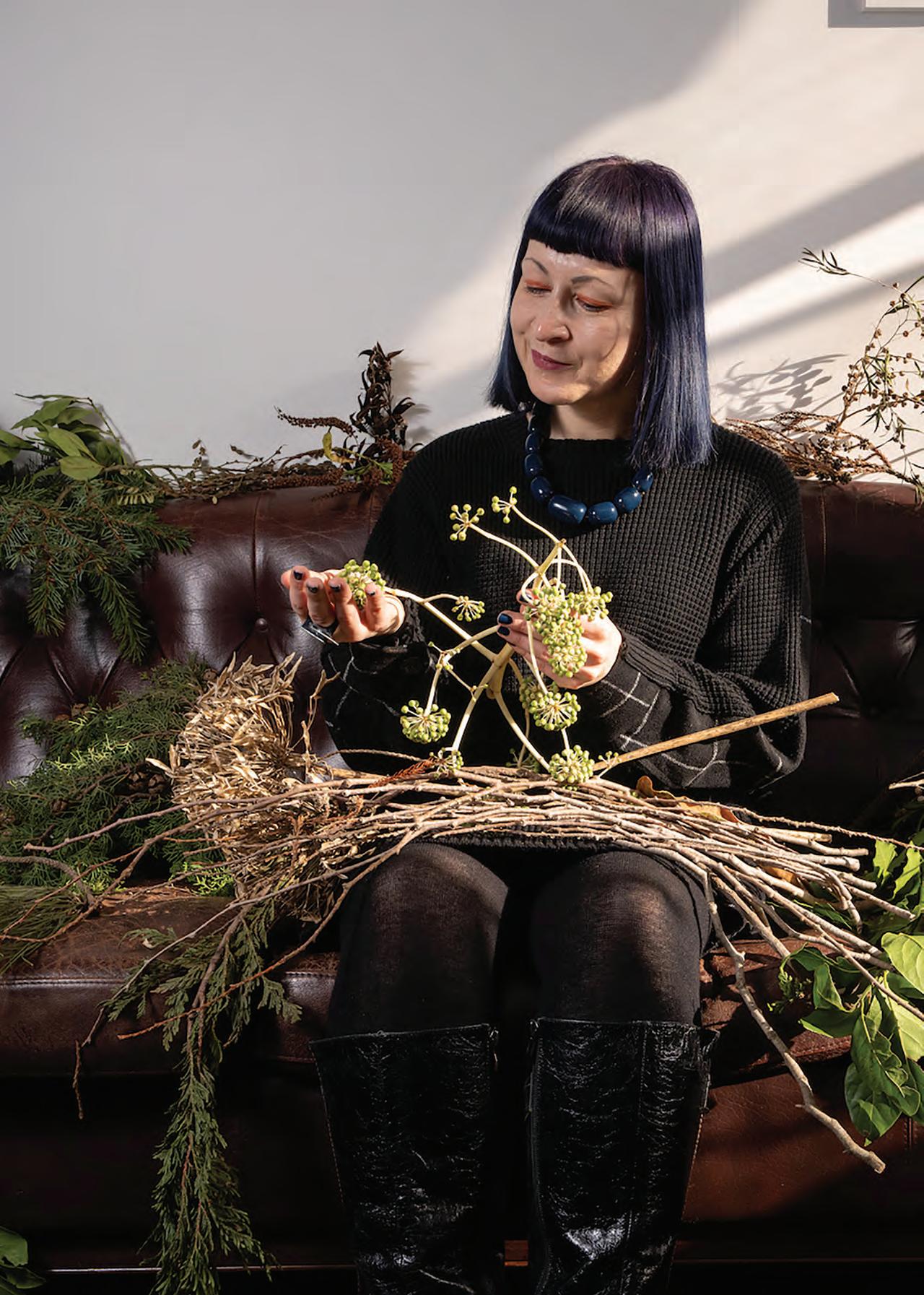
Dr Jo Burzynska’s senses must cheer loudly when she falls asleep each night, for that’s the only time they get a break from their heavy workload. She’s made a rewarding and varied career out of being a highly sensealert person, particularly drawn to the many fascinations and crossovers of the sensory realm (especially in relation to wine). She is, in her own words, a “multisensory explorer”.
Most will know Jo as Wine Editor of NZ Herald’s Viva magazine. But there are many more strings to the Burzynska bow: she’s a wine judge; a published author (Wine Class: All You Need To Know About Wine in New Zealand); a sound artist; a researcher; a curator; and a perfumier, with her just released ‘The Frequency Range’ a suite of fragrances that match different parts of the sound spectrum.
Jo first fell for the mystique of wine in
her late teens during trips to France with her parents. Based in the United Kingdom, they made regular trips to a spot near the Loire Valley to renovate a house. “One of our friends was a wine merchant there, and I’d get to try little samples of wine,” she says. The imprint of this early wine tasting experience stayed with her. After completing a master’s degree in English, Jo took wine qualifications and worked in the wine trade in London. “From that point on, I was completely hooked.”
Realising two of her biggest loves – wine and words – could hold hands inside the same career, she took herself off to evening journalism classes and paved a path towards wine writing. It’s a career that’s kept her thoroughly engaged ever since – not least because the dictionary’s paltry range of wine-suitable adjectives adds extra linguistic hurdling to the mix. “The English language is not particularly strong in descriptors for smell and taste and mouth texture. Those describing wine professionally have almost had to develop their own vocabulary. It’s a challenge.”
Having pursued a career as a sound artist alongside her wine and writing forays, Jo found a new area of enthralment in combining all three. She’d discovered a
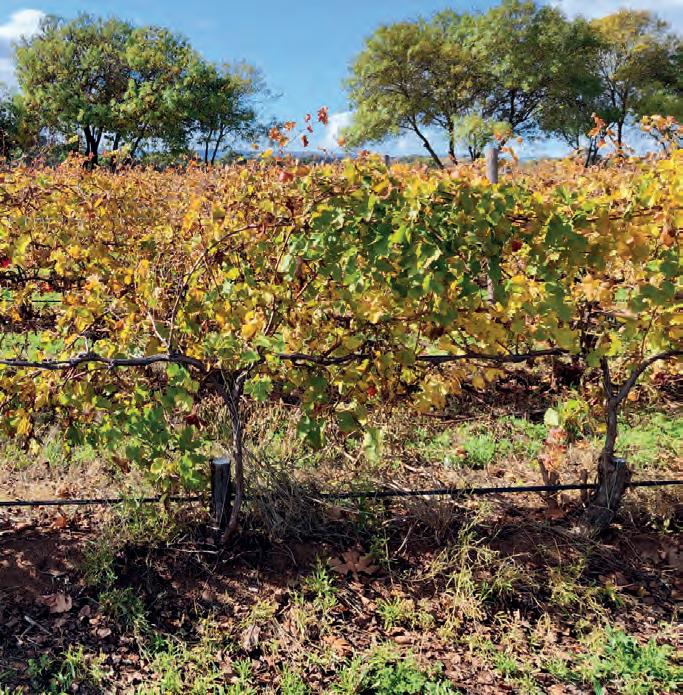
research paper that showed sound could influence a person’s perception of taste. This tallied with her own experience – she’d often change the music she was listening to when it chafed with what she was drinking. But she figured it was just a ‘Jo thing’ that owed to her high engagement with both fields.
“Listen to some of Vivaldi’s Spring with a high acidity wine like a Riesling. Then try drinking it with drum and bass – the focus goes away from the acidity and the pitch emphasises the body and richness of the wine.”
Jo Burzynska
When she began testing the idea on her friends with informal wine and music pairings, she realised its legitimacy. She went on to establish the world’s first sound and
wine bar at Christchurch’s Auricle Sonic Arts Gallery in 2014, where she curated wine and play lists to match exhibitions. Two years later she decided these sonictaste interactions had legs enough for a multidisciplinary PhD. She spent four years at the University of New South Wales, Australia, blending art and science to investigate the ways our senses interact. “There hadn’t been a huge amount of research into interactions between smell and taste and hearing. A lot of the research had been done with sound and vision because we’re such a visually dominated society. But poor old taste and smell get left behind.”
She launched a Substack in 2021 called ‘Oenosthesia: Blending Wine and Music’ to share her research in this field and continued hosting wine-and-music-pairing events. Her mission: to elevate our drinking experience. “If you pay better attention to your multi-sensory environment, you realise there are loads of things going on just below the level of consciousness that are really quite exciting. That’s what I try and get people to tap into.”
When asked what tried-and-true combo she’d suggest to the most sceptical of sippers, she says one of the “classic correspondences”
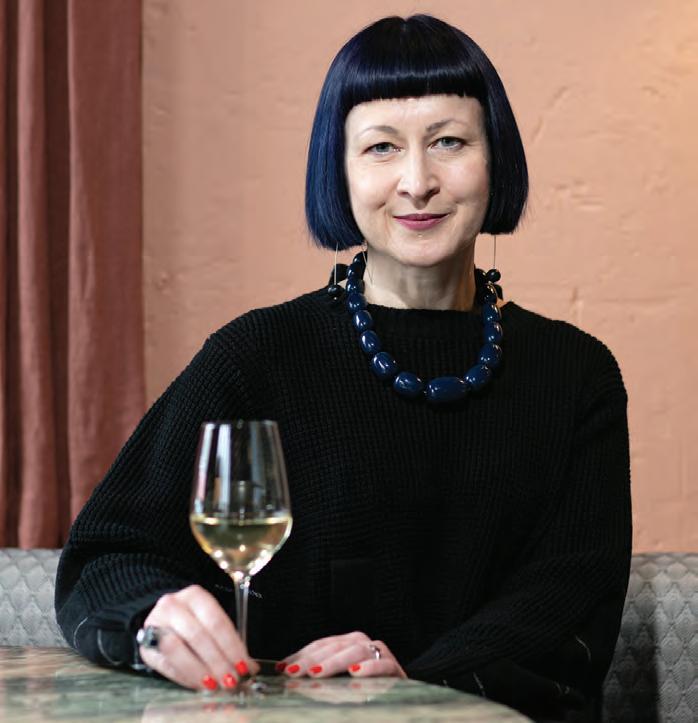

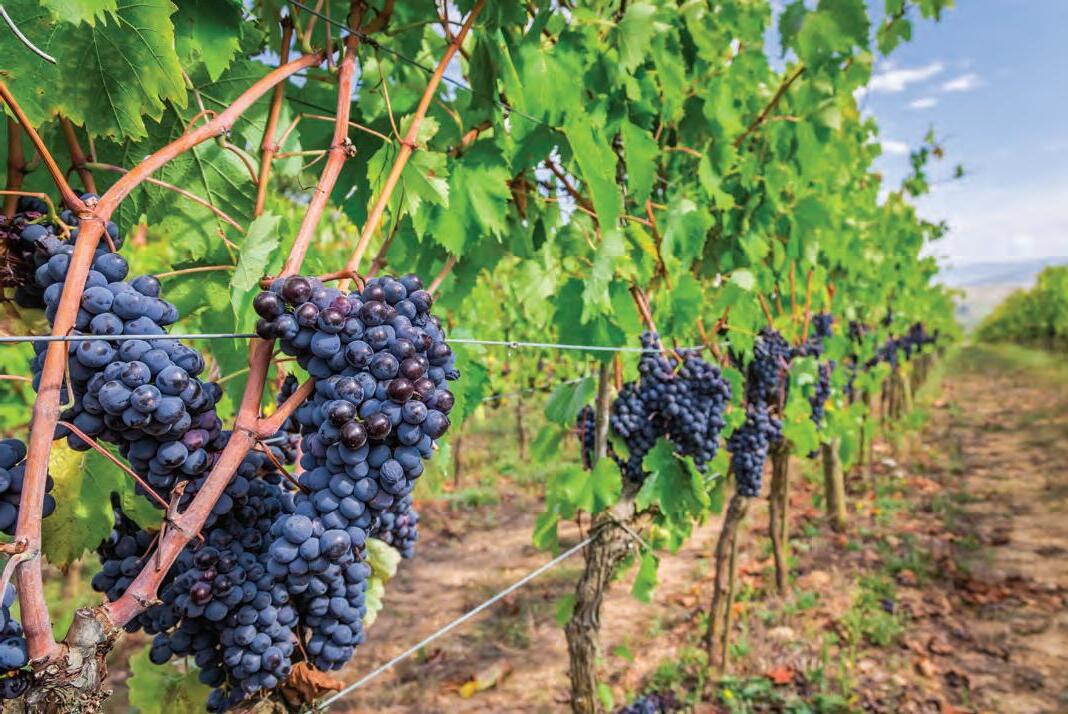
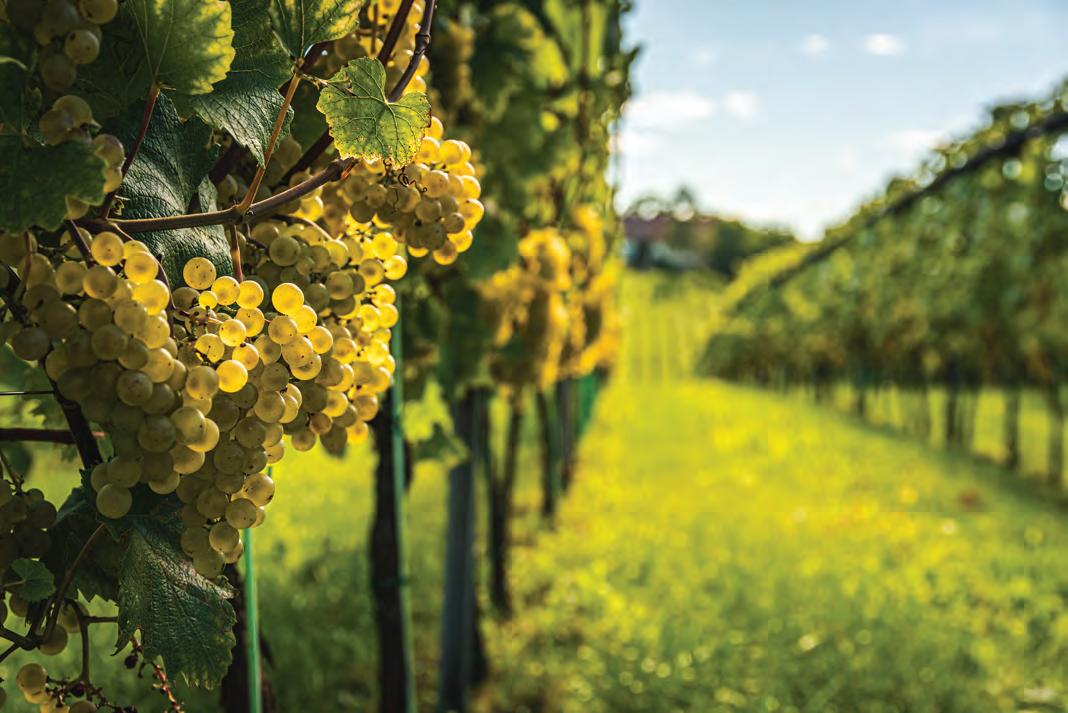
is high acidity and high pitches. “Listen to some of Vivaldi’s Spring with a high acidity wine like a Riesling. Then try drinking it with drum and bass – the focus goes away from the acidity and the pitch emphasises the body and richness of the wine.”
Alternatively, there’s the sonically sensitive Pinot Noir, which thrives in the company of Brian Eno’s Discrete Music: “It’s a record that tends to go well with a lot of wines. It’s a subtle, ambient track so if you’ve got something that’s a bit on the harsh side in your glass, it can soften it.” She’s yet to meet a genre that she can’t find a tipple for. She survived the litmus test for this recently, when she was invited to come up with wine and music matches for a heavy metal zine based in the United States. “I did go into it with a bit of trepidation. But I found there were wine characters like effervescence that worked with distorted guitars in metal. I think it does prove that there’s nothing you can’t match with wine.”
Jo’s heightened senses can sometimes be a rod for her own back, though. She recalls having to abandon a bar visit on a trip to Sydney due to the dire sonic-taste situation she encountered: “I entered a smart wine bar excited by the promise of its eclectic
wine list. I left, disappointed not by the wines, but by its execrable ‘worst hits of the eighties’ music playlist.” She adds, “I don’t mind a bit of cheesy 80s music, but it wasn’t doing those wines any favours. You can’t have power pop when you’re trying to coax out delicate flavours from an Armenian wine.”
Jo says that some in the wine industry are actively exploring the synergies between taste and sound. France’s House of Krug has been leading the pack on this front by inviting composers, musicians, and immersive sound artists, to create music inspired by their prestige Champagnes. Such experimentation is slower on the local front, but she says there are murmurings of interest from the wine industry about how to elevate the tasting experience. “I did a multisensory dinner tour with Church Road Winery. They included lots of different sensory elements (like changing the colour of the wine by wearing coloured glasses which changes the perception of the wine). It was really interesting. There are many nuanced levels that can be thought about and brought into the eating and drinking experience.”
She’d love to see the hospitality industry

A natural way to increase
Our all-natural fine particle fertiliser delivers gentle yet powerful nutrients accurately and without waste. The secret? Unadulterated, high-quality ingredients blended into pellets. They’re easy to spread and with less waste you don’t need as much, so it’s better for your soil and our earth. Call us on 0508 678 464 or chat with your local rep.
by CP Lime by CP Lime
embrace the richness of the audio-gustatory realm. “A lot of wine bars and restaurants don’t think enough about the music they play in their establishments. They pay attention to the decor and the shape of the wine glasses and then just let bar staff play something off their iPhone.”
By spanning the sensory gamut, Jo’s workload is anything but dull. “The more you pay attention, the more there is to pay attention to. I have so many interesting projects to pursue. I do feel like there are not enough hours in the day.” She and a fellow chronic attention-paying friend have formed a ‘workaholics anonymous’ group of two to keep a check on each other’s career excesses. “We meet up to confess how many projects we’ve taken on. We haven’t had time for a meeting lately.”
Jo Burzynska is to publish a book based on her doctoral research into the sensory, aesthetic and emotional influence of sound on the experience of wine. It will be published by Routledge in its Sensory Studies books series.

EMMA JENKINS MW
Capturing Sir George Fistonich in a few pages seems a fool’s errand. Not only does he have 63 extraordinary years in New Zealand’s wine industry, including many profound contributions, but at age 84 he’s embarking on an ambitious series of projects with his company Fistonich Family Vineyards. “Retirement sounds really boring,” he laughs. “After a couple of years of being isolated and kicked out, which was boring and stressful, I decided, ‘bugger this.’ Never retire, keep working, take risks!”
“Now I feel 100 years younger. It gives me energy having something to do.”
Sir George Fistonich
These days Sir George estimates his time is split between the new brands Čuvar and Obliix, overseeing the vineyards and winery operations, and pursuing legal challenges relating to the receivership of the parent company of his original winery, Villa Maria. “Now I feel 100 years younger,” he says. “It gives me energy having something to do.”
Born into an immigrant Croatian family that settled in Mangere, Auckland, Sir George duly did as his father told him (“You didn’t argue back then”) by getting into a trade and compressing a five-year building apprenticeship into just under four years, all the while harbouring a desire to make wine. Wine was a constant presence at family meals and larger get-togethers in the tight-knit Croatian community. In the 1950s, commercial wine sales were predominantly port and sherry-styles, with dry reds and whites more typically made in backyard set-ups, including that of the Fistonich family, who by now had saved enough to buy five acres in Mangere and had an acre planted in Albany Surprise and Seibel, mainly overseen by George’s mother, Mandica. Family, loyalty, hard work, food and wine were the culture, and George quickly became friends with the sons of other Croatian families, many of whom were setting up their own wine companies.

They are names recognisable to this day: Babich, Selak, Yukich, Corban, Nobilo, and Brajkovich, amongst others.
Joe Babich became a close friend; he and George would go to restaurants “chasing girls”, but as wine sales were not allowed, they would take their own, and became increasingly interested in trying different ones. Joined by the likes of Ross Spence, Nick Nobilo and Joe Corban, this morphed into the ‘Young Winemakers’ Wine Club’ and tastings of 12 wines with technical discussions. The club eventually grew to 40 to 50 people, and then into larger barbeques at Corban’s winery until it faded out again, although the core founding members continued to meet well into the 2000s. At one point the group even flew to Australia, hired a car, and spent six weeks looking around vineyards and wineries.
Between this and the generosity of a well off uncle, George got an early grounding in drinking good wine and recognising global benchmarks. When his father died from an asthma attack, George, then 22, and his wife Gail, who was weeks from having their first child, moved into the Mangere
property, and his wine odyssey began in earnest. George’s first dry red wine was awarded a top prize at the Easter show, something he says was “very special”.
In 1961, aged 22, he started Villa Maria Wines with two hectares in Mangere, comprised of a small winery, garage and half a hectare of vineyard, and quickly expanded from there, purchasing Hawke’s Bay’s historic Vidal’s in 1976, where he opened the country’s first winery restaurant, before adding Esk Valley in 1986. Villa Maria was also busy planting Sauvignon Blanc in Marlborough, and was an early investor in Gimblett Gravels vineyards, planting Syrah as well as Bordeaux varieties.
Later acquisitions were Thornbury, Te Awa and Kidnapper Cliffs, as well as the establishment of the Left Field and Riverstone brands. This depth and breadth is one of the reasons there are so many Villa Maria alumni throughout New Zealand, something Sir George offers when asked what he is most proud of. “You can go to lots of regions and ask people where they started, and so often it is Villa Maria. You
don’t own them and can’t get upset when they go to another job – they should have ambition.”
It’s an impressive roll call of names, with Grant Edmonds, Kym Milne MW, Kate Radburnd, Michelle Richardson, Gordon Russell, Hugh Crichton, Richard Painter, Helen Morrison, and Alastair Maling MW among those holding winemaking positions, as well as viticulturists Steve Smith MW (“I talked him out of going to Cloudy Bay”), Stu Dudley, Ollie Powrie and Emma Taylor, to name but a few. Several, including Michelle, Emma and Odette Preston have now returned for his new projects. “Wine is art, passion and a lifestyle… many people stayed 10, 20, 30 years, or in Gordon’s case, nearly 40 years. As long as they behaved and kept inspired, I was happy to give them a lot of leeway,” Sir George says. He’s reluctant to blow his own trumpet but enthusiastically sings the praises of those who have worked for him, including many amusing (and largely unprintable) anecdotes.
“The early years were a different dynamic from now. There was huge energy and passion, and we were all bloody good friends.”
Sir George Fistonich
There’s much reciprocal admiration. Kym Milne MW, now a global winemaking consultant, says George was his boss while at Villa Maria but also a great mentor.
“He is a very interesting character – a real people person.” One of Sir George’s legacies has been providing a training ground for winemakers and viticulturists.
“The number of these currently in the New Zealand wine industry that have spent some time at Villa is quite amazing, and a reflection of the passion for making quality wine that I believe stems from George’s approach to owning a wine company,” Kym says. He adds that the wine company was never about the amount of profit he could make. “His focus was always on making the best wine in New Zealand, and the people in his company. He very much liked to know what ‘made people tick’ for every person in his employ… It was always a risky thing to walk past George’s office door at the end of the day, as you’d get called in for a glass

of wine, (which usually became a bottle or two) so he could pick your brains about the general gossip within the company.”
Winemaker Gordon Russell echoes these sentiments, saying Sir George took a punt on him. “I had big boots to fill, especially as Sir George valued his winemakers highly and gave us opportunities way beyond a winemaker’s role in most other companies.” This included being entrusted as brand ambassadors as well as winemakers, involving themselves in all aspects of the brands. A hallmark of his leadership was his ability to foster a culture of team building, mentoring and training, without the management tiers that “beset” many businesses today. “Sir George’s leadership was unique and a remarkable sub-plot in the story of New Zealand wine, and I was lucky enough to be a part of it. We were always a company built on the quality of the wines we made, the vision of Sir George, and shared goals.”
Sir George’s vision has been profound. Much of what he spearheaded during the past six decades is now taken for granted in the industry: consumer wine tastings, screwcaps, company (rather than distributor) sales teams, and winery restaurants. He has also been committed to sustainability and organics, and championing new varieties. Winemaker Jules Taylor says the industry has benefited from the enormous efforts he put into flying the New Zealand wine flag in
overseas markets. “Sir George is a deep thinker, meticulous planner, and very driven man who has, especially in his later years, always taken the time to talk with me, share his opinions, and offer guidance to us ‘younger’ generation of winegrowers.”
This innate drive, born of his upbringing and temperament, continues apace. George’s new flagship brand, Čuvar, means ‘guardian’ in Croatian and embodies the concept of guardianship of land and vineyards, something Sir George holds dear. He’s also on a mission to encourage New Zealanders to improve their drinking culture, to champion drinking local wines and to experiment more widely, rather than just drinking more of the same wine; to this end his new ranges are being bottled in 375ml formats as well as the traditional 750ml.
I ask him how he views the industry changes he’s seen. “The early years were a different dynamic from now. There was huge energy and passion, and we were all bloody good friends. Now it is all about money, and Sauvignon Blanc increasingly going as bulk wine overseas, which is arguably about the least sustainable thing there is in terms of vineyards or wine quality. Things were freer to come up with an idea, to take a risk. If I thought something was good idea, I just did it and never worried about criticism.” In this regard, Sir George is as full steam ahead as ever.
Wine: Čuvar Guardian Pinot Noir (from the famous Ballochdale vineyard)
Meal: Rib Eye Steak (medium to rare)
Album: Sol3 Mio Coming Home album
Magazine: The Listener (unbiased weekly magazine covering up-to-date current stories)
What started as a conversation with her antenatal group has grown into a successful wellbeing business for Michelle Morpeth, and one she balances with her wine sales career at Central Otago’s Wooing Tree.
“When I had my son Nate, I started getting out having little adventures with him and I was always getting asked by other mums about how I managed to do all this stuff. How did I know where to go and what to do? Where did I get my confidence from? So, I started writing all the advice down in a blog.”
“It can be as simple as taking your coffee outside in the morning or going out before bed to look at the stars.”
Michelle Morpeth
Ten years on, Outdoorsy has developed into an online community and a business offering wellness subscriptions and retreats for Mums, and workplace wellness workshops. The Outdoorsy Mama Facebook group boasts nearly 11,500 members throughout New Zealand. “It was obviously a niche just waiting to be filled,” Michelle says. “Membership grew so quickly and it’s a really, really cool little corner of the internet… I think since Covid, people have really recognised that getting outdoors is something that really helps them to reset and recalibrate.”
There is no “typical mum” in the group. “It runs the whole gamut from people who simply like being outdoors but don’t know where to start, right through to women who are very experienced outdoors and want to make connections with other adventure besties and get out there for some really cool experiences.”
A recent retreat took members on a collaboration with the Great Glenorchy
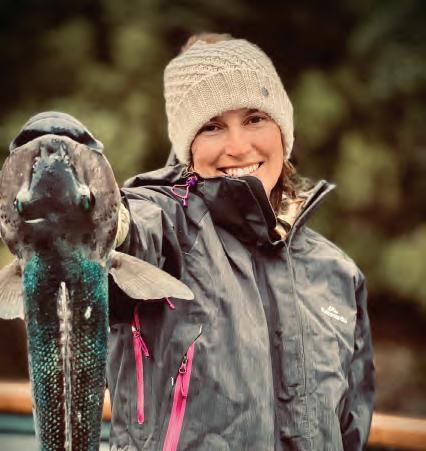
Alpine Base Camp teaching mountain adventure skills. Another highlight has been working with Pure Salt adventure company in Tamatea Dusky Sound. “We go down and spend four or five days on a boat, spending time hiking, diving, foraging and doing conservation work. It’s pretty magical,” says Michelle. Other excursions have focused on more gentle hikes and yoga, with gourmet food sometimes thrown in, for example at Kawakawa Station in the Wairarapa.
But perhaps the ultimate thrill has been hosting 10 mums on an adventure retreat to Niue in conjunction with dive company Niue Blue. The group swam with humpback whales, hiked, snorkelled and biked as well as making new friendships. It was so successful that two trips are planned there this year.
The newest strand of Outdoorsy is facilitating workshops for businesses, explaining some simple science-based wellness strategies to help people thrive and flourish at home and at work. It’s based around fitting more of the outdoors in, and helping people understand why it’s important that they prioritise it. “It is great getting people to understand that little
changes do add up,” Michelle says.
“A lot of people equate being outdoorsy with doing more sport and think that I’m going to tell them they need to climb mountains. But it’s not like that at all. It can be as simple as taking your coffee outside in the morning or going out before bed to look at the stars. It really does help with our immunity, our metabolism, our sleep patterns and with resetting our circadian rhythms. It’s a fantastic tool to use against stress and to increase productivity at work, and it’s also just really good for connection.”
Michelle continues to find balance in her own life, prioritising time with family as well as her role with Wooing Tree. She is grateful for the support and flexibility of Thea and Steve, Wooing Tree’s owners. “They’ve just been so incredibly supportive. I’m really thankful.” She manages to align the busy and quiet times of Outdoorsy around her commitments in the wine calendar. “But I’ve found that they are quite complimentary. When I’m running retreats, we often end up having great big discussions over dinner about wine. It’s an easy topic to get onto.” outdoorsy.co.nz
EMMA
Each week I receive a newsletter called Areopagus, with ‘seven short lessons’ on various historical figures, classical music, paintings, architecture, rhetoric and writing, finishing with a philosophical question. It’s fascinating. A recent one mused on “the danger of minimalist design, and the death of detail”. Think about what a modern park bench, or a light switch, or even a corporate logo looks like versus the glorious assortment of styles that flourished only 50-80 years ago, and ponder what it was that gave the earlier manifestations their distinctive character. The difference is detail, or rather the increasing lack of it. While the early ethos was for creation of objects with clearly discernible qualities and characteristics, today’s design default is towards ‘small m minimalism’ (not to be confused with ‘capital M Minimalism’, which is a conscious design movement).
“Small m minimalism represents wine’s slide into becoming a ‘beverage’; the death of its detail. I hope we resist it.”
Emma Jenkins MW
This reduction in character smooths identity from things, reducing them to their most basic elements. It also represents safety through inoffensive blandness. Someone might not like a particular detail, so reducing it means the greater likelihood of mass appeal. But it also means a certain removal of personality, of charm, of humanity even. We tend to be struck by, and to remember the objects with more detail and character, even when it’s not to one’s own particular taste. Think of 1950s cars, and their colours, versus 2020s cars; of an Ikea desk versus a Victorian walnut behemoth; a Gothic cathedral versus modern skyscraper. Increasingly we live
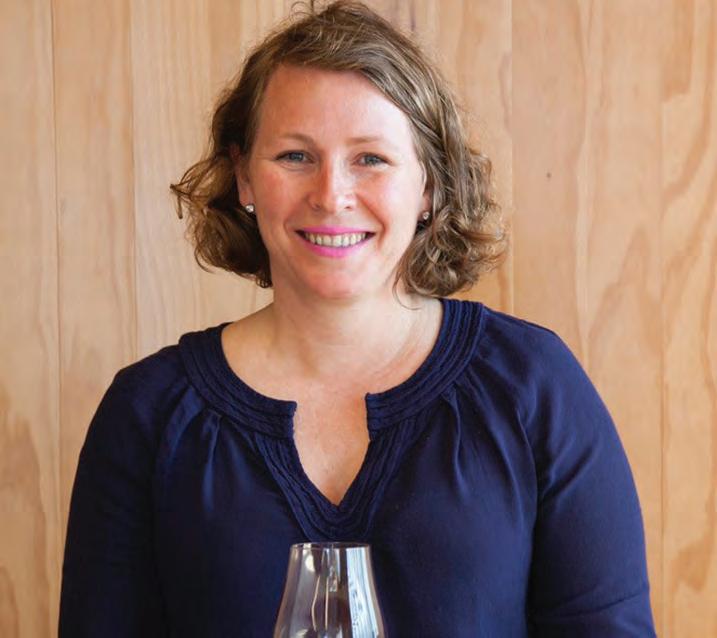
in a sea of grey boxes and white cars, their personalities smoothed away to assist with resale value.
A while ago I visited Monferrato in Piedmont, and was entranced by the vivid, distinctive local varieties Fresia, Grignolino, Ruche, Dolcetto, Cortese, full of personality and the taste of which rolled off the tongue in the same expressive way their names did. Producers, many with 400 years of production behind them, fretted about being left in the wake of their more glamourous neighbour, Barolo, and wondered if perhaps they should be planting more Merlot, the international grape that was so much easier to say and understand, though to me those actual wines didn’t seem to have much to say.
Last month I was in Alsace. In the 1600s it produced and exported Europe’s most expensive and illustrious wines. It is still a benchmark region for Pinot Gris, Muscat, Gewurztraminer, Riesling, Sylvaner, but all over were producers grappling with varieties and styles that were hard to sell, falling out of fashion, or selling for prices that in no way reflected their quality or the incredible vineyards in which they are grown. We tasted some truly astonishing wines – a 1971 Gewurztraminer as fresh as daisy, a Grand
Cru Riesling as profound and delicious as any top Burgundy yet selling at a fraction of its price. Many producers were keen to show us their Pinot Noir, a variety made increasingly viable due to climate change, and on whom Grand Cru status had recently been bestowed. There were some tasty wines but nothing close to as exciting as those from the less fashionable varieties, some of whose own vines may soon be top-grafted into easier-to-sell Pinot Noir.
There are around 10,000 known grape varieties in the world. Just ten of them represent a third of global vineyards; 33 of them cover 50%. The numbers are falling. We are in danger of losing the details of wine, the identities and differences that capture its historical, cultural and environmental uniqueness. The desire to homogenise wine is a sign of our times, in service of mass production and cost reduction, neither of which are inherently bad but deadly when done solely to increase bottom lines, without thought of what we lose. Small m minimalism represents wine’s slide into becoming a ‘beverage’; the death of its detail. I hope we resist it.
This is the first in a series of Mastering Wine opinion pieces from Emma Jenkins MW

I have a 50% share in a vineyard and for the first time ever, snails are threatening to decimate my crop. I should reveal that the vineyard has only one vine although it is quite a big vine. I share the vineyard labour and the crop with my son-inlaw. Our single vineyard vine is Albany Surprise which is the variety you are likely to receive if you buy it from a garden centre. Albany Surprise is an eating grape that is often described as “foxy.”
We grow our vine under a strict (well… strict-ish) organic regime. I recall visiting a South African vineyard which had a snail problem that they successfully managed with ducks. The ducks gorged themselves
“Someone suggested breeding the snails and selling them to the various French expats who live nearby. Food for thought.”
Bob Campbell MW
on snails until they could eat no more. They would then flop over on their backs and sleep until the duck-keeper arrived to gather them up and deliver them to
Comparative Tastings are an expensive but potentially effective strategy for a wine producer to raise the image of their wine or wines. It works like this: Perhaps you are about to release a super-premium Chardonnay that will crack through the NZD$100 barrier. You will need to go shopping for some super-premium Burgundies with even loftier price tags, starting at NZD$500. Importantly, you
should choose wines that have been sealed with cork and are therefore likely to be off the pace.
Invite your favourite wine writers to attend a wine tasting followed by lunch at a decent restaurant. The invitation should list the names of, say, five wines made up of four Burgundies and your new highflier. Serve the wines blind and promote discussion. Vote for the favourite.
Selling, building and servicing Croplands Quantum Vineyard Sprayers. For more information or to order your next Quantum Vineyard Sprayer. Contact the crop protection specialists at Agrivit.
Watts | 021 446 225 | jeremy@agrivit.co.nz 03 572 8787 | www.agrivit.co.nz
the picking crew. I was told that the duck eggs were so fortified by snail shells that they were difficult to crack although their contents were very tasty. Ducks remain a tempting option while negotiations continue with duck-unfriendly neighbours.
Copper-based fungicides will do to snails what Jack the Ripper did to latenight closing but I would have to eat so much humble pie after boasting to friends and neighbours about being clean and green that it is simply not worth it. Someone suggested breeding the snails and selling them to the various French expats who live nearby. Food for thought.
The Result:
1. Your wine comes top. This is a great result which, if promoted well, will elevate its reputation overnight.
2. Your wine is in the middle of the bunch. Another good result as it ranks alongside big-name, high-price wines.
3. Your wine comes last. By no means a disaster as it was beaten by wines that were four-times the price or more.
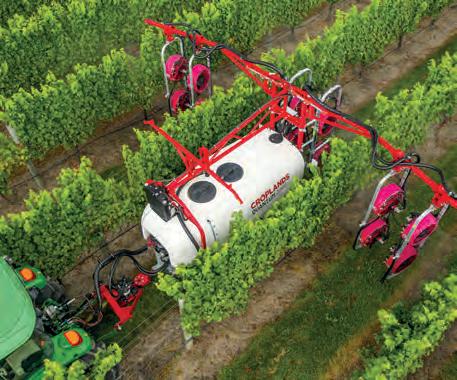
Nestled in the heart of Marlborough’s wine industry, with the likes of Dog Point, Te Whare Ra and Greywacke on its doorstep, Arbour has spent the past nine years delivering extraordinary dishes and a carefully curated selection of wines. Awarded Two Hats by the Cuisine Good Food Awards, which also named it Best Regional Restaurant in New Zealand in 2022, Arbour has attracted the devotion of many in New Zealand’s wine industry. Cofounder and owner Liz Buttimore talks of a labour of love.
What is Arbour’s ethos?
Since it began in 2015, Arbour has weathered several major life events – for us, and the world as a whole. But we think it’s better than it has ever been. We’re really small, at just 24 seats, so co-owner and chef Bradley (Hornby) and I are the sole full-time employees, supported for customer service hours by our long-term local team. Our menu focuses on the produce of Marlborough and New Zealand, and changes every few weeks – and sometimes daily as new ingredients come into season. That includes a lot of produce from Bradley’s backyard, grown by his partner Michelle, while ingredients from the various stages of Te Whare Ra’s growing and winemaking year feature heavily on the menu, delivered by my partner Benji. Unique-to-us dishes include Michelle’s peaches, TWR Chardonnay syrup, apricot sorbet, and lemon verbena jelly, which was served with Folium Late Harvest Sauvignon Blanc for the few days the dish was available.
What has the wine community meant for Arbour?
Arbour is successful because Marlborough gives it a heart and soul. We are surrounded by many of the country’s best wine producers and have a story to tell about every sip and every bite. Most importantly, during the tough times this small, but fiercely loyal population of wine and food lovers protects us. Arbour is an attempt that made it.
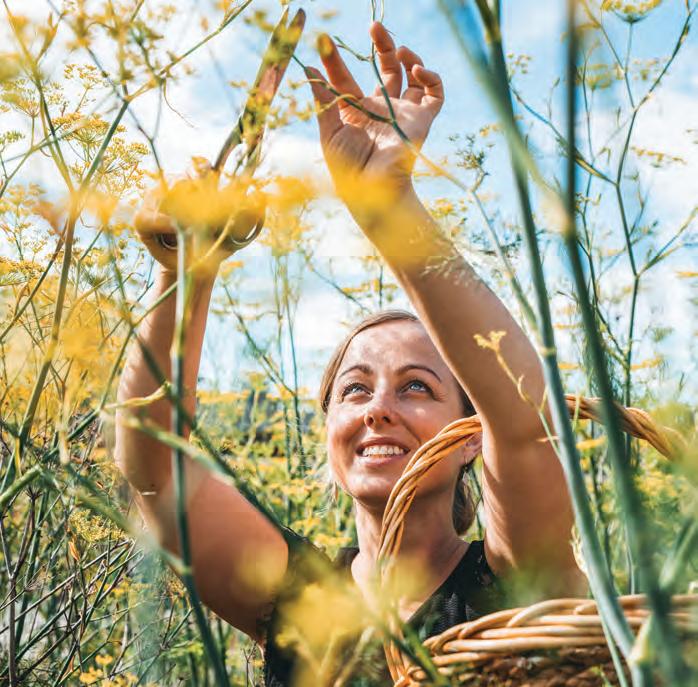
When did you become interested in wine?
My university bartending story is a little different to most. I was at AUT in Auckland and had to work full time to afford to continue living there. I took a job up the road at the then Hyatt Regency and through various wine of the month promotions, glass pours and staff trainings I tasted some very good wines. If there was an epiphany moment it would be when Nautilus Chardonnay was on glass pour. I was 19 and that style of wine was like nothing I had tasted before. Almost 25 years on, in my own restaurant the Nautilus 2017 and 2021 vintages are both on our glass pour this season. Winemaker Clive Jones has been there that long too!
Explain the curation of your wine list?
We want to represent upcoming brands of Marlborough as well as long-term players who have shaped this region and continue to nurture and grow Marlborough’s talent pool. By pouring a budding wine brand we may help give them a foot in the door elsewhere. It’s an extensive list, which allows locals to remind themselves of Marlborough brands they may not have had in a while, or take the opportunity to enjoy an international wine. Offering wines with a few years on them
by the glass is important to us as well. We buy ahead for our glass pour wines so that guests can enjoy something that isn’t just straight through the door and on the list. It’s a thoughtful list that is ever growing.
You have more than a few side hustles on your list. Why?
We discreetly check with the winemaker that their ‘side hustle’ has the blessing of their current workplace. It is a small town and some of the more established brands invest so much into growing the talent of our region – we want to know they are not going to feel ambushed by their paid employee’s private label being poured. I believe the great employers of our region know that letting a winemaker ethically build their own brand in the safety of a permanent job is one way to extend their tenure. Two of our current favourites are ‘Nous’ and ‘Atipico’ – both recent additions to the winescape of Marlborough, and each offering a unique and delicious perspective on grapes the region already knows well. One of our favourite hustle-turned-established brands is the organic, family-grown Windrush, which we have been pouring for years. Whether it’s a side-hustle, offshoot or grower’s label, it’s wonderful to pour these wines in their infancy, then see them spread across the country.
Pernod Ricard Winemakers
Environmental & Sustainability
Director Alex Kahl asks whether winegrowers have considered the impact of traditional viticulture on a vineyard’s soil health and longterm sustainability
New Zealand is renowned for wines that showcase the unique terroir of our regions. We market our products as premium and distinct because our wines come from here; this land, this climate, this soil. However, some traditional growing practices that rely on a monoculture grape production model are having unintended consequences for our soil and environment.
“By
embracing regenerative practices,
we
can differentiate our wines in a competitive global market.”
Alex Kahl
During the past 12,000 years, human agricultural activities have resulted in the loss of 113 petagrams (Pg) of soil organic carbon (pnas.org), which is crucial for soil fertility, biodiversity, and climate regulation. To put that in perspective, that’s the equivalent of 11 trillion African elephants –enough to cover half the Earth’s surface.
Let’s narrow that down; over the past 50 years New Zealand’s reliance

on agrichemicals and cultivation has contributed to a decline in soil health – the very foundation of our success. Climate change is likely to exacerbate this trend of soil organic carbon loss as higher temperatures accelerate the degradation of organic matter and more frequent extreme weather events result in increased soil erosion.
To combat this, many growers have looked to alternatives to traditional farming. One approach that offers a focus on soil health and biodiversity is regenerative agriculture. With its holistic approach to viticulture, regenerative agriculture prioritises soil health, biodiversity, and overall ecosystem function. I believe this approach not only benefits the environment, but in viticulture can also lead to healthier vines, more expressive wines, and ultimately, a more sustainable future for the New Zealand wine industry.
Since the early 2000s Pernod Ricard has been trailing and implementing what are now considered regenerative practices across our global vineyard holdings, including
here in New Zealand. Since 2020 these have become part of formal trials.
These practices include:
• Planting diverse cover crops: This creates diversity in the living root systems yearround, and can improve soil structure, water infiltration, and nutrient cycling. Cover crops also suppress weeds naturally, reducing the need for herbicides.
• Minimising soil disturbance: By reducing cultivation, we minimise soil erosion, avoid carbon loss, and promote the growth of beneficial soil microbes. These microbes play a crucial role in unlocking nutrients for grapevines and building soil health.
• Composting: Returning organic matter to the soil through composting creates a natural source of nutrients and further promotes microbial activity.
• Integrating livestock: Controlled grazing by sheep can help manage weeds, improve soil aeration, and provide natural fertiliser.
In a promising example of our future aspirations for New Zealand, our vineyards in Cognac, France, have been operating entirely under a regenerative regime for


the past five years. This means in place of synthetic pesticides and under vine herbicides, the team have used a largely organic approach such as biostimulants, algae, and plant-based fermented products to supplement vine health and enhance disease resistance. This approach is supported by accelerating levels of research across the globe demonstrating the positive impact of regenerative agriculture on vineyard ecosystems.
A broader ecosystem approach Applying regenerative agriculture principles to viticulture requires a rethinking of the traditional boundaries of the vineyard. Previously thought of as “non-productive areas” boundary areas, headlands and other non-vineyard areas of a property can be used to provide a wealth of ecological services, benefits that support the vineyard’s overall health and productivity. These services include:
• Habitat creation for beneficial insects and pollinators: A diverse habitat with flowering plants and native vegetation attracts insects that predate on pests, naturally reducing reliance on insecticides.
• Natural filtration and water purification:

Healthy headlands, wetlands, and riparian zones filter runoff water, preventing erosion and improving water quality.
Regenerative practices promote the storage of carbon in the soil, mitigating climate change and contributing to a more sustainable future. Consumers today are increasingly concerned about the environmental impact of the products they buy. Major markets, like those we export to, are demanding greater transparency and evidence of sustainable practices. Regenerative viticulture provides a powerful
story for New Zealand wine – a story of environmental responsibility, respect for terroir, and a commitment to future generations. By embracing regenerative practices, we can differentiate our wines in a competitive global market.
However, we recognise the transition from traditional practices requires both knowledge and support. Pernod Ricard Winemakers is committed to helping growers on this journey. We’re actively sharing our experiences and learnings, as well as developing resources to help growers implement regenerative practices in their vineyards.
The challenges associated with monoculture viticulture are undeniable. Declining soil health ultimately threatens the long-term sustainability of our industry. Regenerative agriculture principles offer a path forward – a path that promotes a healthy environment, thriving vines, and exceptional wines that continue to showcase the unique character of New Zealand. We encourage all New Zealand winegrowers to consider trialling and establishing regenerative practices in their vineyards. The future of our industry may depend on it.

The iconic Bourgogne silhouette has been lightened, retaining its original modern aesthetic proportions without altering them: 293mm in height, a harmonious shoulder, straight sides, no curve at the base, 30mm punt with node and an optimized glass weight of just 500g. simplicity this timeless design, coupled precision dimensions, make Roble BVS obvious choice for brands seeking heritage renewal.
Saverglass (NZ) Limited | www.saverglass.com | Haute Couture Glass | Tel +64 9 522 2990
When temperatures consistently run above average it can come as a bit of a shock when a cold spell finally arrives. Autumn 2024 has delivered in that respect. Over the past few years the transition from summer to winter has been relatively gentle in terms of temperature. But from the last week of April and into May there have been frosts across many regions to rival the coldest mornings of recent winters. The main cause has been the positioning of high pressure over Tasmania. This has led to an increased frequency of southwest winds and the inevitable cold fronts that race up over New Zealand. The high pressure has been remarkably intense and at times has peaked above hectoPascals (hPa). These large anticyclones can be very stubborn and do not move on easily, so it feels like we get stuck in the same pattern of weather for weeks on end. In this case the high has brought settled conditions and much colder nights as a result.
The sea surface temperature along the equatorial Pacific has been quick to cool and
give early indications of a La Niña later in 2024, but just as La Niña was slow to depart in 2023, El Niño has been slow to depart this year. The result has been a drier autumn in most growing regions, following on from a dry summer. There are no clear indications yet that winter will bring a marked increase in rainfall to the regions that need it, so it may be late winter or early spring when the returning La Niña starts to bring the weather it’s known for.
Record Frosts in April and May Fairhall in Marlborough recorded a temperature of -4.1°C on 28 April, which is the coldest morning there since 2006. From late April onwards the overnight temperatures have kept tumbling, with longstanding records challenged or broken. Several weather stations in North Canterbury recorded temperatures below -7.0°C in early May. One of the coldest temperatures recorded so far was -8.7°C at Rangitaiki on the central plateau of the

North Island, a little south of Minginui in the Kaingaroa Forest, which recorded -12.0°C
On 28 May 1978, the coldest North Island temperature during May. Weather records from 1978 show that a weak El Niño had been present and, like 2024, there was a predominantly southwest flow bringing cold air from the Southern Ocean.
The winter freeze
As the days get shorter and the nights longer, the lack of heating from the sun and the oblique angle of the sun’s rays striking the earth mean that under calm, settled conditions, the air gets colder. Most of New Zealand is a maritime climate, warmed by the surrounding ocean, but Central Otago is the one region that reflects a continental winter climate. In late autumn and early winter the sun continues to wane, and each day that passes there is less available energy to heat the ground and the air. Settled conditions see the maximum air temperature decline and overnight minimums can
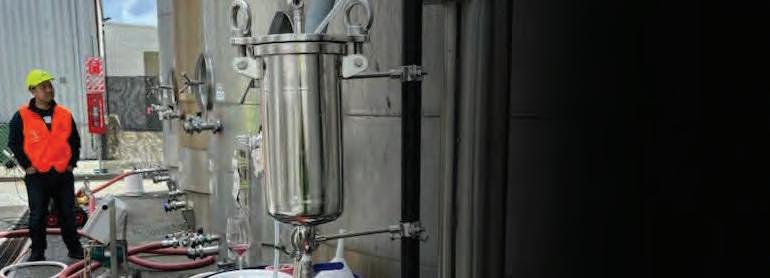
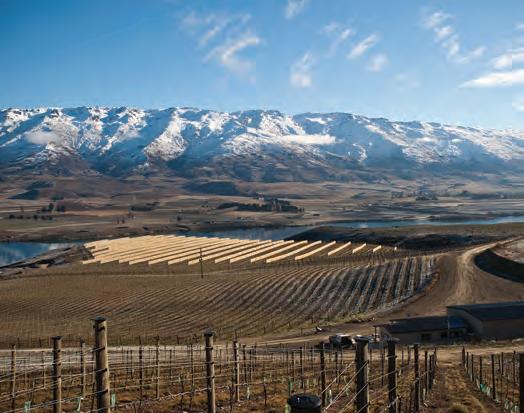
become colder and colder. Our proximity to the Southern Ocean and the winds of the “roaring forties” mean that our weather is too changeable for a freeze to last for long, but they do happen from time to time. Places such as Ranfurly and Ophir have recorded temperatures below -20°C in the past. In a warming climate it is often hard to imagine enduring these conditions on a regular basis. Even with climate change and a warming world the right synoptic conditions can and will still bring a winter freeze.
Outlook for June and July:
Gisborne/Hawke’s Bay
Winter may begin on a drier note with high pressure dominating. Mean temperatures are close to average but may start to push above average through July as high pressure starts to weaken and northerly or westerly winds redevelop. Rainfall totals are expected to be a little below average.
Wairarapa
Mean temperatures are likely to run close to average through early winter, but cold southerly changes can provide a bit of a sting and June could remain quite frosty at times. That may ease later in July as milder northerly winds start to return. Rainfall totals may remain near or a little below average.
Nelson
Temperatures are likely to remain near or above average across the region but with a large diurnal range between night and day. The southwest flow is likely to lead to more frosty nights through June and this may ease in July as northerly winds redevelop. Rainfall remains below average but may increase later in July.
Marlborough/North Canterbury
High pressure is likely to see cold nights and frost continuing, but the frequency may decrease in July as northerly and northwest winds redevelop. Rainfall totals are likely to remain below average in the east.
Central Otago
The colder southwest flow means a few fronts are likely to bring a winter blast at times, followed by frosty conditions under high pressure. As the anticyclones move northwards an increase in west to northwest winds is likely. Conditions are likely to be less settled through July with mean temperatures possibly above average and rainfall remaining near or below average across the region.
James Morrison runs Weatherstation Frost Forecasting: weatherstation.net.nz

Galileo CLOUD
The most advanced Cloud-based controller for viticultural irrigation & fertigation

Arkal Spin Klin Nova Plus
Exceptional Performance. Modularity at its Best.
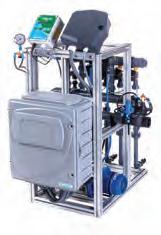
Web-based control of irrigation, filter flushing and multichannel fertigation

D5000 AS CX Dripline
A long-term, safe and non-leaching solution to reduce root intrusion
Come and see us at Winepro 25-27 June Stand G09
To find your local dealer contact Water Supply Products: Auckland: 09-916 0094 Christchurch: 03-348 1293 wsp@watersupply.co.nz www.watersupply.co.nz
Upcoming changes to make Freshwater Farm Plans more practical and cost effective
During the past year there has been much uncertainty across the entire primary sector on the rollout of Freshwater Farm Plans. Understandably, members have asked questions as to when the regulations will be activated in their regions, what the implications are, and how much they will cost.
To address this uncertainty, the government made announcements in April that there will be changes to improve the Freshwater Farm Plan system to make it more cost effective for farmers and local authorities to implement.
The changes are intended to enable farmers to find the right solutions for their farm and catchment, and to make sure there is appropriate balance between the costs of the system, specific risks posed by farming activities and the environmental benefit of risk management actions. The government announcement also highlighted that there would be more work to better integrate Freshwater Farm planning with work already carried out by farmers through industry assurance programmes like Sustainable Winegrowing New Zealand (SWNZ), with a specific focus on streamlining the certification and auditing requirements as much as possible.
NZW supports the need for change
New Zealand Winegrowers (NZW)

 Tracy Johnston
Tracy Johnston
supports these proposed amendments to the farm planning system. We have engaged with the government to highlight that there is strong scientific evidence that shows viticulture has a minimal impact on freshwater quality relative to other primary sector land uses and that for many vineyards above the current 5-hectare threshold, the proposed costs of the system do not proportionately balance with the environmental benefit. We also believe it is our responsibility to ensure we leave our environment in a better state for the next generation of winegrowers.
NZW has also highlighted the potential benefits of linking farm planning to SWNZ as much as possible. We are advocating that the certification and auditing of Freshwater
“With multiple spring fed streams between the vineyard and the Wairau River we recognise the importance of being accountable for what we do on the land to ensure we protect and enhance all waterways.”
Tracy Johnston, co-owner of Dayvinleigh VineyardFarm Plans should take place through SWNZ rather than duplicate a system that has been at the heart of our industry’s sustainability efforts for almost 30 years. Overall, our industry has the goal to be a world leader in efficient water use and the protection of water quality. We support the government’s goals to improve water quality for all New Zealanders and see these regulations as an opportunity to help drive quality improvements through on-vineyard behavior change that will help achieve our goal faster. However, to be effective it is crucial that these regulations appropriately balance potential environmental benefits with the costs imposed on our members and regional councils responsible for their implementation.
Project Raumatatiki:
Despite the potential changes to the regulations, the overall goal of Project Raumatatiki: Freshwater Farm Planning for


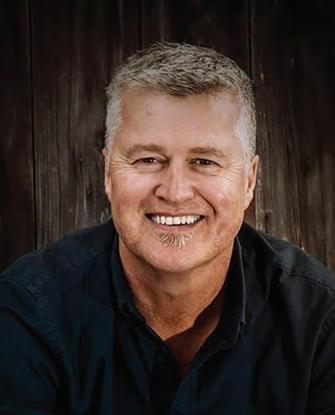
Viticulture – to develop a tool that enables members to develop Freshwater Farm Plans for their properties and to increase member awareness of how to mitigate the risks posed by viticulture to freshwater – remains unchanged. The project is progressing well and has just released a Request for Information to the market on
“I’m interested in the as it helps us deepen our eco credentials and underpins Free Trade Agreements we have signed with export markets. As a keen fisher I’m well aware of the effects of poor water quality on our environment and see this as a means of improving water quality across Aotearoa. And lastly it’s our responsibility to ensure we leave our environment in a better state for our tamariki and mokopuna as well as honouring the whenua and our tipuna. Overall we can show rangatiratanga by doing this properly.”
Jeff Sinnottthe tools already available. The project team presented its first webinar on the risks to freshwater from viticulture on 30 May. Across the country we have a range of industry representatives involved in the Governance Group of the project. These include:
• Governance Group Chair – Fabian Yukich, Deputy Chair New Zealand Winegrowers, 021 316 296
• Marlborough – Tracy Johnston, co-owner of Dayvinleigh Vineyard, growing Pinot Noir in the Wairau Valley; Deputy Chair, Marlborough Winegrowers Association, 021 749 368
• Hawke’s Bay – Peter Hurlstone, Operations Manager Pernod Ricard;
Hawke’s Bay Winegrowers, 027 281 6364
• Central Otago – Jeff Sinnott, Viticulture Consultant; Representing Central Otago Winegrowers, 021 656 698
• Tracy Taylor is NZW’s Freshwater Farm Plan Technical Specialist, based in Blenheim, 021 193 2772 or tracey.taylor@nzwine.com
If you have questions about Freshwater Farm Plans or Project Raumatatiki: Freshwater Farm Planning for Viticulture please contact Tracy Taylor or your regional representative. Or you can contact me on 0211924924 or edwin.massey@nzwine.com.
Dr Edwin Massey is General Manager Sustainability at NZW

Protecting the places that make our famous wines
SophieVineyard Registrationcrucial for biosecurity & emergency response
Biosecurity Vineyard Register submissions are now available for completion through the New Zealand Winegrowers members portal. All vineyards owned by New Zealand Winegrowers (NZW) members are required to complete an annual Biosecurity Vineyard Registration. This includes all producing vineyards, newly planted vineyards that will produce a crop within the next three years, and any non-productive vineyards that are still in the ground and likely to be used for commercial wine production in the future. All vineyards (grower or winery-owned) contributing grapes to wines participating in NZW events and activities are also required to complete the register annually. Annual completion of the register by growers enables NZW to
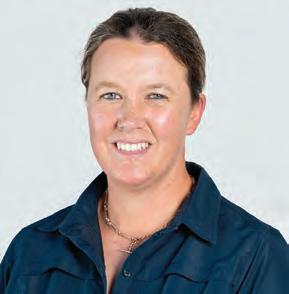

maintain an accurate record of vineyard names, locations, planted area, grape varieties grown, and planting density.
Entering vineyard details in the register and updating them each year ensures that if a new vineyard pest or disease arrives in New Zealand, the NZW Biosecurity team can contact all growers in the atrisk area as soon as possible and be kept updated if a biosecurity response occurs.
The events of Cyclone Gabrielle last year also highlighted the importance of maintaining an up-to-date register. As reports of the potential scale of the situation began to emerge and an emergency response was stood up, requests for information began to flow in from government and agencies wanting to understand how many vineyards were affected, what types of damage
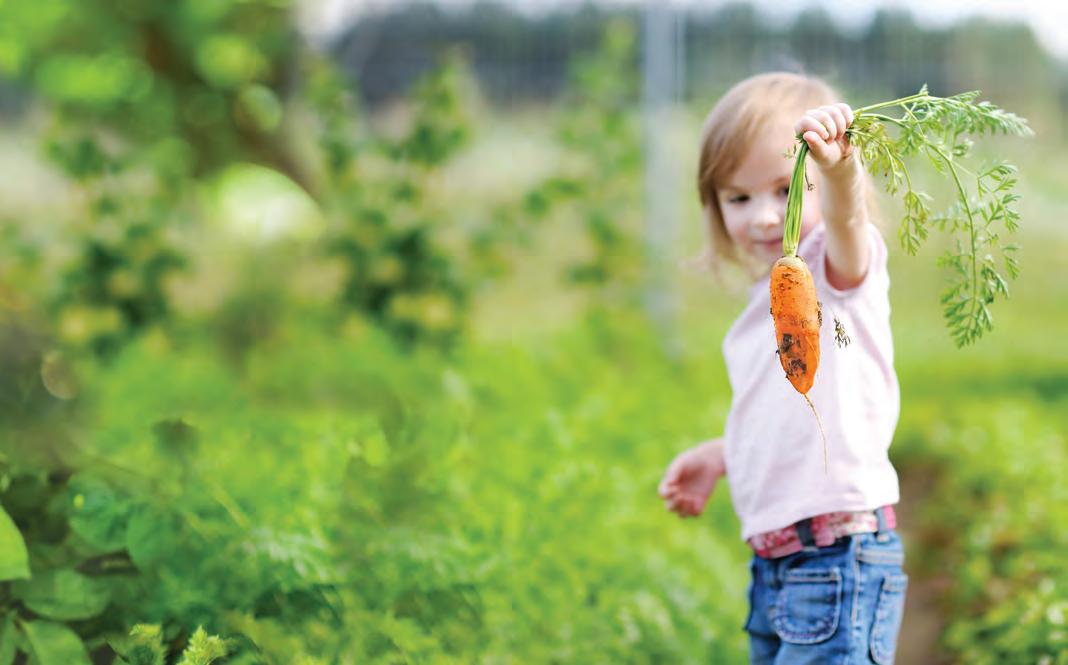
Badland Available at:

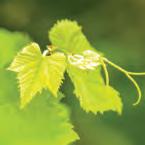


100% natural, BioGro certified
Supplies readily available source of calcium and sulphate sulphur to support soil health and plant growth.
For more information scan the QR code or go to gypsum.co.nz

were sustained and to what extent, and what help was required. With regular membership communication options (phone, email) largely not functioning well initially, NZW relied heavily on the information held in the Biosecurity Vineyard Register to estimate which vineyards may have been impacted. Based on location information held in the register and proximity to the major rivers which burst their banks and caused widespread flooding, NZW was able to generate a list and map showing those properties likely severely affected, and work towards making contact to check in with them. This list was refined over time as impacts became known, and more detailed information was able to be provided to government agencies and support groups to assist with the response and recovery efforts.
Changes to the Biosecurity Vineyard Register in 2024
With the introduction of NZW’s new IT system and members portal, the Biosecurity Vineyard Register submission looks quite different this year. New user guides are available
to assist members with completion and you are welcome to contact the Biosecurity team for assistance. Most of the information entered in the past year for a vineyard should pre-populate in
“The events of Cyclone Gabrielle last year also highlighted the importance of maintaining an up-to-date register.”
Sophie Badland
the current entry, reducing the amount of data members are required to input. However, for most vineyard entries there will be some input required this year as we have introduced new fields to capture the ‘planted hectares’ of the vineyard currently and over the next few years. This has been done to enable differentiation between planted hectares and producing hectares, defined
as follows:
‘Planted hectares’ is the number of hectares of vines planted in the vineyard, regardless of whether you are harvesting a crop from them. ‘Producing hectares’ is the number of hectares you are harvesting from.
The register is due to be completed by 30 June each year. Ideally, vineyards should be registered as soon as the vines have been planted, even if they are nonproducing, as they can still be affected by pest and disease incursions. The area planted only includes the area under the vines and inter-rows, not the headlands, driveways/roadways, or buildings. While the register is not a Sustainable Winegrowing New Zealand (SWNZ) submission, it must be completed before a vineyard can be SWNZ-accredited.
NZW thanks members for completing their Biosecurity Vineyard Registration submissions, which are now available through the members portal (portal.nzwine.com). Please contact vineyardregister@nzwine.com if you need any assistance.
Sophie Badland is NZW Biosecurity & Emergency Response Manager

Attending WinePRO?
Visit us on stand D06 to view some of our range including:
• Europress
• Cazuax pumps
• CDA labelling
• PALL filtration
• Filling options
• Sentia wine analyzer And more!
Taking NZ wine to the world: Bringing the world to NZ wine On your behalf
Advocacy on matters of vital importance to the industry
Larissa TrownsonIt’s an NZW election year –how you can get involved
In October this year, all New Zealand Winegrowers members get to vote on the election of five Member Class directors onto the NZW Board. The Board’s role is to govern and provide strategic direction to NZW, as your national industry body. As part of this, it directs the spending of your levy money – so it is important that you get involved. NZW members can stand for the Board, and vote on who makes it onto the Board – both are very important.
What is this year’s NZW election for?
The Board has 10 elected members who serve a four-year term:
• Five directors are elected by members on the basis of one vote per member (‘Member Class’ directors). The last Member Class director election was in 2020, and the terms of those directors end in October this year, so a new election is needed.
• The other five directors are elected by members on the basis of one vote for each dollar of levy paid by that member (‘Levy Class’ directors). The most recent vote for the Levy Class directors took place in 2022, and their terms run until 2026.
Two directors are also appointed by the elected Board and serve a two-year term. Because of the Member Class voting system, every member – large or small – will have an equal chance to influence who is

elected for these positions. NZW hopes to see a diverse range of talented candidates standing across gender, ethnicity, age, regions, and industry roles.
“NZW hopes to see a diverse range of talented candidates standing across gender, ethnicity, age, regions, and industry roles.”
Who may stand as a candidate?
To be nominated as a candidate, a person must be appointed by any NZW Member to exercise their voting rights (i.e. a member Representative). In addition, they must not be prevented from being a director under any applicable law or rules.
Nominations will be open from 5 August to 6 September. More information, including how to nominate a candidate, is still to come, but now is the time to start thinking and talking to your colleagues:
• Who do you want to represent your industry’s interests?
• Who is good at seeing the bigger industry picture, and asking perceptive questions?
• How can we ensure the Board reflects the diversity of our membership?
• Who do you know that you might want to nominate to stand?
• Are you interested in standing yourself?
What is the commitment required to be on the Board?
The Board usually meets six times a year for around a day and each director is also expected to serve on two Board Committees. The most important requirements of candidates are that they care about the future of the industry and are prepared to contribute their skills, experience and perspectives. Directors are expected to work in an openminded way with the other directors for the benefit of the whole industry, not their particular interests.
What are the next steps?
There is a lot of time until the election, with voting to take place from 7 to 18 October. It will be run by electionz.com, an independent election management services company that has run many of NZW’s previous elections. NZW will put out plenty of information to keep you updated, but it’s never too early to begin thinking about the election, and who you want to govern your national body. Get involved! If you would like any more information, feel free to contact the NZW Advocacy Team at advocacy@nzwine.com. The ‘Member Class Directors Election 2024’ will also be regularly updated –find this on the NZW members website under ‘Governance’ (a subsection of ‘ About Us’).
Larissa Trownson is NZW Senior Legal Counsel
Nominations open Monday 5 August, 10am
Nominations close Friday 6 September, 12pm
Members advised of candidates Friday 20 September
Voting opens Monday 7 October, 10am
Voting closes (with results announced promptly after) Friday 18 October, 12pm
With each Origine by Diam solution, winemakers can master the ideal oxygen level and optimal bottle aging duration depending on their wine profile and wine history. With all the Diam guarantees, this bio-based cork range enables winemakers to best meet their consumers everchanging needs and environmental issues. Origine by Diam, the power of choice
Distributed By: Vinocor, the exclusive partner for DIAM closures in Oceania.
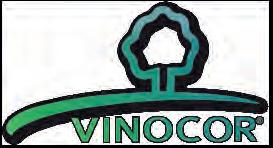

NEW ZEALAND
Ph. +64 2157 5380
AUSTRALIA Ph. +61 8 8392 9999 Email. info@vinocor.com.au Web. vinocor.com.au Member of
Email. andrew.twiname@vinocor.co.nz Web. vinocor.co.nz
Mark Daniel’s updates on machinery and technology
New Holland is updating its compact self-propelled grape harvester offering for 2024, with the newly styled Braud 7.50M, 7.30L and 8.50L models superseding the Braud 7030M, 7030L and 8030L, delivering enhanced comfort, capacity, power and productivity thanks to a range of new features throughout the machines.
The SDC Shaking system features a new pinch adjustment arrangement on all machines to ensure consistent vine shaking irrespective the thickness of the vegetation.
All machines incorporate FPT fourcylinder engines without exhaust gas recirculation, with the 7.30L retaining the same 128hp power and 3,100-litre hopper capacity figures as the 7030L it replaces. The 7.50M and Braud 8.50L both receive a 16hp power increase, to 144hp, said to deliver improved work rates in challenging conditions.
These two larger machines also benefit from a 500-litre boost in hopper volume, taking it to 2,800l on the 7.50M or 1,600l on Opti-Grape versions, and 3,600l on the 8.50 or 2,400l on Opti-Grape II versions. All models feature the latest IntelliView IV Plus touchscreen operating terminal, upgraded seat options and LED lighting, and on IV PLUS all apart from the Braud 7.30L, locking of the machine’s levelling system is automated when moving from field to road mode.
The SDC shaking system features a new pinch adjustment arrangement on all machines to ensure consistent vine shaking irrespective the thickness of the vegetation, with a jack-free locking system for simple pinch adjustment from the cab that also

eases cleaning procedures. Optimised shaker plates, standard on the Braud 7.50M and optional on the Braud 8.50L, are turned on automatically at the fruiting zone, and can be individually removed in less than two minutes by removing one bolt per shaker.
Optional features include Opti-Grape II cleaning and cane removal systems. Available on 24” or 28” wheels, with optional front axle suspension, the Braud 8.50L is also compatible with the SupAir high-capacity sprayer from Berthoud. Further options include a static weighing system and 3.05 m unloading height on augerconfigured machines, allowing discharge of a full 3,600l load onto trucks or trailers with a 3.0m net height. A de-stemmer is optional on all models except those with a 3m unload height, while Opti-Grape II can be specified on the Braud 7.50M and Braud 8.50L, offering a potential capacity boost of up to 30%.
All models feature a revised hydrostatic transmission to provide operators with full confidence on slopes, while an automatic height/lateral tilt correction (CDHA) system on the BRAUD 8.50L provides up to 30% slope correction, while machine height can be raised by up to 600mm on the 8.50L and 500mm on 7.50M and
BRAUD 7.30L models, with three levels of adjustment.
An optional front axle suspension system is said to enhance comfort, particularly on the road, while also ensuring the wheels are kept in contact with the ground when climbing slopes and complemented by a traction control system. Suspension is activated automatically at road speeds, or operator selected when in the vineyard. The latest IntelliView IV Plus features a new main screen, with hardware derived from the larger IntelliView 12 unit used on other New Holland machines. A new inductive type of touchscreen has a better display quality and touchscreen ‘feel’, with faster reactivity. Among other views, it can display the feed from one standard base camera, plus a new rear-view monitor, with a total of up to four camera feeds possible. Operator vision is enhanced through a new front top cab work-light package, providing a total of 12,000 lumens – 2.5 times more than previously, while a new external mirror package aids rearward vision, using standard and high-angle mirrors in a single unit. Comfort is further enhanced by a new operator’s seat, with full leather upholstery, heating and ventilation, lumbar support and sliding backrest extension.

Croplands and agritech company Robotics Plus are joining forces to bring Prospr – a multi-use autonomous vehicle for sustainable vineyard production – to the Australian and New Zealand markets. Croplands will be the exclusive distributor of the hybrid vehicle, which is said to increase efficiency across a variety of tasks and alleviate labour challenges, with capabilities including automated intelligent spraying. The distribution agreement sees a partnership with Robotics Plus specialising in the design and build of robotics, artificial intelligence, and autonomous machines, while Croplands brings more than 50 years of experience in spraying solutions.
Prospr offers all-day running that adapts to jobs while reducing emissions, inputs, and reliance on hard-to-find machine operators. Modular construction can accommodate multiple, interchangeable tools, working year-round to maximise return on investment. Multiple Prospr machines can work as a fleet, using perception systems to sense the environment, while delivering data and insights to growers.
Featuring an all-electric drive system, an on-board diesel generator, allows the vehicle to operate for extended periods without charging or refuelling. Regenerative braking and highcapacity batteries further extend range, while an intelligent all-wheel-drive system with independent wheel motors gives superior manoeuvrability, grip, and control. The vehicle turns via its rear axle, with a headland requirement of 7.1m for row-to-row turning and a minimum row spacing of 1.85m, giving growers the option to deploy automation in a range of scenarios. A partnership with Yamaha allows the company to take advantage of their extensive knowledge in machine vision, artificial intelligence, and productising vehicles for scale. “We are proud to partner with Robotics Plus on the design and manufacture of world-leading Quantum sprayer modules to integrate onto Prospr, the autonomous platform developed in New Zealand for horticulture markets,” says Sean Mulvaney, General Manager Croplands. “Our focus on bringing emerging solutions to the market continues with the opportunity to distribute Prospr and a range of sprayer attachments across Australia and New Zealand.”
Robotics Plus will be at WinePro in Marlborough this June. See page 42. To read more about Prospr see the February/ March edition of Winegrower Magazine nzwine.com/en/ media/nz-winegrower-magazine
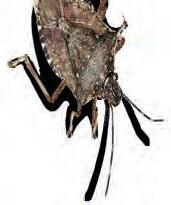
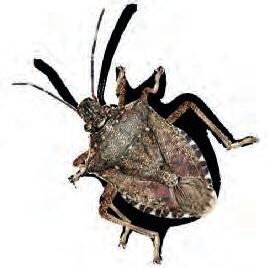
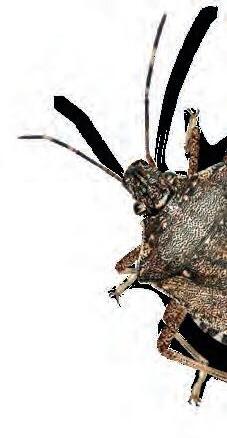
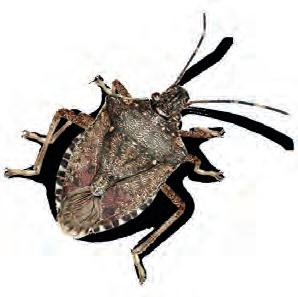

The brown marmorated stink bug is a pest that infests homes, ruins gardens, stinks when crushed, and is almost impossible to get rid of. It could also destroy our fruit and vegetable industries. It’s not in New Zealand yet, and we want to keep it that way. So if you see one, don’t kill it. Catch it, take a photo, and call us on 0800 80 99 66.
For more information (including how to identify the bug) visit biosecurity.govt.nz/stinkbug


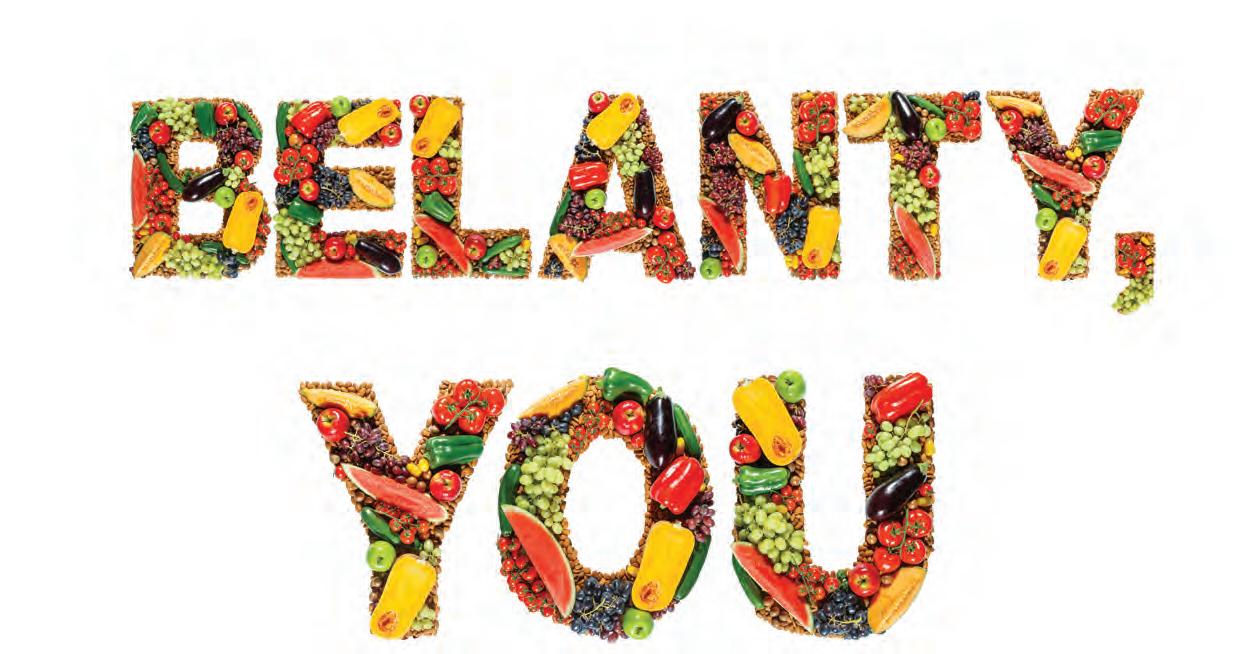

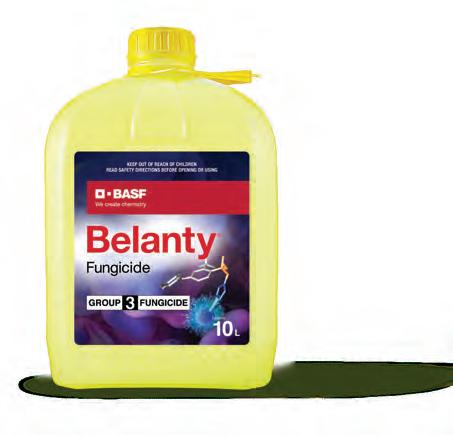

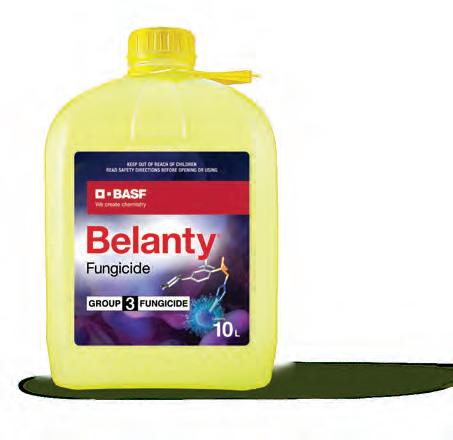

A regular feature to inform and update the wine industry on research projects being undertaken for their benefit. Newly approved projects when available are briefly summarised. Ongoing projects have longer articles that describe progress and what has been achieved so far. When completed, each project report will be shared in full detail in the Research Library on nzwine.com.
Bragato Research Institute conducts research in-house or collaborates with research organisations throughout New Zealand. The main research providers for each project are listed.
Updates are provided on the highlighted projects in this supplement.
Vineyard Innovation
Improving remedial surgery practices to increase vineyard longevity
Linnaeus, SARDI
Long spur pruning as an alternative to cane pruning for Sauvignon blanc
Bragato Research Institute
Evaluating water use efficiency and drought tolerance of various rootstocks grafted to Sauvignon blanc
Bragato Research Institute
Potential applications of nanotechnology for wine growing in New Zealand
University of Auckland
Varietal diversification – Cool climate aromatic white wine produced by Marlborough
Bragato Research Institute, EIT, NMIT
Sauvignon Blanc Grapevine Improvement Programme
Bragato Research Institute, Plant & Food Research, Lincoln University
National Vine Collection Virus Eradication
Bragato Research Institute
Tuned Vines
Bragato Research Institute
Winemaking Innovation
Exploring reductive aromas in Pinot noir
University of Auckland
Precipitation of calcium tartrate and other compounds in wine
University of Canterbury
Lab on a Chip: Developing diagnostic devices for the wine industry
University of Canterbury
Prevention of quercetin instability in bottled wine
Indevin
Building soil health on vineyards
Bragato Research Institute
Microbial community and vine responses to increasing temperatures in the New Zealand context
University of Auckland
Development of an anaerobic chainelongation bioprocess for grape marc valorisation
University of Auckland
Evaluating ecologically sustainable ways to disrupt the wētā-vine association
Plant & Food Research
Potted Vines: Exploring the role of trichoderma on Marlborough soil to influence drought stress shift
Bragato Research Institute
 Credit: Pegasus Bay
Credit: Pegasus Bay
The notorious fungal diseases downy and powdery mildew, caused by Plasmopara viticola and Erysiphe necator respectively, significantly impact viticulture by reducing both crop yield and quality, leading to considerable economic losses. A key objective of the Sauvignon Blanc 2.0 Programme is to identify Sauvignon Blanc clones that are resistant to these pervasive diseases.
This programme is currently being conducted on a full scale to develop an extensive collection of diverse Sauvignon Blanc clones. This collection serves as a valuable resource for selecting vines with enhanced traits. Our goal is to screen over 10,000 clones multiple times
across various physiological growth stages. Utilising high-throughput screening techniques allows us to efficiently assess a larger population, enhancing our ability to identify resistant clones.
High-throughput phenotyping leverages computer vision, automation, and machine learning analytics to capture high-quality images of infections and analyses them for resistance or susceptibility levels using cutting-edge deep learning algorithms. The United States Department of Agriculture (USDA)’s Grape Genetics Research Unit (GGRU), in partnership with
Cornell Agritech, has been leading the development of these advanced phenotyping technologies. To integrate and adapt these innovations into New Zealand’s viticulture research, Bragato Research Institute has collaborated with Dr Lance Cadle-Davidson and Anna Underhill at the USDA, specifically within the GGRU in Geneva, New York.
For the Sauvignon Blanc 2.0 Programme, 120 clones were sampled by removing the 3rd and/or 4th fully expanded leaf from a green shoot. These leaves were then stored in perforated zip-lock bags and placed in a temperature-controlled chiller box with ice packs for quick

Figure 1: Scatter plot depicting powdery mildew infection rates, with the X-axis representing regenerative clones from different treatment batches, including field-grown Sauvignon blanc controls (Control_1, 2, 3) and positive control (Control_4, Thomson Seedless, Control_5, Chardonnay). The Y-axis shows the percentage of leaf disc infection at 10 days post-inoculation by A) hyphae and B) by spores. Leaf samples are colour-coded by age: 5 to 10 weeks (lime green), 10 to 15 weeks (dodger blue), 15 to 20 weeks (orange), and over 20 weeks (black). The control samples were collected from mature plants aged 20 years, which were categorised as older than 20 weeks in the age classification. A red dotted line at the 5% threshold visually differentiates mildew severity by age.
The pilotscale study demonstrated that a large population of plants could be efficiently screened to assess phenotypic resistance or susceptibility to both downy and powdery mildew.
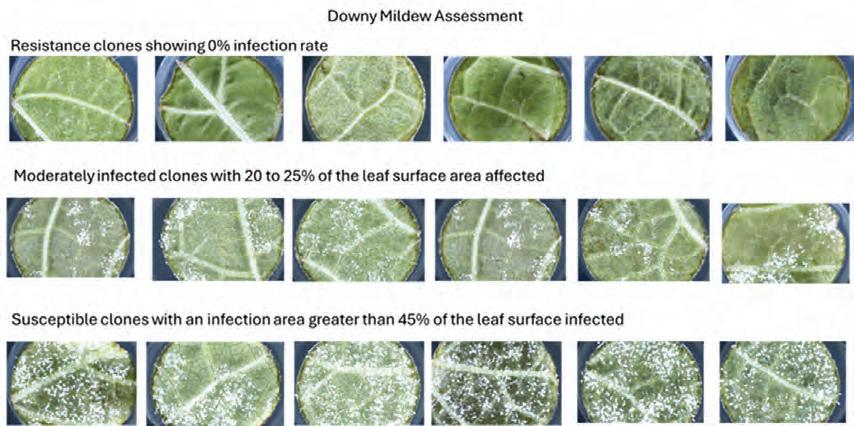

shipment to the USDA facility in Geneva, NY. Upon arrival, 2.5 cm leaf discs were cut from the leaves for leaf disc bioassays. These discs were exposed to P. viticola sporangia and E. necator spores to gauge infection rates. Disease severity was assessed using high-throughput robotic systems, measuring at 6 days postinoculation (dpi) for downy mildew and 10 dpi for powdery mildew.
Results
The study found that 45% of the clones demonstrated resistance to downy mildew, with less than 5% of the leaf surface area infected. For powdery mildew, 5% of the clones
showed resistance with less than 5% leaf area infected.
Conclusion
The pilot-scale study demonstrated that a large population of plants could be efficiently screened to assess phenotypic resistance or susceptibility to both downy and powdery mildew. We intend to utilise this technology to screen all 10,000 clones generated in the Sauvignon Blanc 2.0 Programme at different stages of physiological growth in the coming years. Collaboration with the USDA is ongoing to adapt the robotic phenotyping technology to New Zealand conditions, aiming
to integrate these advancements into New Zealand’s Grapevine Improvement Programme.

About the programme:
The Sauvignon Blanc Grapevine Improvement Programme is a seven-year research initiative supported by the Ministry for Primary Industries Sustainable Food and Fibre Futures Fund, New Zealand Winegrowers through the industry levy, and various industry participants.
Soil is recognised for its influential role on both grape quantity and wine quality. While some soil properties are inherent to a location (e.g., soil depth, soil mineralogy, texture), other properties are more dynamic and can change depending on management decisions. For instance, soil fertility, soil water content, and soil structure can be changed intentionally (i.e., adding compost) or unintentionally (i.e., compaction under trafficking). To maintain the health and function of soils, several interrelated chemical, physical and biological processes are important, and this has prompted a need to consider a wider set of soil indicators beyond more traditional measures of soil water content and fertility alone. However, currently there is no consensus on the recommended process for measuring soil health including the most appropriate indicators to use. Furthermore, there is a lack of clarity about what are soil health building practices and the relative efficacy of one practice over another. Bragato Research Institute (BRI) conducted a survey approach to identify practices that are being used by growers across New Zealand to build soil health so we can begin tackling these challenges.
A survey questionnaire was completed by 110 growers across 10 grape growing regions of New Zealand and a series of more in-depth interviews were conducted with a subset of 27 growers across seven regions. This article summarises the results from the survey and provides an overview of the work BRI is conducting in subsequent stages of the Soil Health Programme. The survey was distributed in digital

format during October and November 2022. Survey respondents worked on vineyards that were well distributed across small (i.e., <10ha) to large (> 20 ha) properties and comprised predominantly those that grow and make wine to sell under their own label (61) relative to those that grow grapes to sell (29%) or produce bulk wine (10%). Respondents identified their agricultural approach as sustainable (24%), conventional (20%), organic (20%), regenerative (17%) or other (8%). It is acknowledged that participants that took part in the survey tended to have an existing focus on soil health which prevents generalisation of the findings to all winegrowers and wine industry.
Soil health has been a focus of the winegrowing industry for a long time but there is a possible growing interest in recent years. When growers were asked how important soil health was to them, 96% of respondents indicated that it was important or crucial.
Important reasons why growers were adopting soil health practices were to:
• solve production problems (e.g., alleviating soil compaction, improving water retention and preventing erosion),
• improve soil function (by improving soil biological activity and nutrient availability/cycling),
• increase profitability (by maintaining/increasing yields),
• improve grape quality or reduce inputs (e.g., pest and disease mitigation),
• increase weed control, thus reduce need for herbicides,
• increase insect habitats and activities (bees, native wasps, etc.), boost worm numbers and provide a home for predators,
• ensure longevity of the vineyard over several years (by ensuring soils remain productive),
• align with their personal values/ support employee well-being.
Common concerns of growers when considering soil health practices were the financial risks and a lack of staff
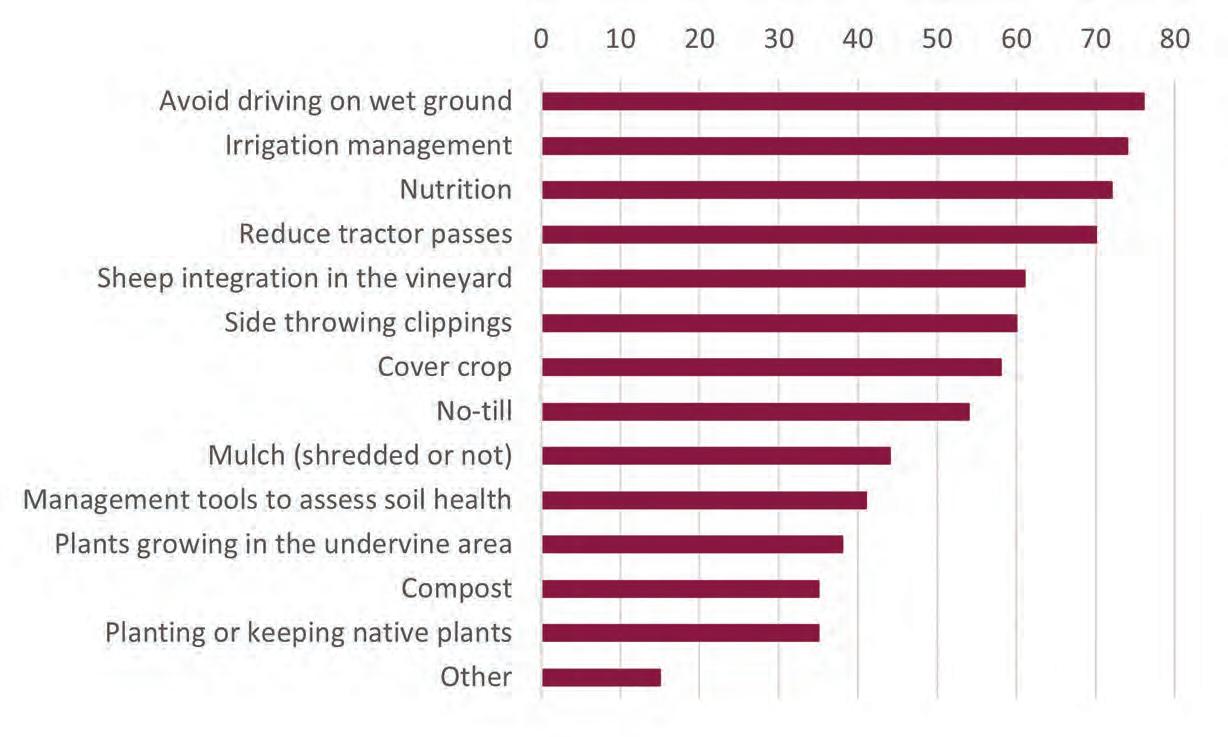
capacity. Knowing how to implement practices most effectively was also highlighted. For instance, initial investments into new equipment or materials such as compost or irrigation can be both expensive to purchase and labour intensive to spread, this is particularly evident for undervine management practices such as sowing and mowing. Difficulty to convey a strong value proposition for soil health practices was also seen as an adoption barrier especially when changes may be accompanied by lower yields, reduced wine quality (due to increased vigour), increased operating costs or the creation of an impression that vineyards looked ‘unkept’.
Soil health building practices used currently on NZ vineyards
A large proportion (96%) of respondents indicated that they were currently applying soil health building practices to improve or maintain soil health. A list of these practices along with their adoption frequency amongst respondents are provided (Figure 1). On average respondents
were applying seven practices within the vineyard.
The survey indicated that conventional growers tended to favour nutrition and irrigation management over other practices, cover cropping was most common amongst the organic growers while regenerative and sustainable growers were most likely to use cover crops, nutrition and no till practices. Generally, most survey respondents (76%) were avoiding driving on wet soils and were managing their soil nutrition and applying irrigation. These three practices were also ranked most likely to be successful for improving soil health (or preventing its decline i.e., in the case of avoiding trafficking wet soils).
From the survey results it is difficult to determine what linkage was expected between irrigation management and soil health. For instance, most vineyards rely on irrigation to supplement rainfall and therefore it is a common practice. However, irrigation does not necessarily increase soil health, yet
management may be used to avoid compaction, manage weed growth or reduce evaporative losses (i.e., in the case of subsurface irrigation). Similarly, applying nutrients is commonplace (72%), and it is difficult to decipher specific practices that target improved soil health. In general, interviews conducted with winegrowers identified a notable desire to reduce synthetic fertiliser inputs in favour of organic amendments and fertilisers. A list of organic amendments and fertilisers that are applied in vineyards in New Zealand (Footnote of Table 01).
Soil health practices used in vineyards across NZ and the perceived benefits and challenges of their implementation
Survey respondents were asked what soil health practices they currently use or would like to use along with the benefits they expected to gain from implementing them and the challenges, or reasons why they would not implement certain practices. This information has been summarised in Table 1. It was evident from the survey
Avoid driving on wet ground & reduced tractor passes
Irrigation management1
No or reduced tra4icking
Interest in dry vineyards and subsurface irrigation
Nutrition1 Shift to organic or biological inputs2
Sheep integration in the vineyard
Sheep grazing vineyards
Avoid soil compaction that a4ects microbes & water retention.
Avoid surface soil damage (so maintains water infiltration).
Increase soil water retention (subsurface irrigation)
Increase profitability
Reduction of synthetic inputs
Increase nutrient availability
E4ective weed control (reduces mowing frequency & herbicide use)
Nutrient returns in manure
Cover crop Types of plants incl. 1) diverse crop mixes, 2) legumes, 3) cereals, 4) swards or 5) brassica
Perennial or annual
Sowing practices vary
Mowing, crimping, rolling, or cultivation for termination included 1) diverse crops, 2) legumes, 3) cereals, 4) swards and 5) brassicas.
Mulch (shredded or not), incl. side throwing clippings
Applied under-vines.
Made with vines, mushrooms, crushed shells, grape marc or interrow crops/grass that is mowed using side-throw mower
Compost Applied under-vines. Purchased or manufactured on-site. Applied as a solid product or a liquid suspension (tea). Made from grape marc or cover crops (via composting process)
Increase soil organic matter & species diversity,
Improve soil structure & water retention
Supress weeds & insect pest
Improve aesthetics and sta4 wellbeing.
Increase profitability via higher yield, marketing or diesel usage (reduced mowing)
Prevents weed growth under the vines (reducing the need for herbicide)
Increases organic matter
Balance nutrients and bu4ers acidity
Beneficial to microfauna
Improve water retention and evaporative losses
Increase organic matter, microorganisms & nutrient cycling under-vines
Improve soil structure and water retention in the undervine area
Di4icult to avoid driving on wet soils at certain times of the year. Less frequent mowing can increase competition from weeds
Expensive to implement (subsurface irrigation)
On-going costs
Promotes competition between under-vine cover crop & vine
More soil compaction (esp. winter)
Labour requirements
Pastoral expertise needed Damage to vines
Damage to infrastructure
Sowing window a4ected by harvest (autumn) or wet soils (autumn/spring)- consequently timing can be suboptimal.
Lack of knowledge
Lack of equipment
Cost
Increased risk of disease due to higher humidity
Expensive
Labour intensive to make & spread Benefits not apparent across all winegrowers
of measuring soil health and its outcomes, and the lack of consistency among researchers and experts. While some indicators are used relatively consistently (e.g., organic matter, soil carbon levels) among winegrowers, there are no current key performance indicators that are used systematically in research or in vineyards. As a result, winegrowers might not be able to accurately assess the impact of a practice or capture the evidence that could be used to support decision making.
Labour intensive, Di4icult to source suitable compost materials, Expensive to purchase, transport and apply
Requires specialised tools to make & apply evenly under vines.
1 From the survey results it was not possible to determine specific practices undertaken so exact linkages to soil health were not possible. For instance, irrigation and nutrition do not necessarily increase soil health, yet their management may be used to avoid compaction, manage weed growth and reduce evaporative losses (i.e., in the case of subsurface irrigation) or maintain soil fertility within optimal ranges.
2A list of organic amendments/fertilisers used by respondents includes seaweed, calcium carbonate, eAective microorganisms, digester, manure, humates, fish hydrolysate, mycorrhizae, bacillus amyloliquefaciens, microbial amendments, fulvic acid added to herbicide.
that participants were uncertain about the trade-offs associated with implementing some practices. For instance, would a certain practice increase tractor passes over time, and therefore it might be negative, or not knowing how to maintain the diversity of cover crops when only a few of the species sown remained.
The type and the number of indicators used by winegrowers in vineyards informs the interpretation of their understanding of soil health. Survey respondents relied most heavily on biological indicators (that include
to their implementation.
organic matter, soil protein and worm numbers) and on their own instinctual indicators to evaluate the impact of soil health building practices (81% of respondents in both cases). The third most popular evaluation method among survey respondents was ‘knowledge and experience’, followed by physical indicators (66% and 64% respectively). Findings suggest that more guidance is required into ways to assess soil health and to monitor the impact of soil health building practices. As indicated, respondents often rely on instinct and observation to assess soil health and the outcomes of different practices. This might be because of the complexity
Findings from the study show that research participants are focused on above-ground assets and consider soil a means to an end. Accordingly, many value soil health and are working to improve it if it can directly benefit vineyard operations. However, a lack of clear guidelines and supporting information was a common barrier to adoption. A set of quantifiable key indicators to assess and benchmark soil health is needed as well as greater clarity around the purpose and benefits and trade-offs when considering soil health especially in the context of cost, resource management (e.g. nutrient cycling and water use) and vine performance.
We expect that decision-making could be supported by the creation of a platform where winegrowers would be able to select their location, soil type and potential issues that might be limiting vine performance, and that could inform them about recommended inputs and practices. Ideally this would include the financial costs associated with different practices (e.g., labour demands, number of tractor passes) and the estimated return on investment in the form of vine health and yield, grape and wine quality.
This project was led by Michelle Barry at Bragato Research Institute to assess what practices winegrowers use to improve soil health. It was funded by Bragato Research Institute.
Proudly NZ Made for over 30 years
Explore 35 years of spraying innovation at WinePro on the BA Pumps & Sprayers booth. Proudly New Zealand Made, our cutting-edge equipment includes Over Row Weed Sprayers and Vine Sprayers. Discover more about the BA Smart Sprayer featuring Smart Apply precision spraying
technology, revolutionising the way you spray, saving you time and money.
As the official Australasian distributor of COLLARD Vine Trimmers, Pre Pruners, and Defoliators, BA ensures top-quality tools for every aspect of vineyard care.



Talk to our team to see how to get a top-quality crop each season.


